The Cove – The Lots – Woodwell – Heald Brow – Clark’s Lot – Silverdale Green – Burtonwell Wood – Lambert’s Meadow – The Row – Eaves Wood – Castlebarrow
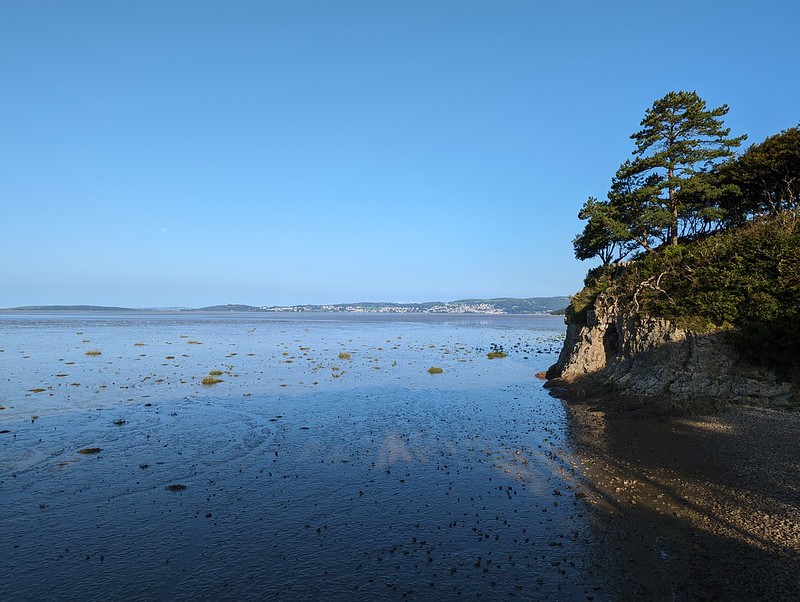
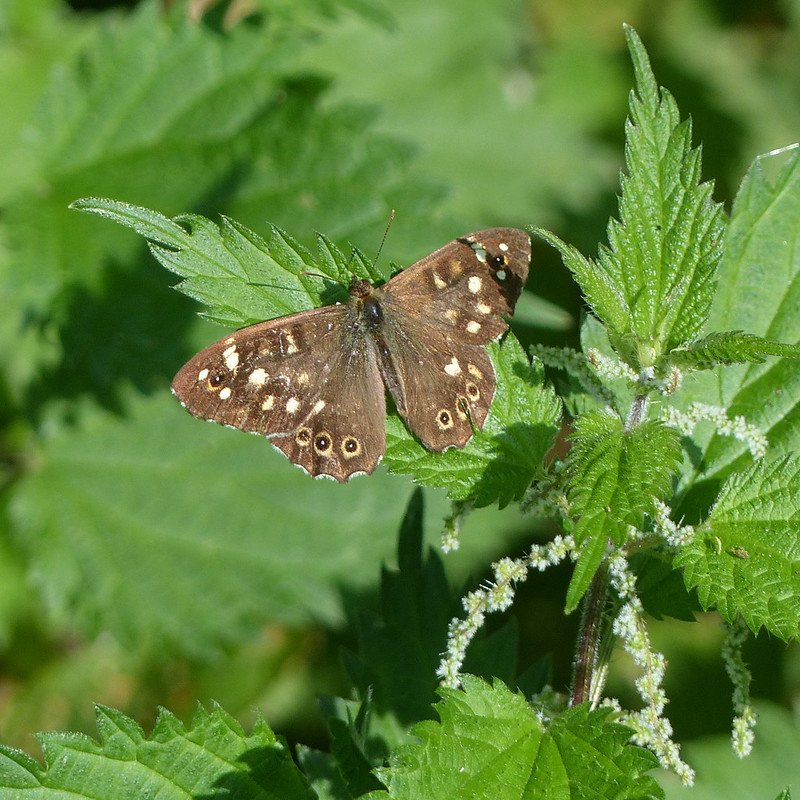

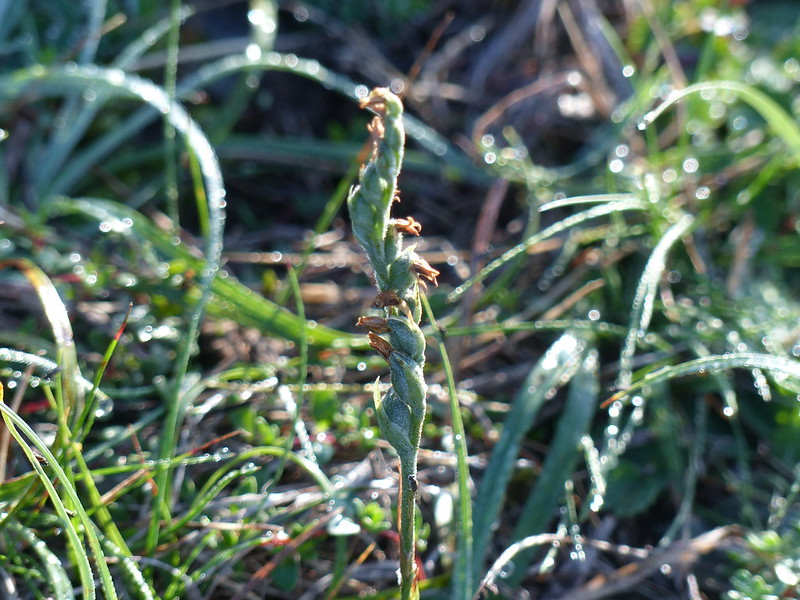
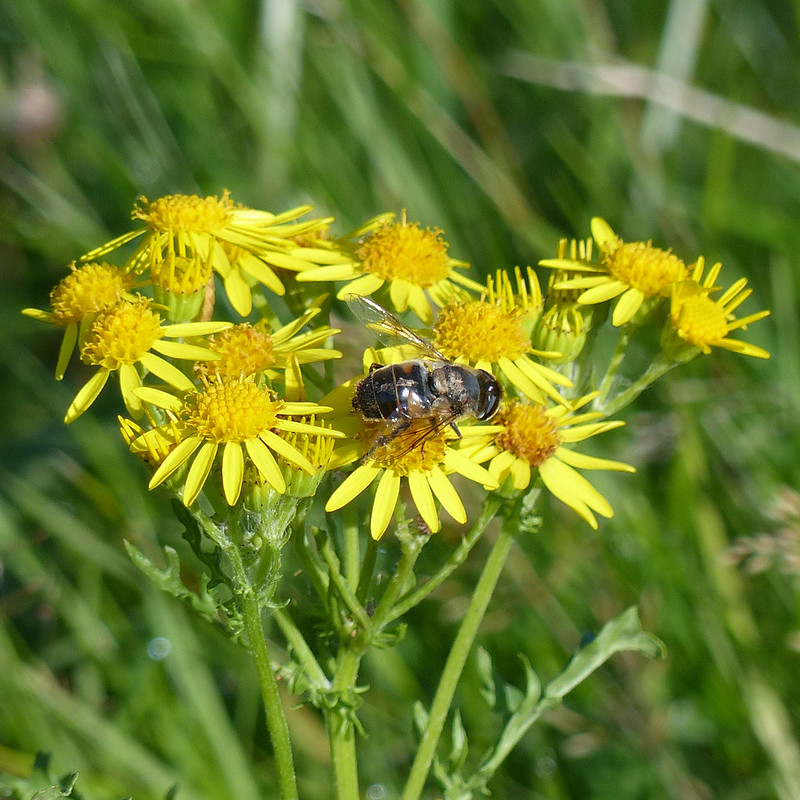
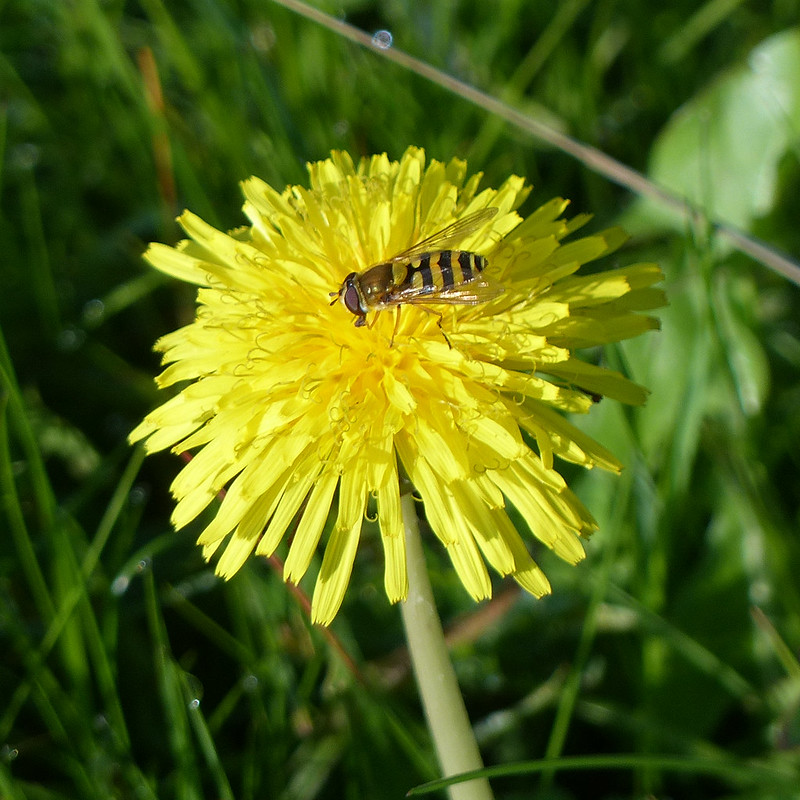
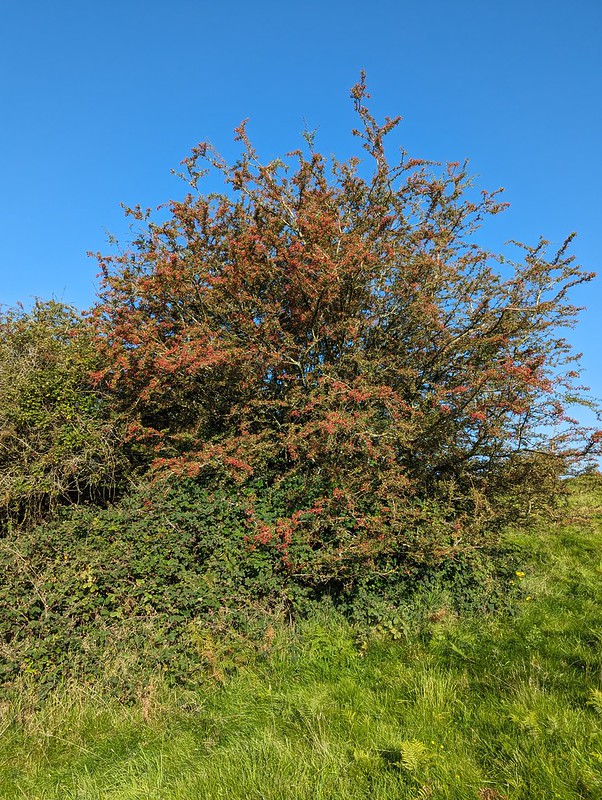
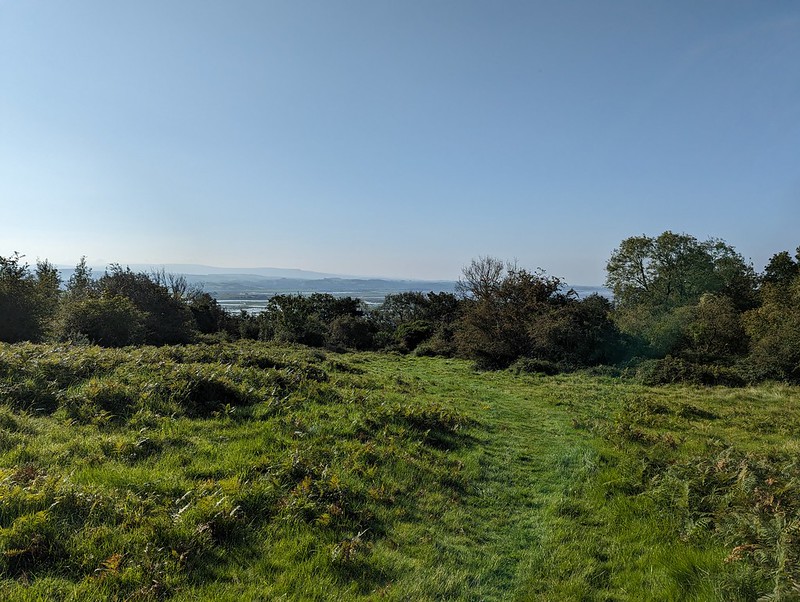
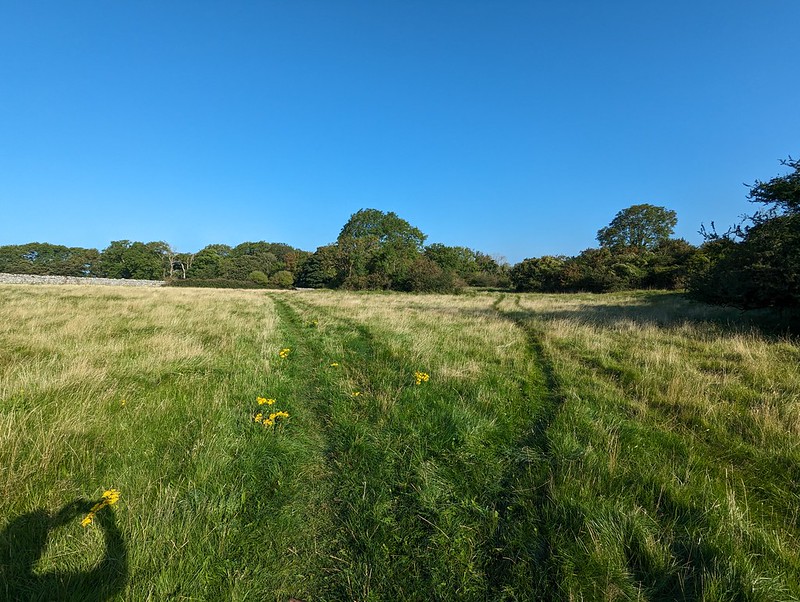

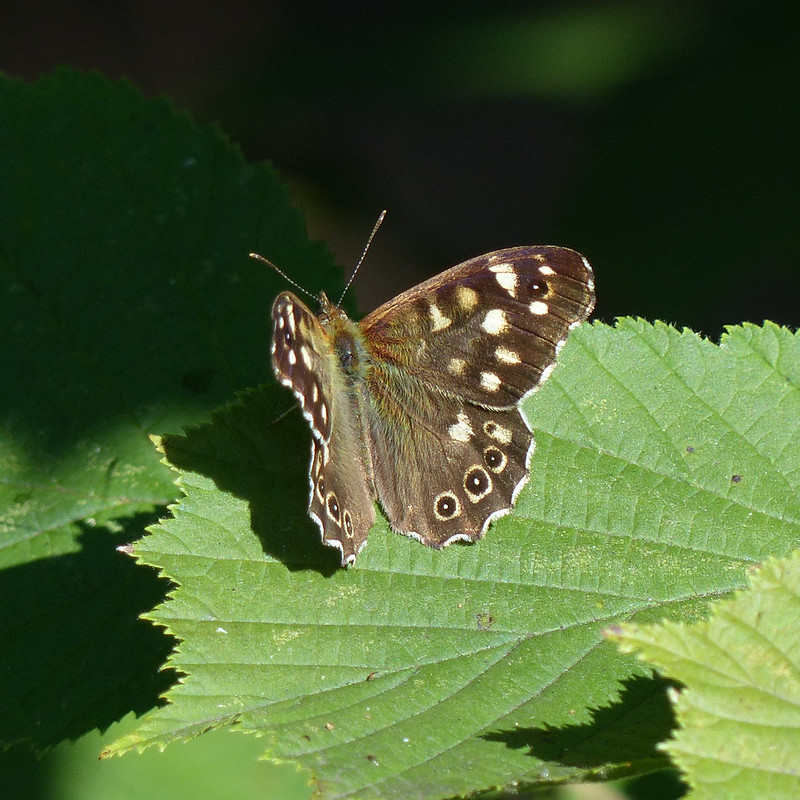
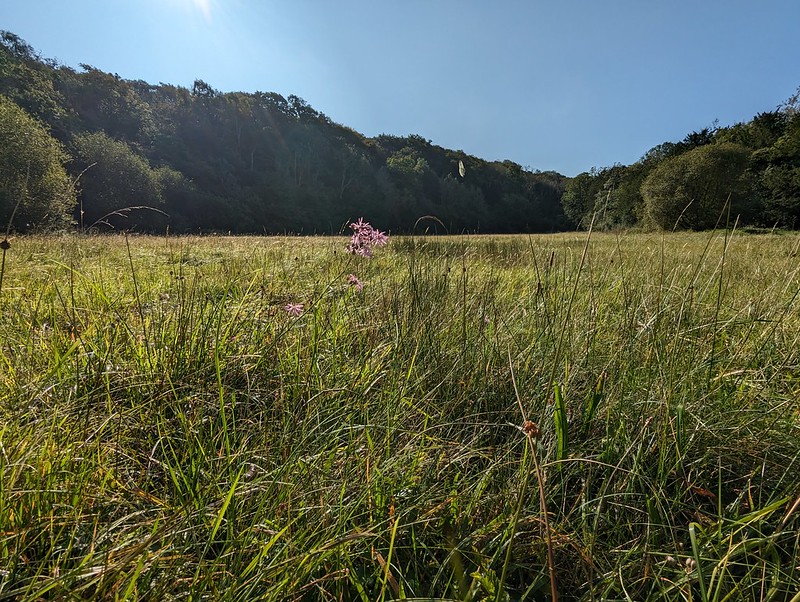

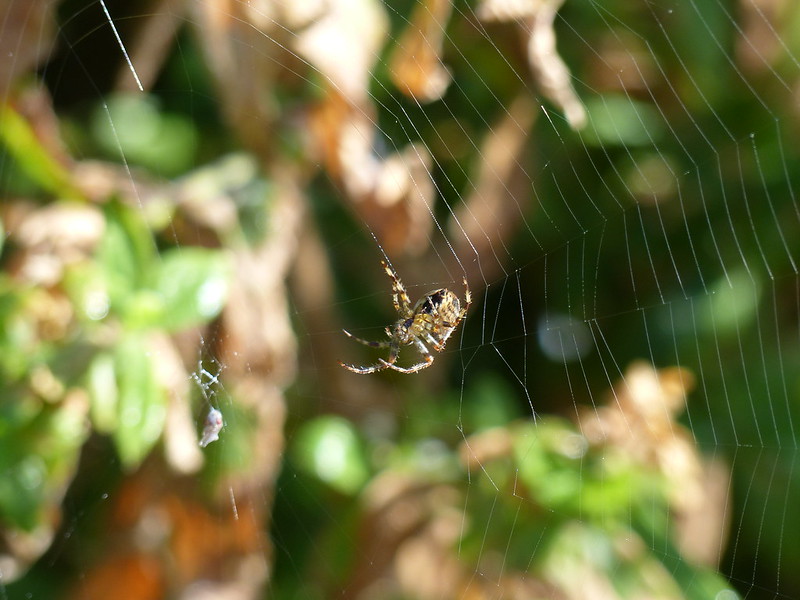

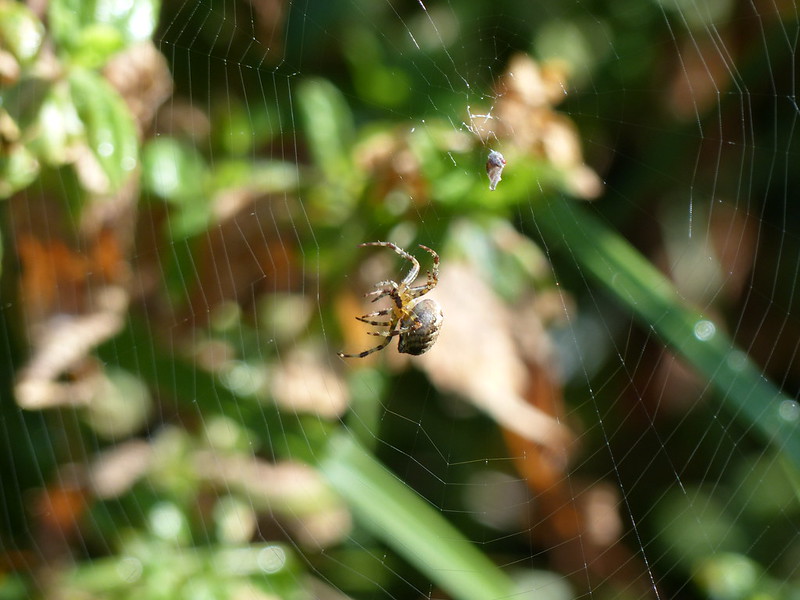
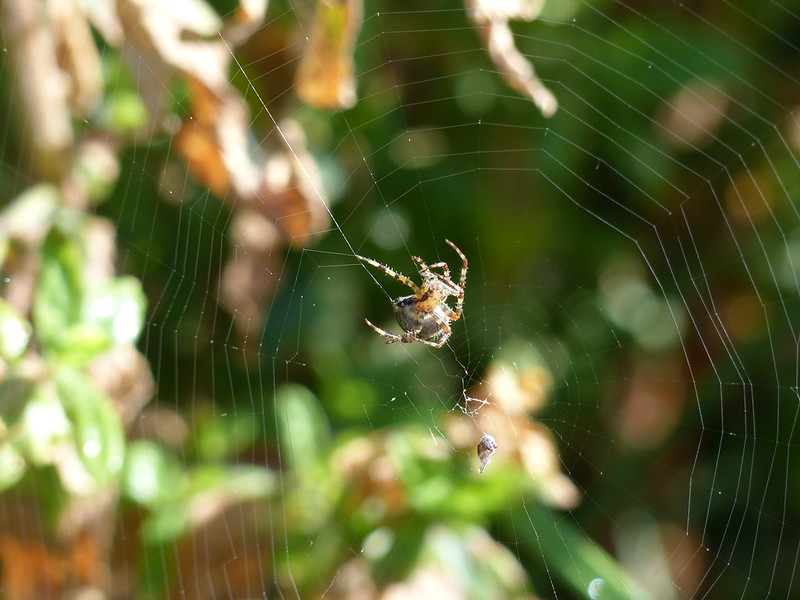
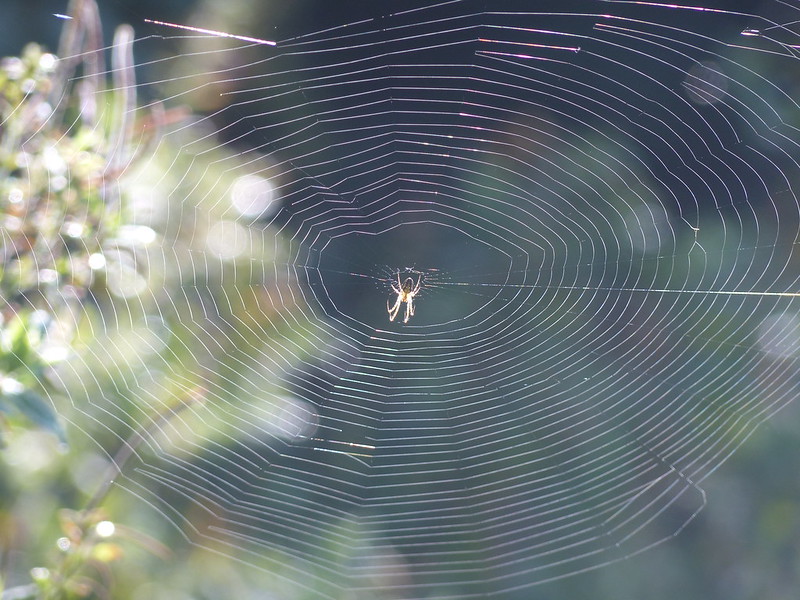
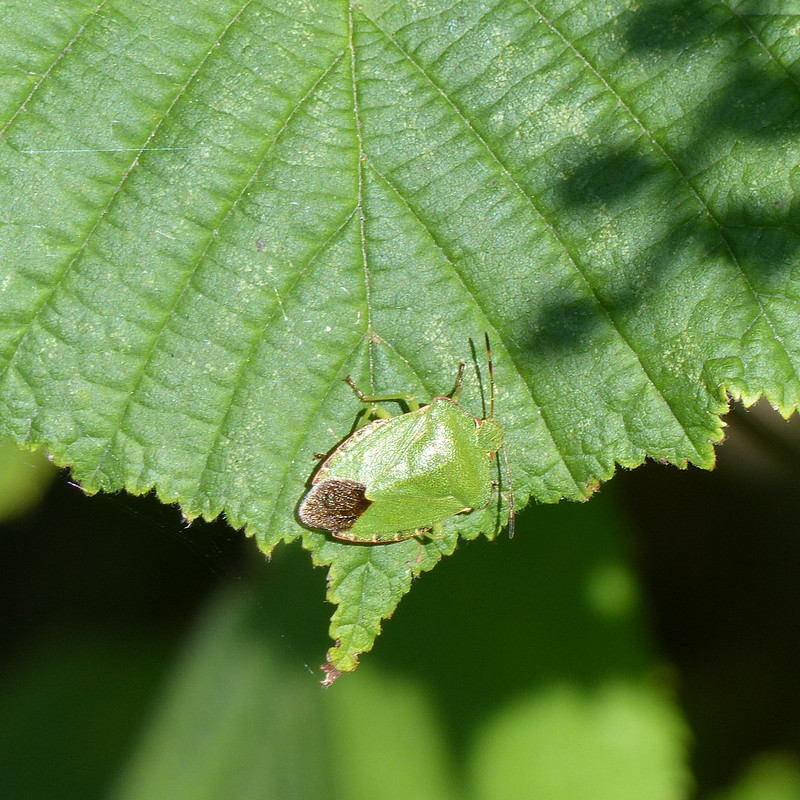
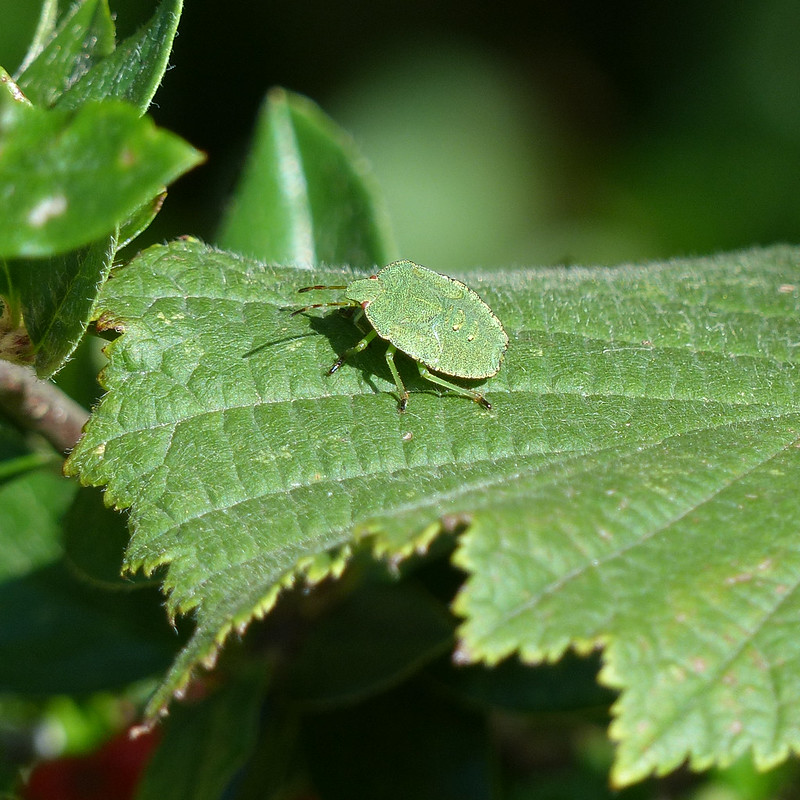
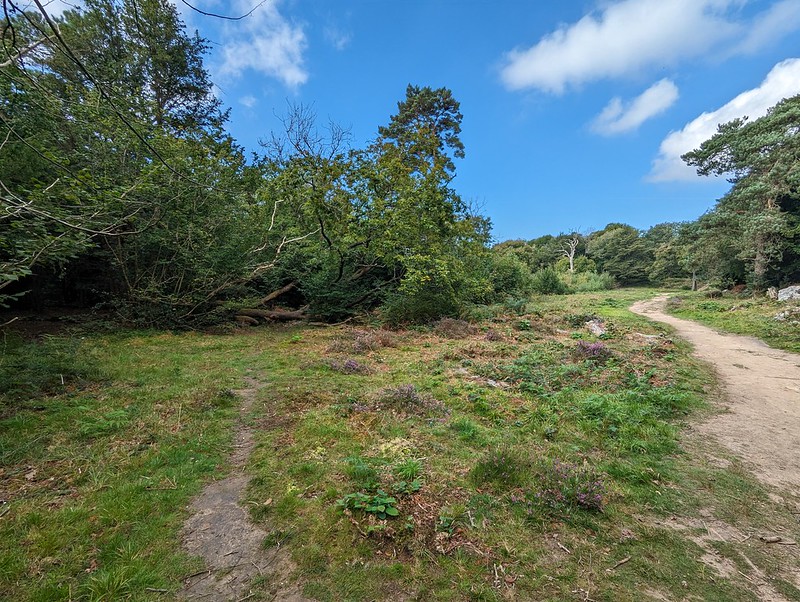
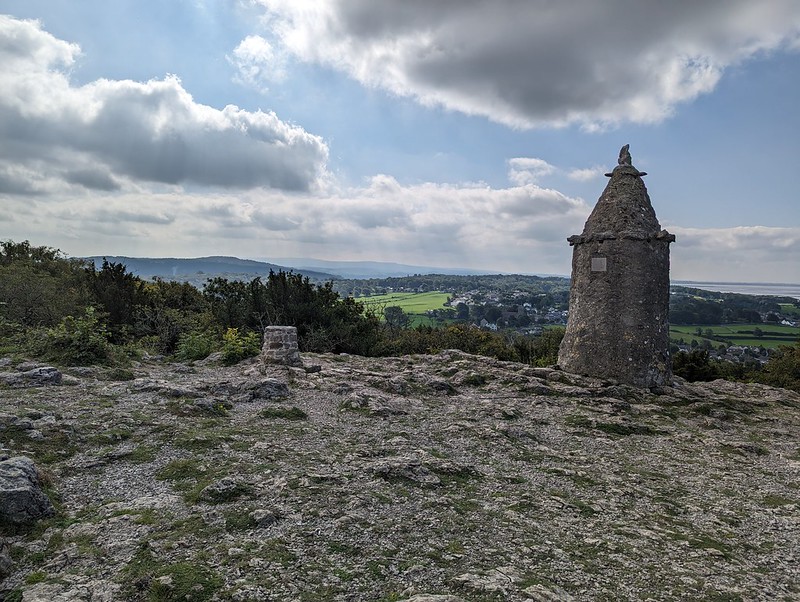
The Cove – The Lots – Woodwell – Heald Brow – Clark’s Lot – Silverdale Green – Burtonwell Wood – Lambert’s Meadow – The Row – Eaves Wood – Castlebarrow






















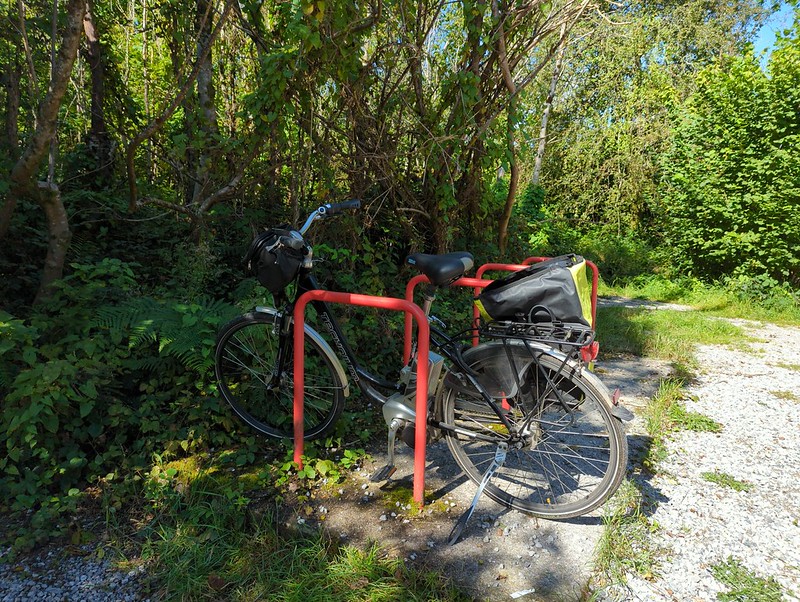
In brief, I cycled roughly three kilometres to the small car park at Gait Barrows National Nature Reserve, then had a very slow wander, of roughly three kilometres, then pedalled home again.
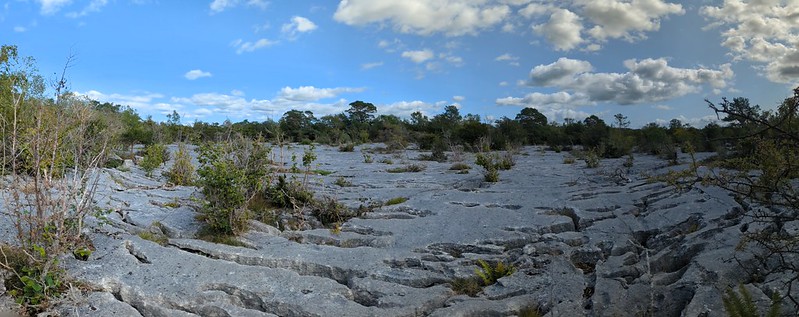
Since there’s not much more to say about this particular outing, a word about the tentative IDs.
Although I’m still surrounded by field guides when I’m blogging (and am eagerly awaiting the release of the 4th edition of a UK hoverflies guide), much of my research these days is carried out online.
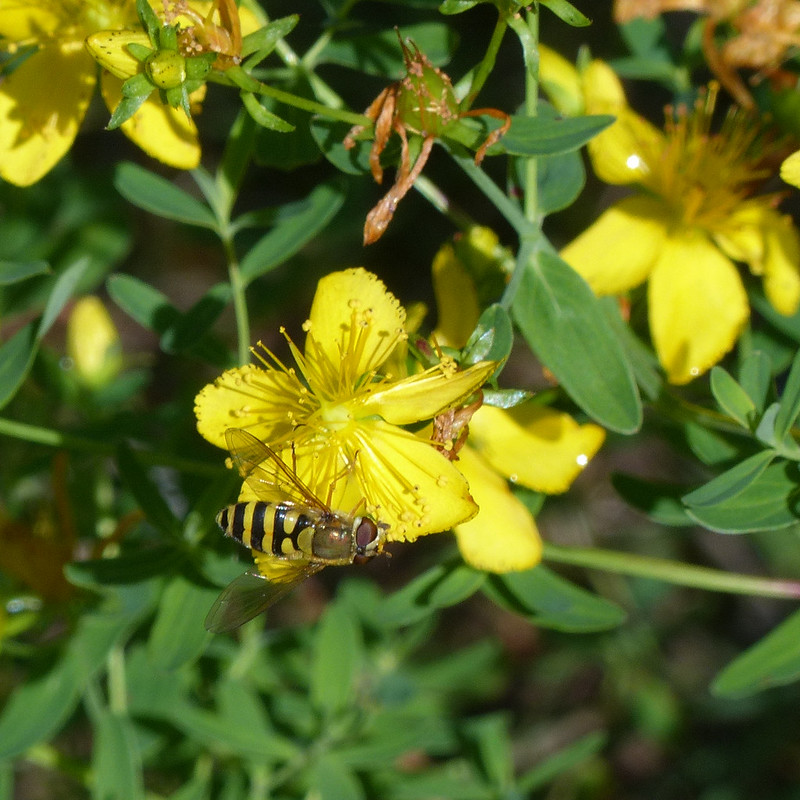
Google Lens often gives me a good start point. Sometimes it seems fully confident and offers me numerous images of the same species along with a related search. At other times, frankly, it might as well throw up it’s notional hands and admit that it hasn’t got a scoobie – showing images of several different species, sometimes of a kind which aren’t even related.
To be fair, according to the National History Museum website, there are over 7000 species of wasp resident in the UK. A little confusion might be expected.
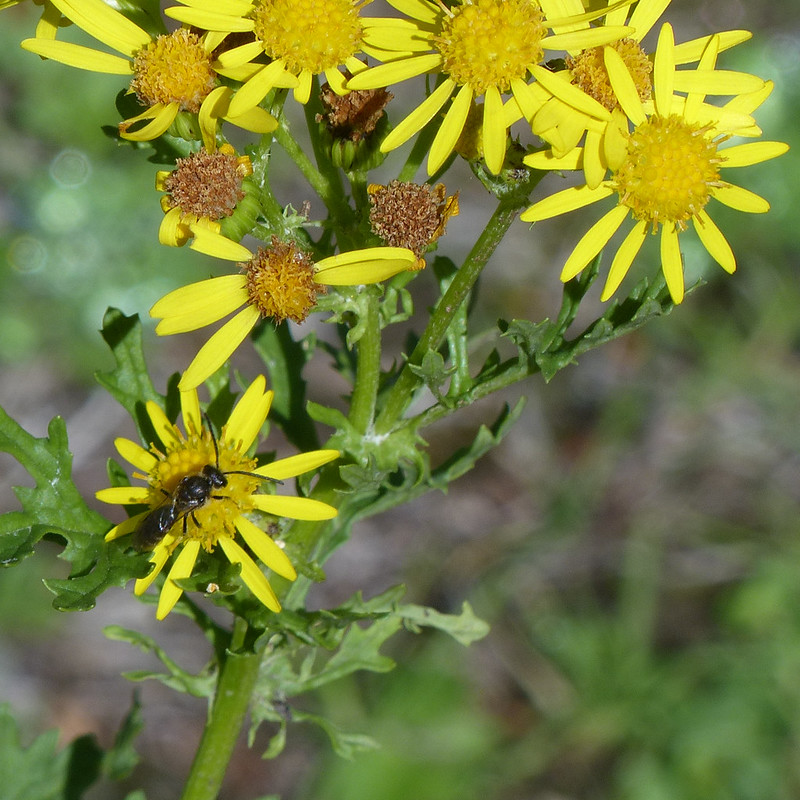
Even in the case of hoverflies, where there are a relatively modest number of species (around 280 apparently), making an ID can be very difficult. For example, I’ve identified a couple of the hoverflies in this post as Syrphus ribesii, but apparently the species Syrphus vitripennis is almost identical, barring some very subtle differences.
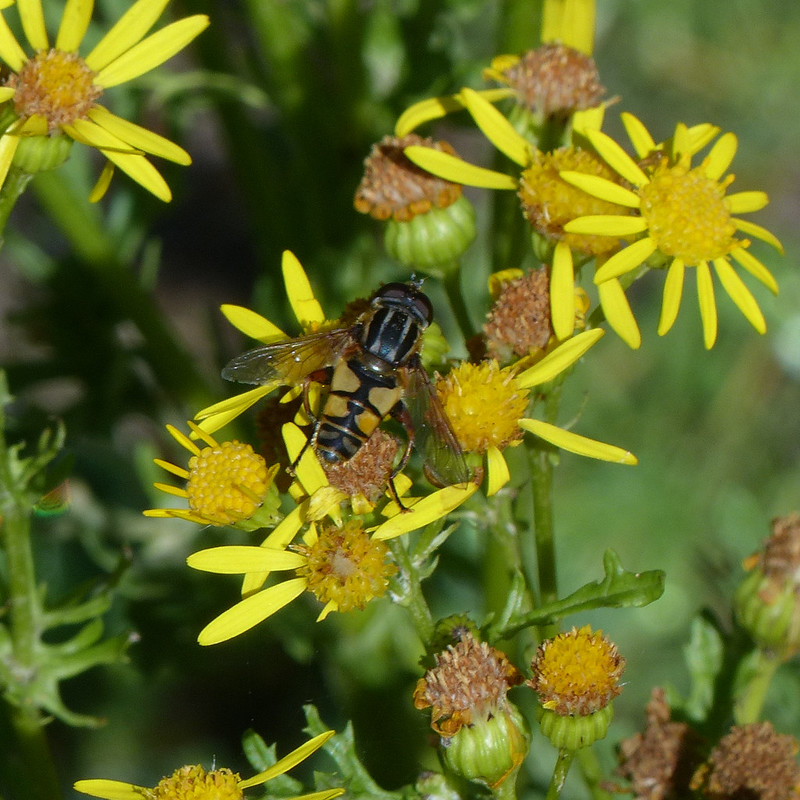
This information comes from the excellent Nature Spot website. Nature Spot is about the wildlife of Leicestershire and Rutland, coincidentally where I grew up, but is often relevant to my more northerly current locale. If I could find something as comprehensive specific to Lancashire and Cumbria I would be thrilled.
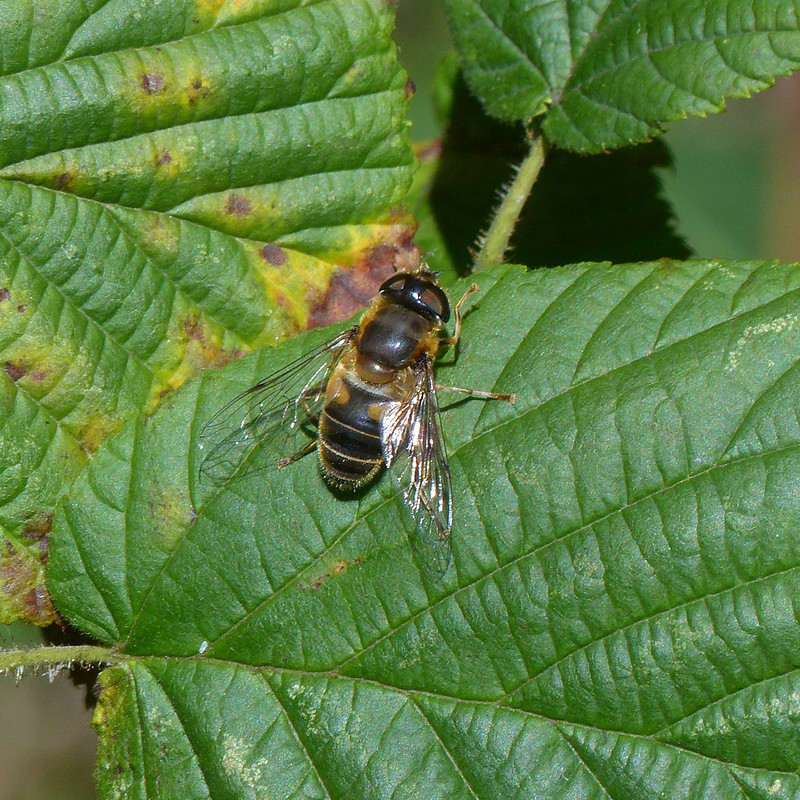
So, all of my identifications should be taken with an enormous pinch of salt. I’m well aware that I’m often going to be wrong, or simply clueless, but I’m learning all the time and I enjoy the detective work, even when it might lead to questionable conclusions.
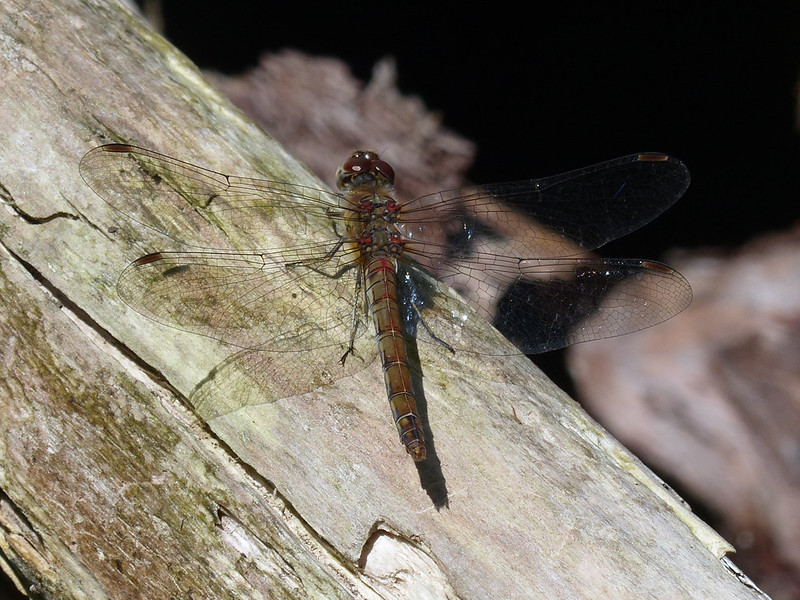
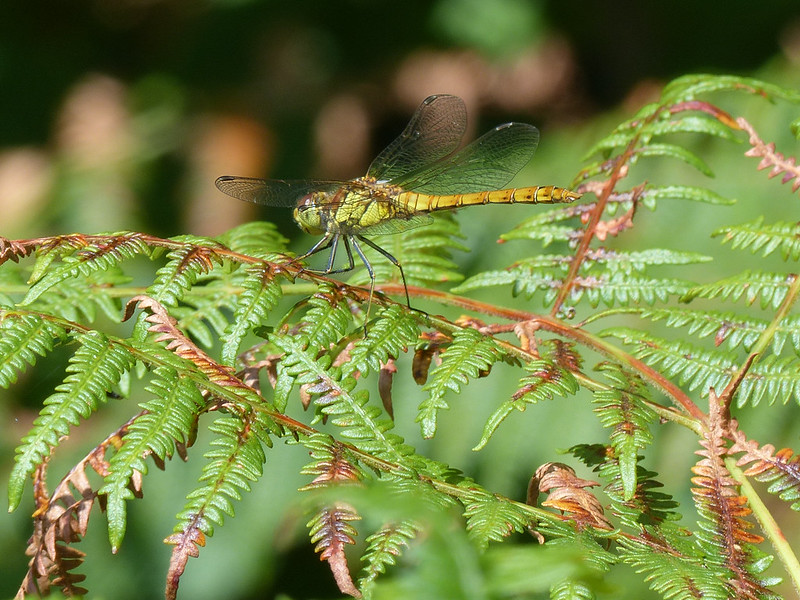
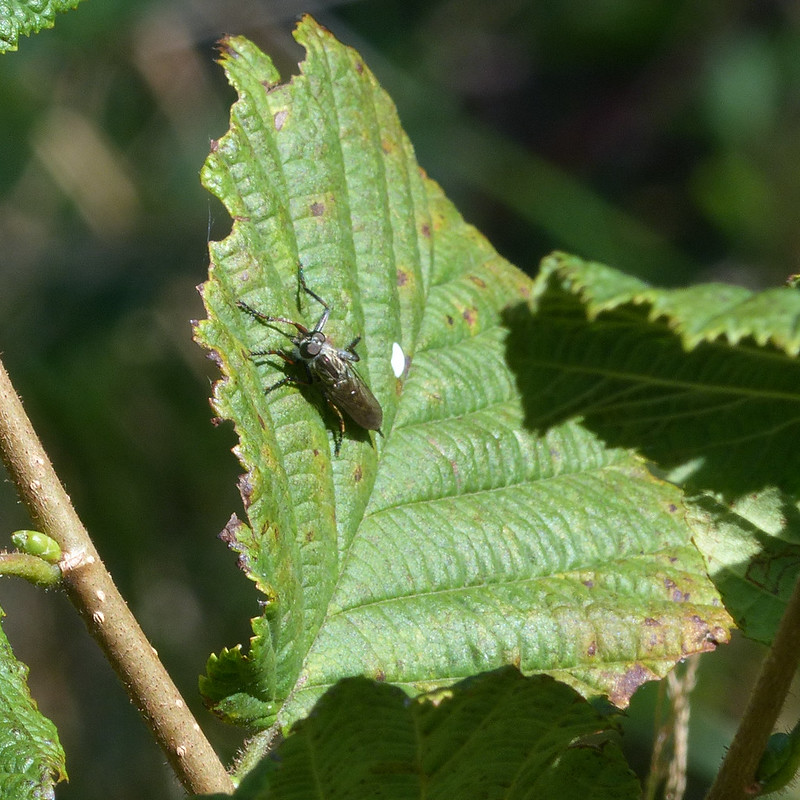
According to this detailed presentation, the UK only has 29 species of Robber Fly, so maybe that’s an area in which I could make some progress? To be honest, at the moment I’m content to leave it at ‘Robber Fly’. Last summer, I watched one of these intercept and kill a micromoth; they are awesome predators.

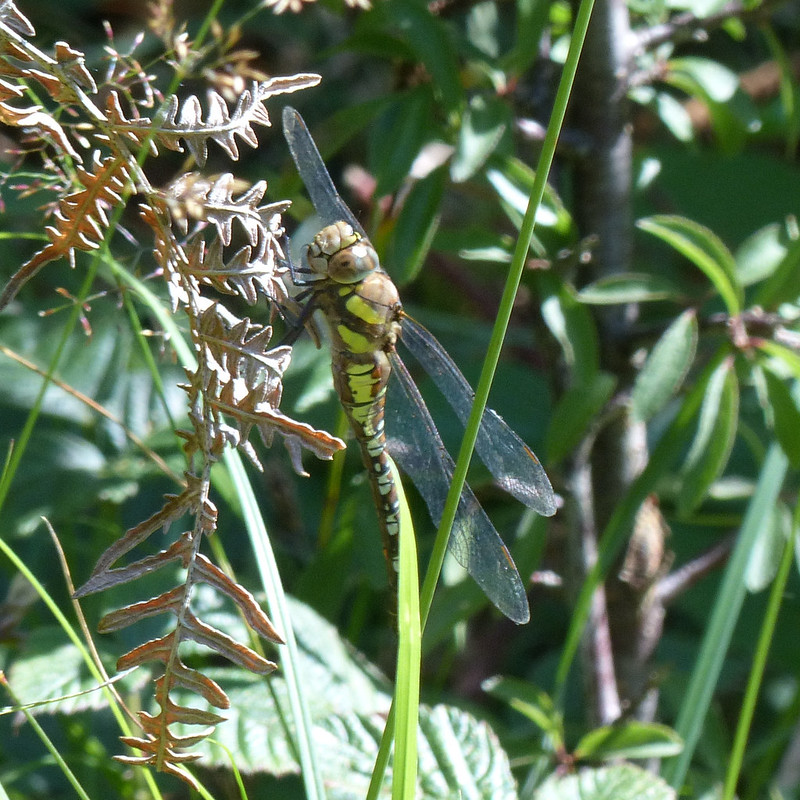


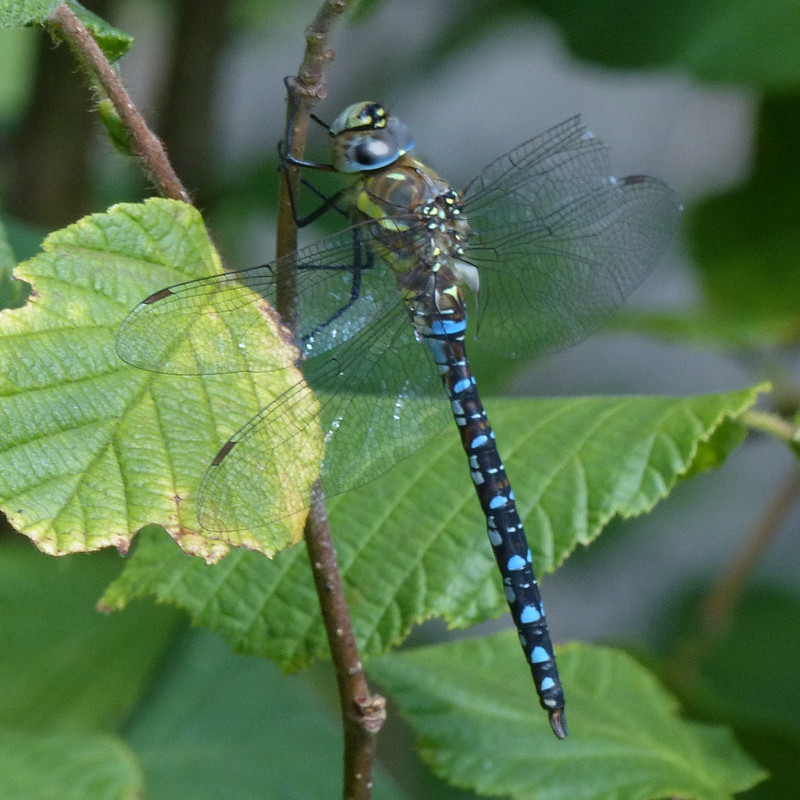
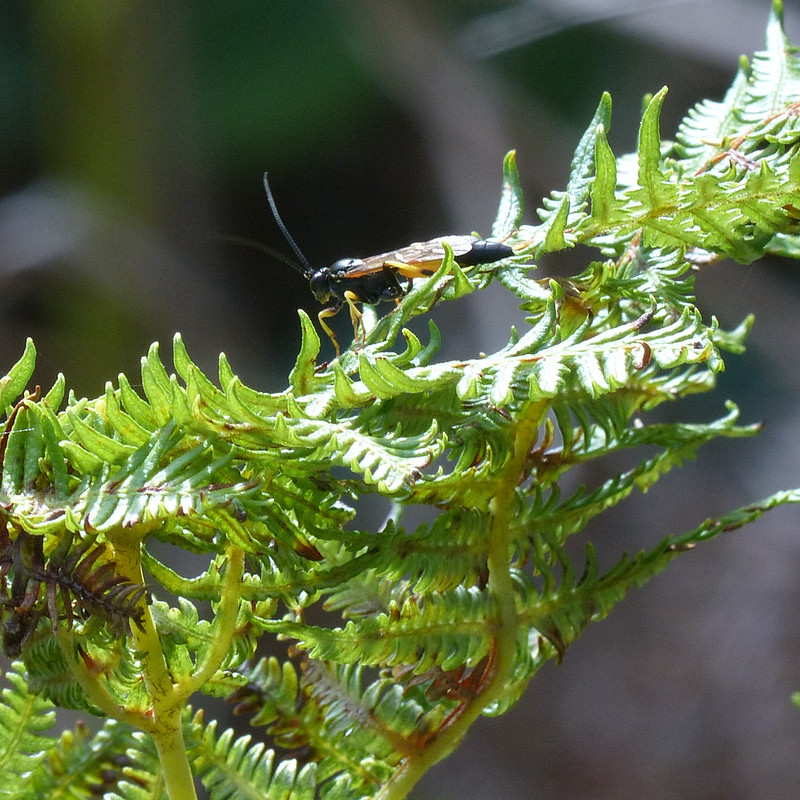
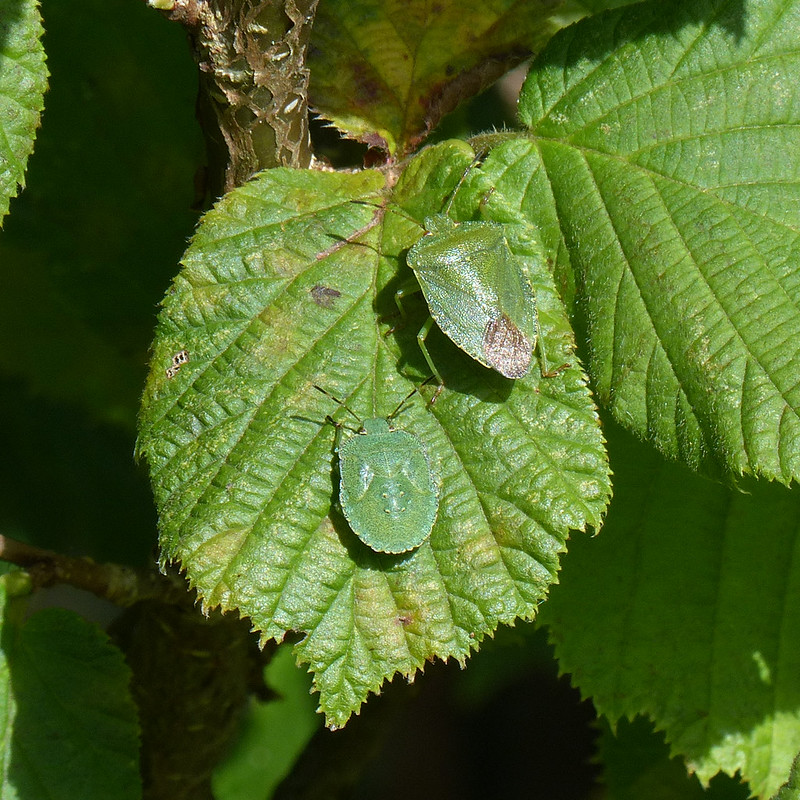

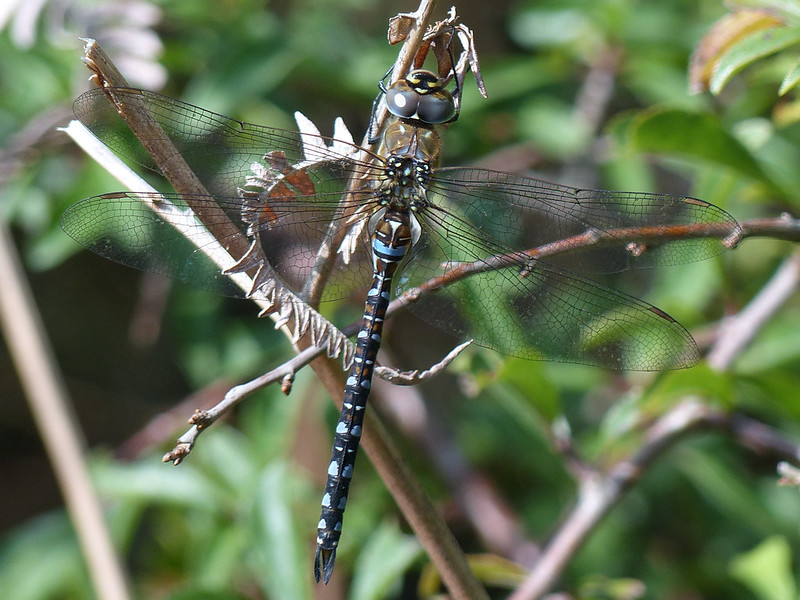

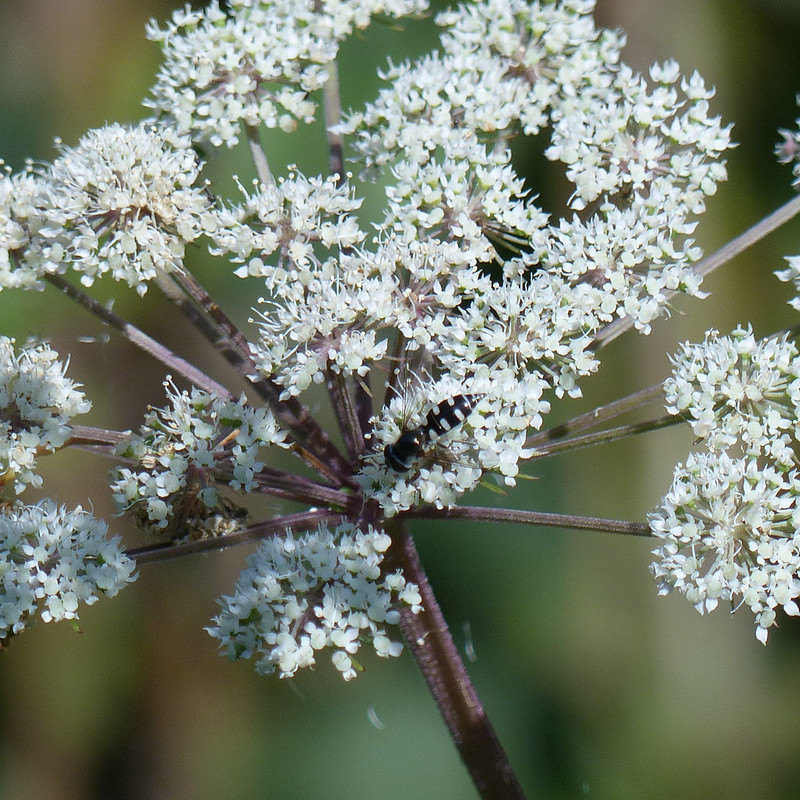
Many hoverflies are mostly black and yellow, but I do often see these small black and white hoverflies. I’m less successful and capturing them in photos though, so was happy to get this one.

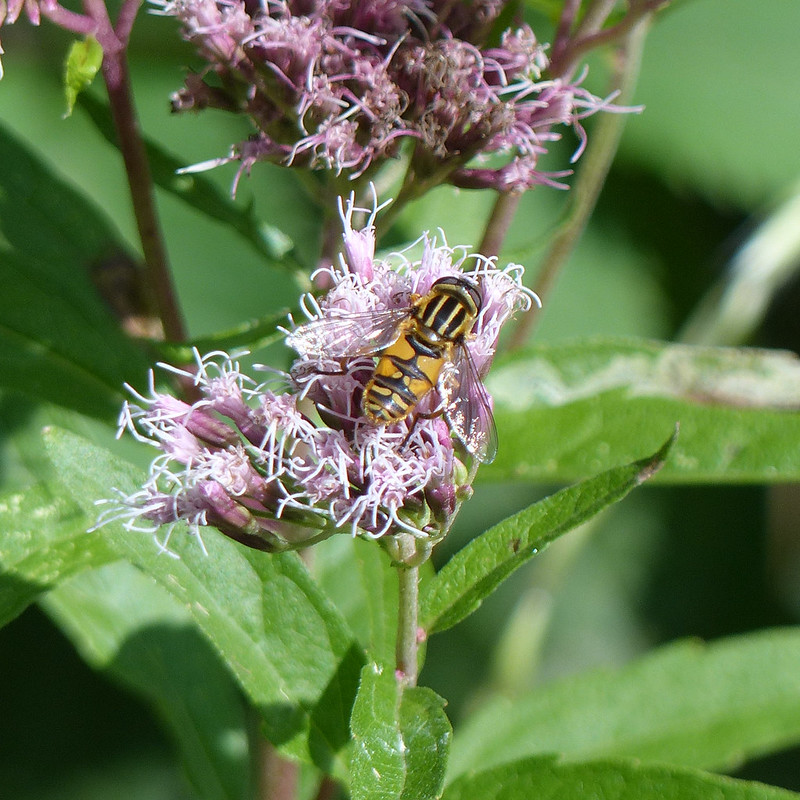


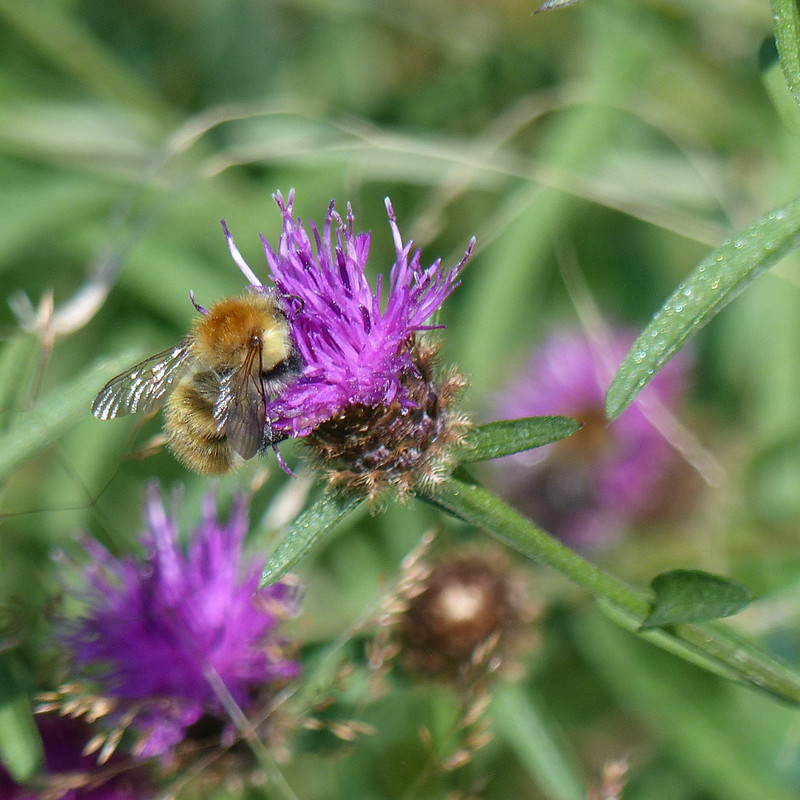



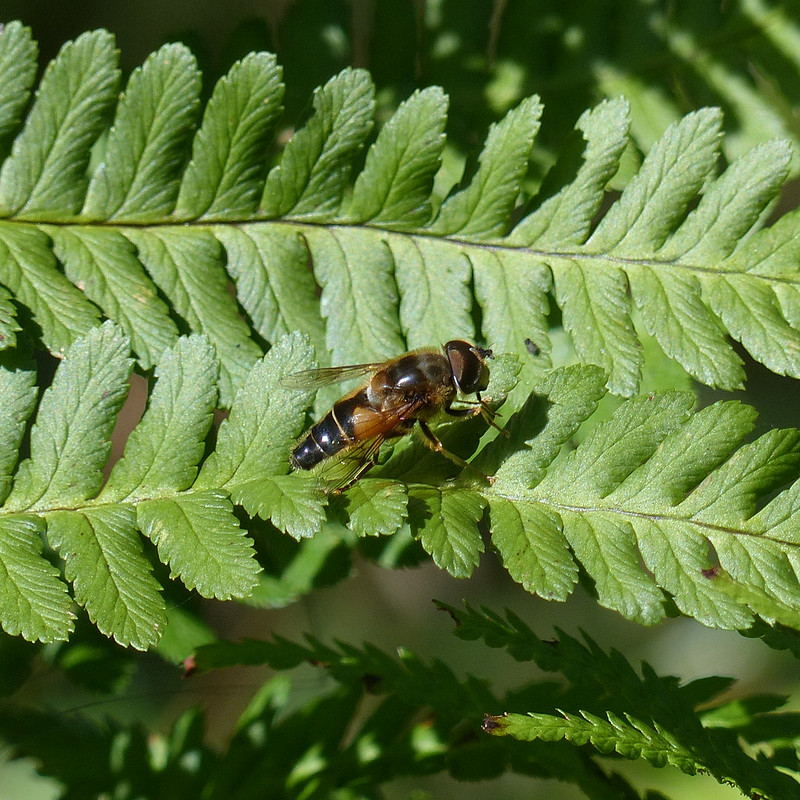
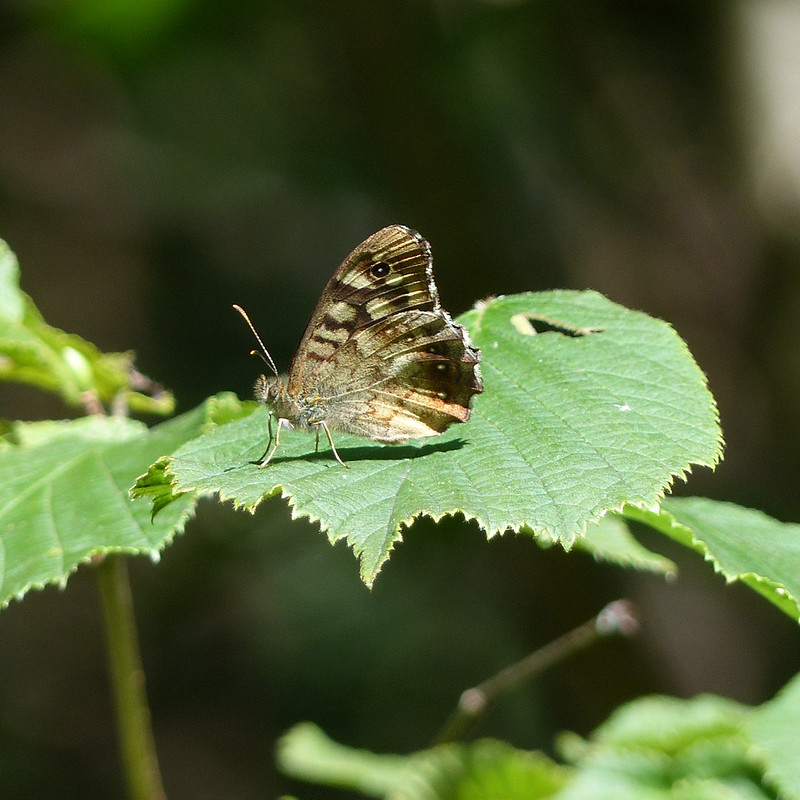
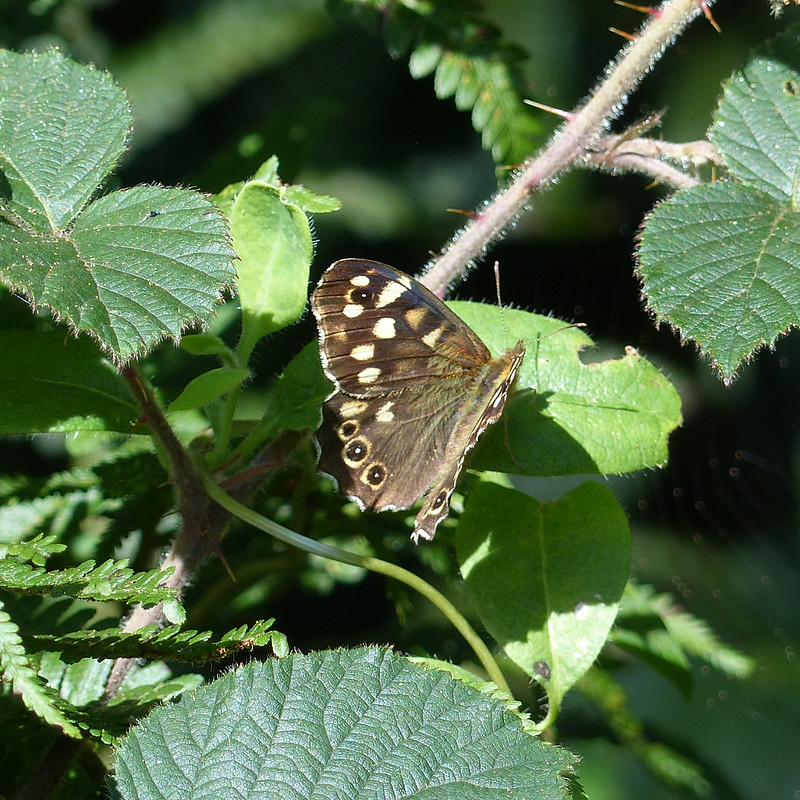

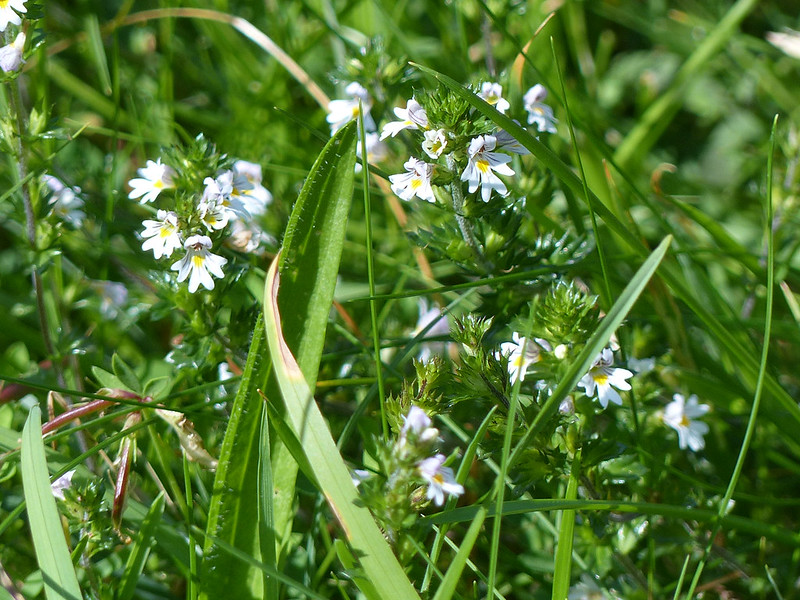



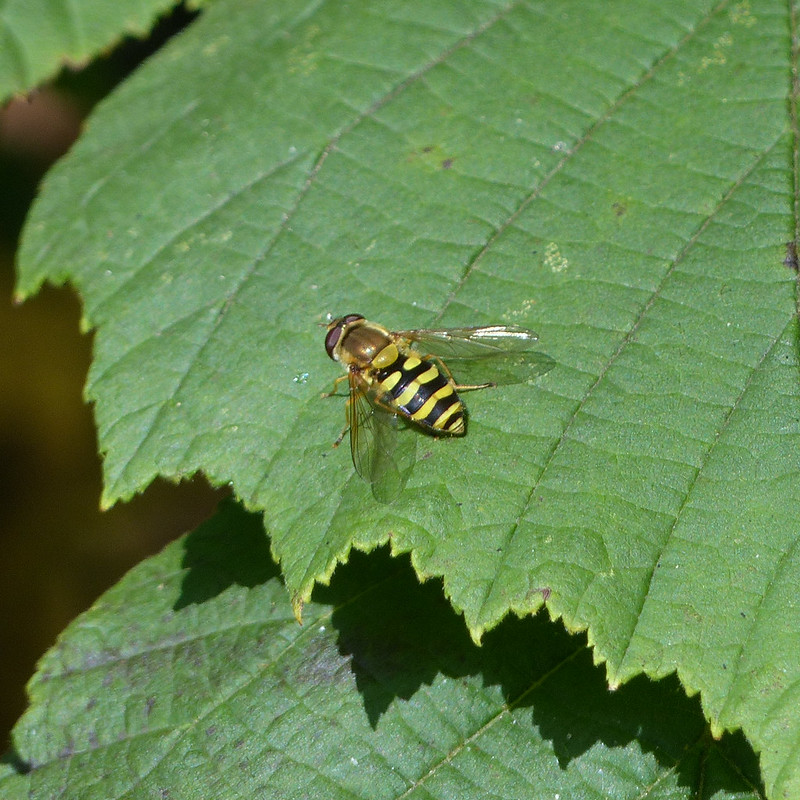




Whilst these photos are all from the tail end of last summer, I’m happy to report that on Tuesday afternoon, the rain paused briefly in its recent onslaughts, and I was back at Gait Barrows, in glorious spring sunshine snapping photos of shieldbugs, butterflies and particularly abundant hoverflies. Marvellous.

Two more local strolls from the back end of August. The first was a quick trip to The Cove and around The Lots, with TBH, but since she wasn’t ready to leave the house when I was, I first walked across the fields to Stankelt road and around Clark’s Lot first.

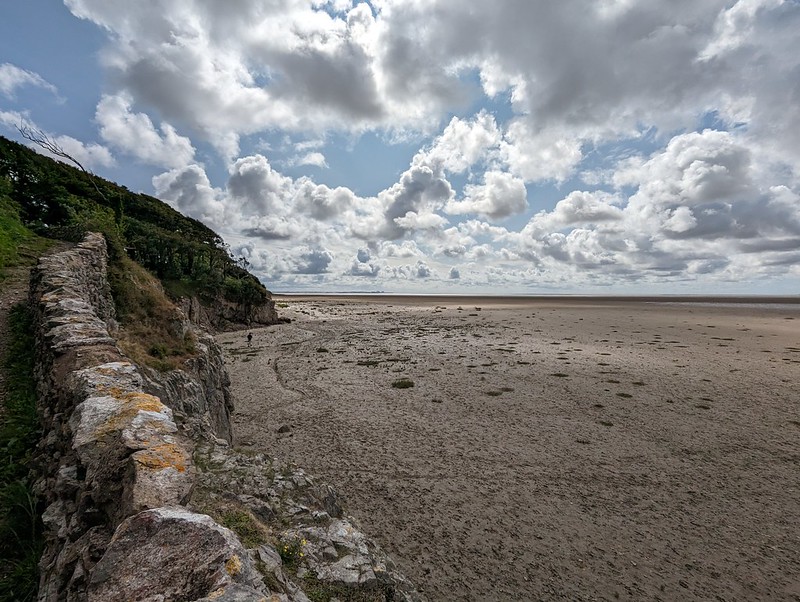
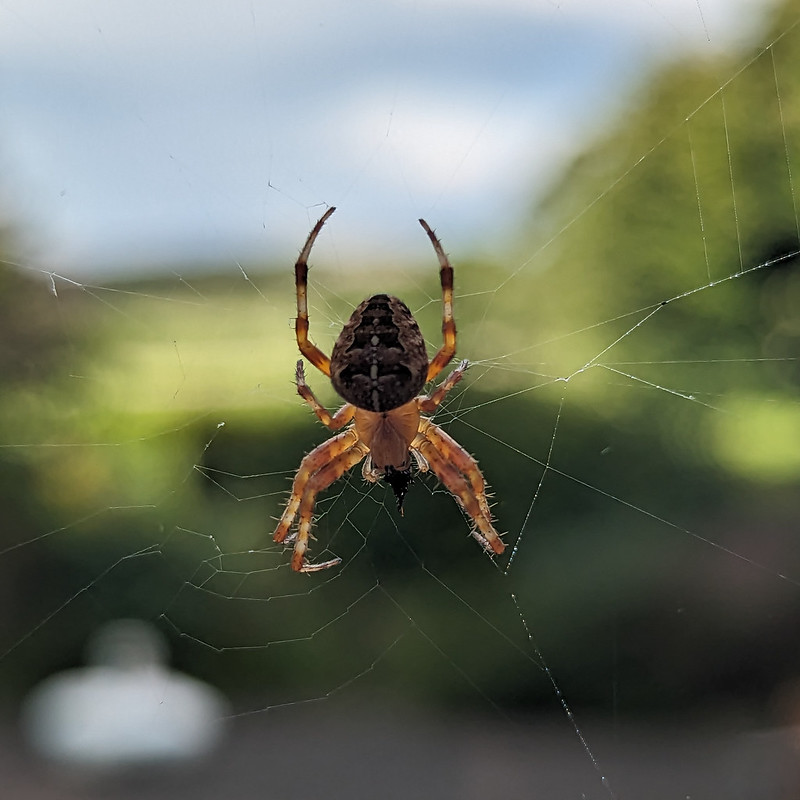
This spider was in our garden, but only just, hanging just beyond one of our kitchen windows.
The following day I walked our circuit around Jenny Brown’s Point, but had a mooch around Lambert’s Meadow first. This slight path runs around the eastern edge of the meadow…
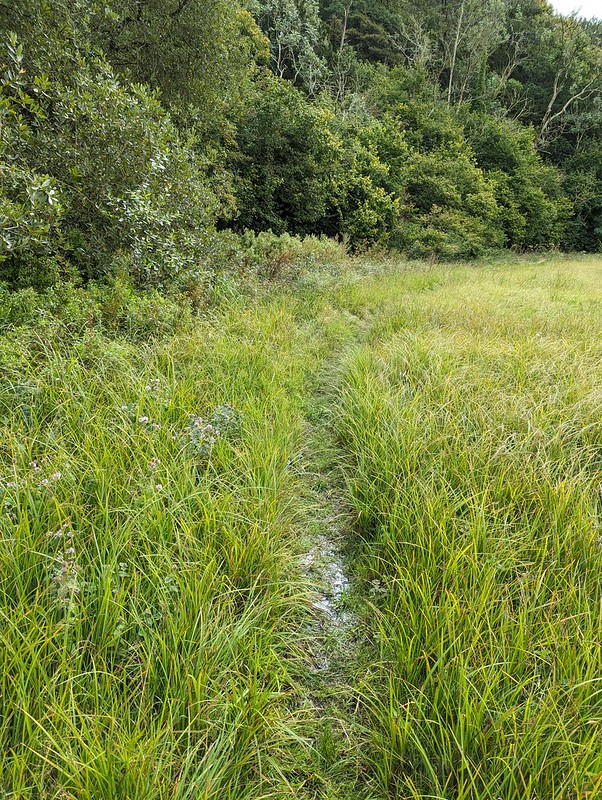
It’s where I take most of my photos – you can see here that’s it under a couple of inches of water, which isn’t uncommon at all in the winter, but which shows what a wet August we were having.



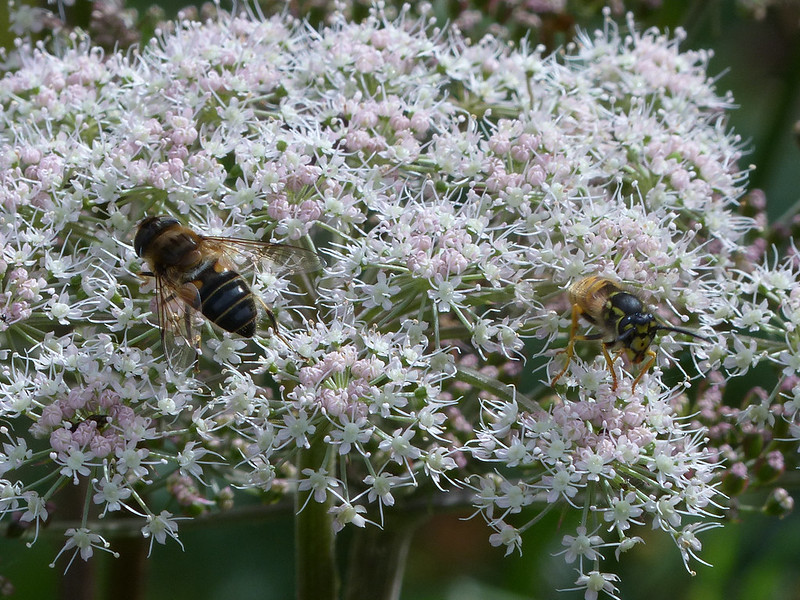

“This is a large and brightly marked hoverfly, with 3 pairs of wedge-shaped yellow bars and reddish-orange legs.” It prefers wet heath, so Lambert’s Meadow is the right sort of spot.
The light wasn’t great, but there was plenty to see and photograph. In particular, a variety of snails seemed to be having some sort of rave. They were everywhere.



There were actually several more snails on these two tall stems, who knows why they were so busy that day?

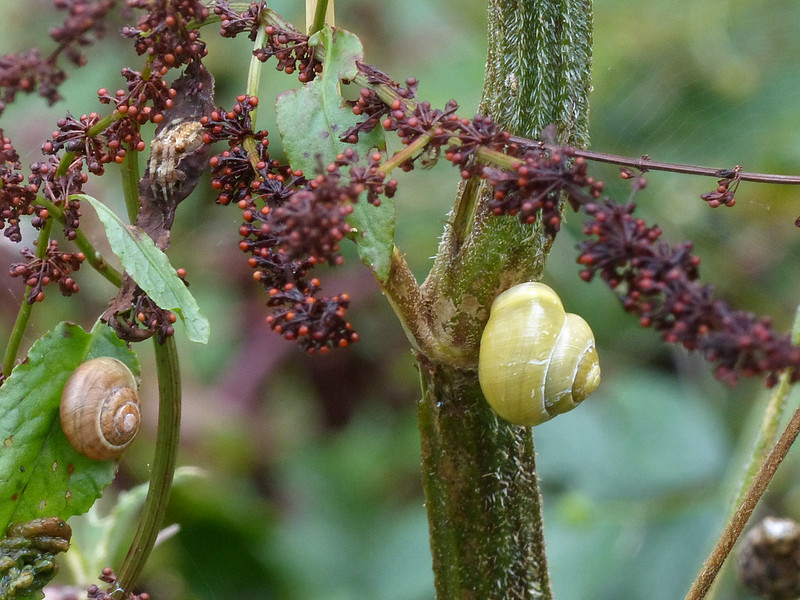
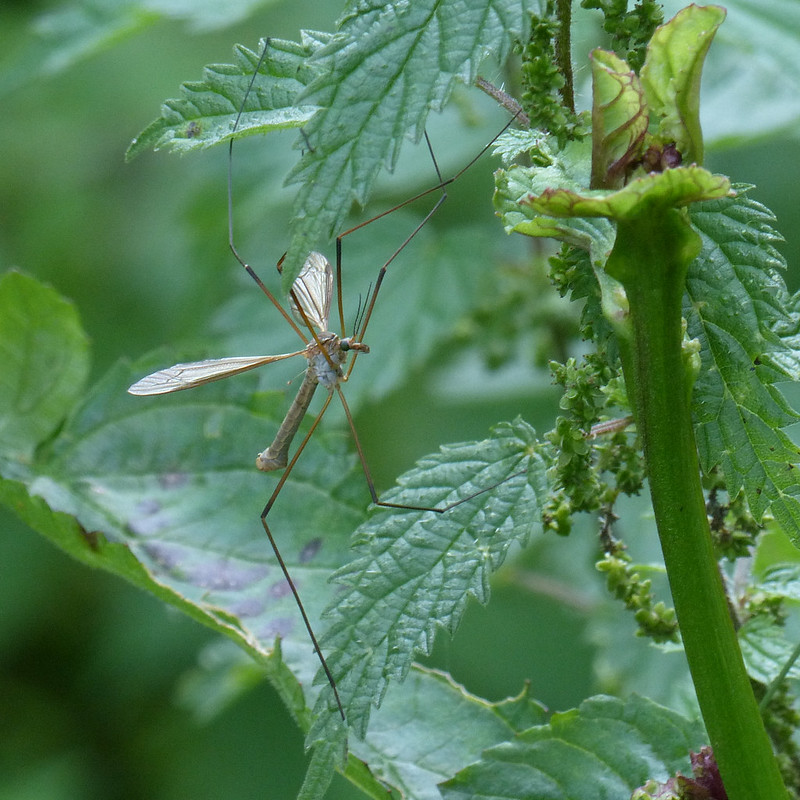
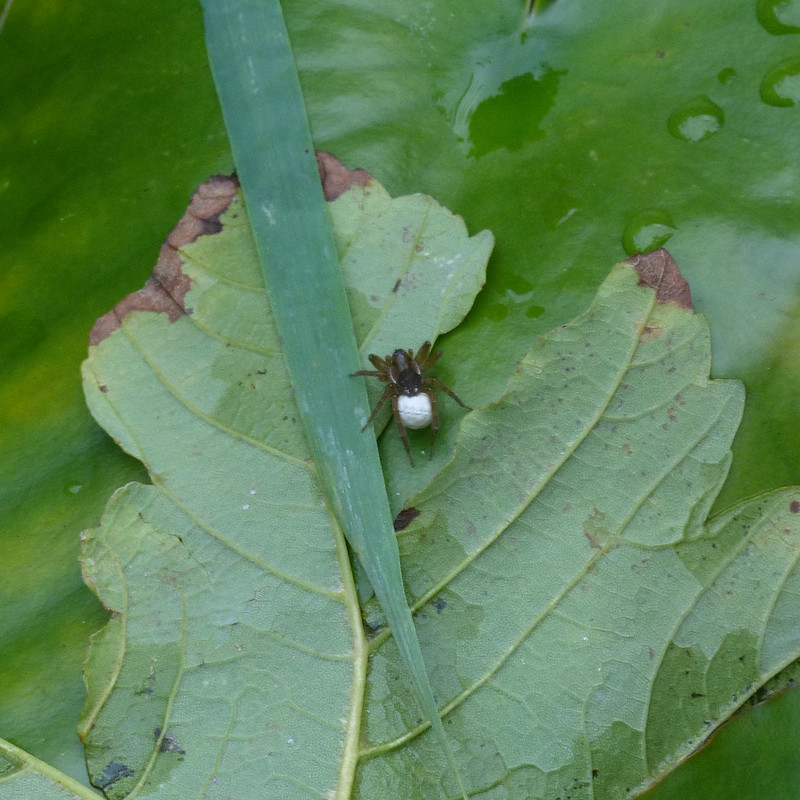
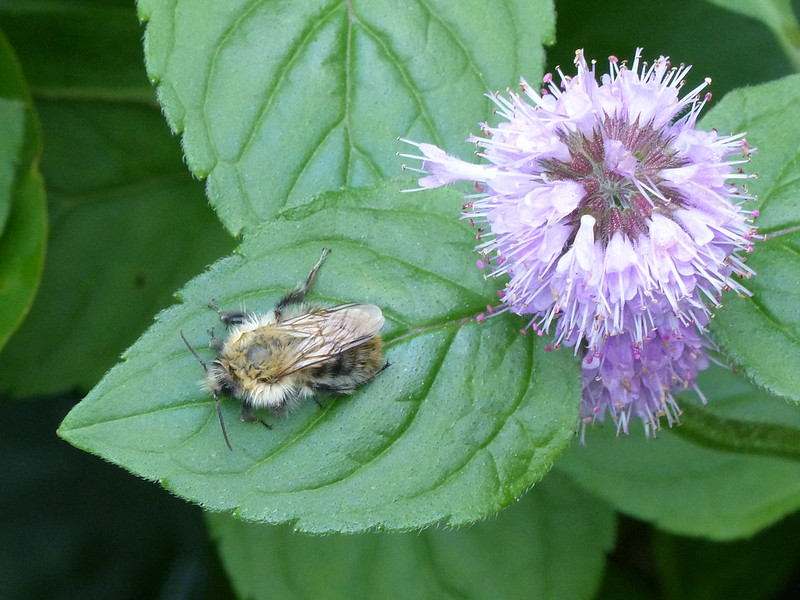
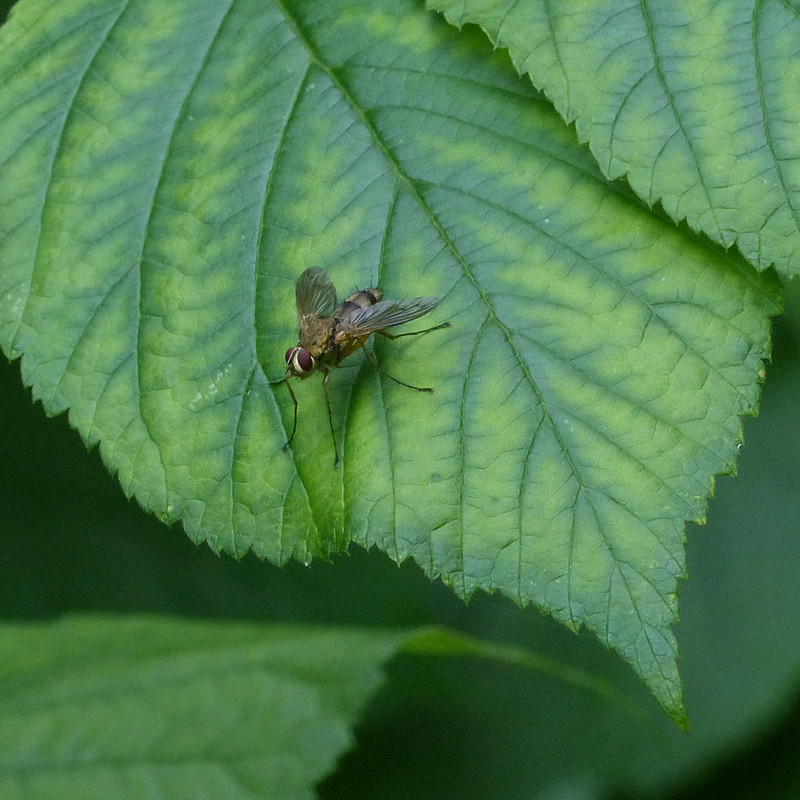

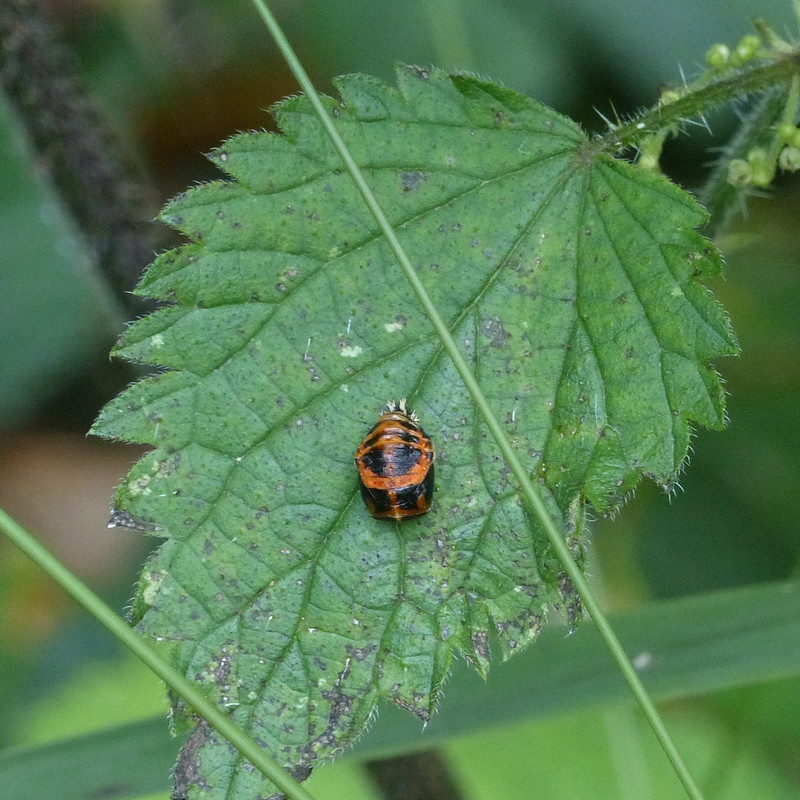
On my way down to Jenny Brown’s, I emerged from Fleagarth Woods into a small clearing which was mobbed with wildflowers, especially Common Knapweed. The flowers were really busy with bees and hoverflies, so of course, I took no end of photos.
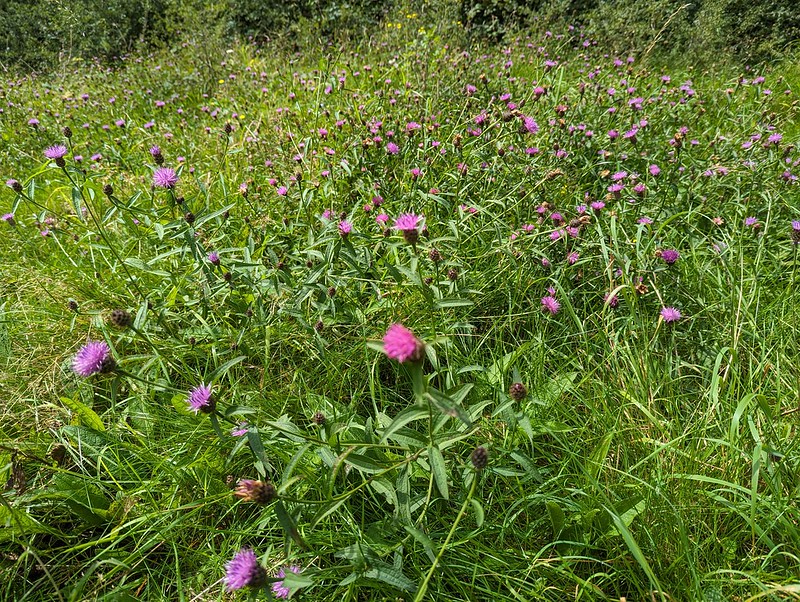
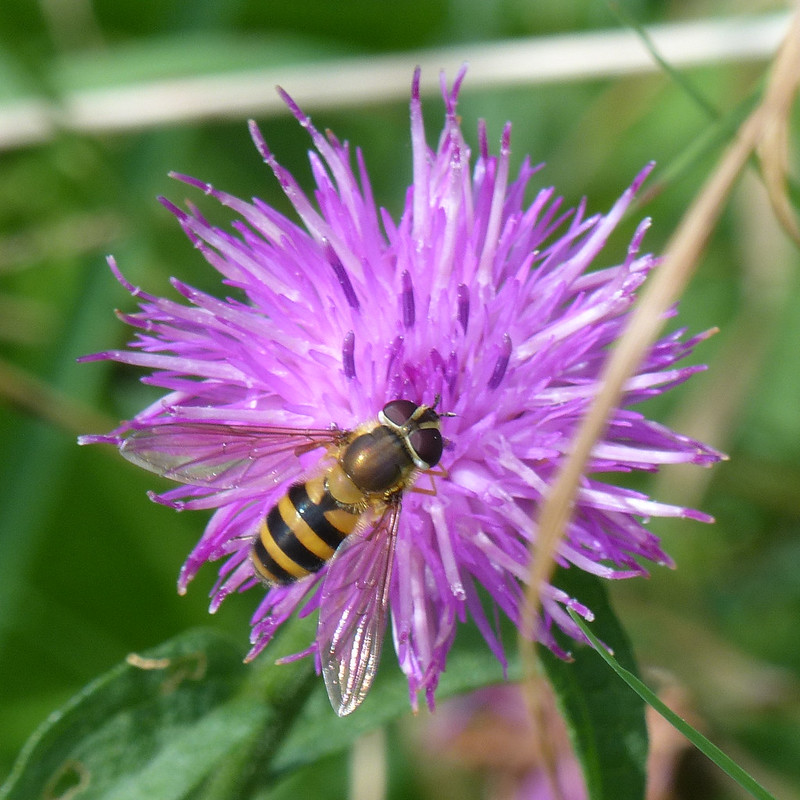
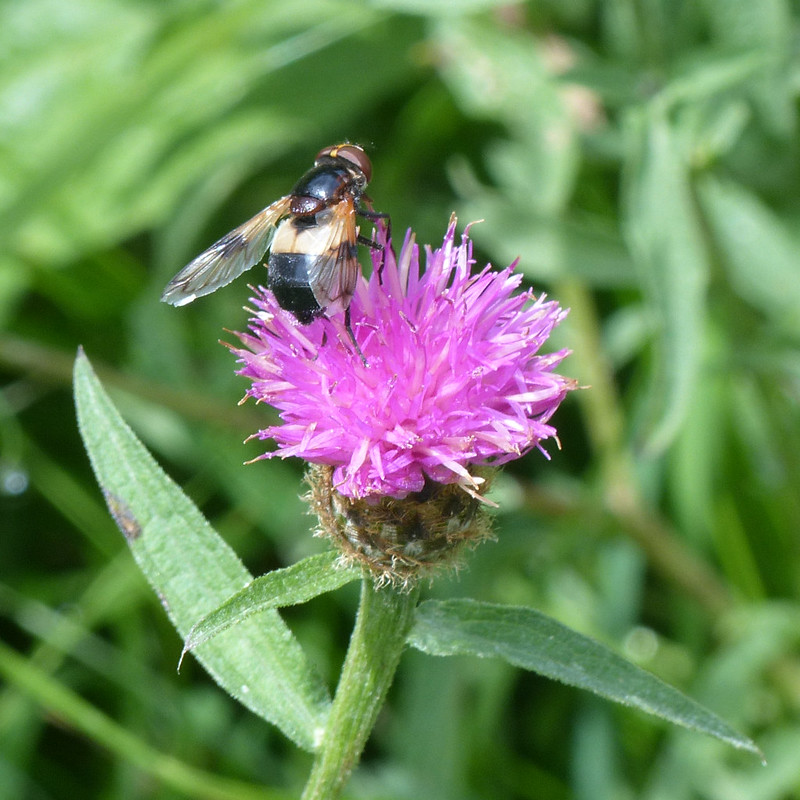

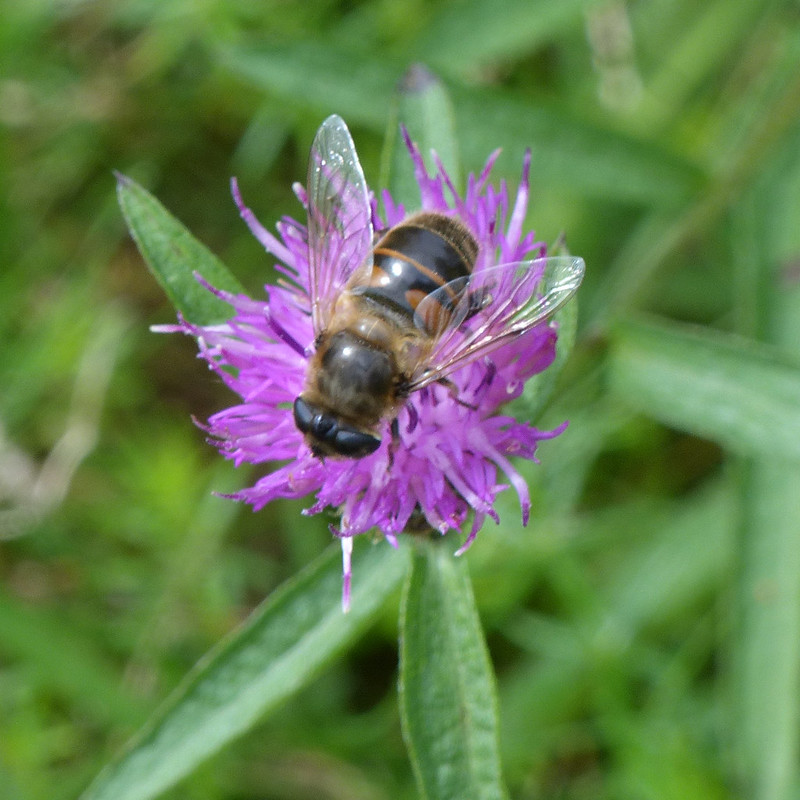

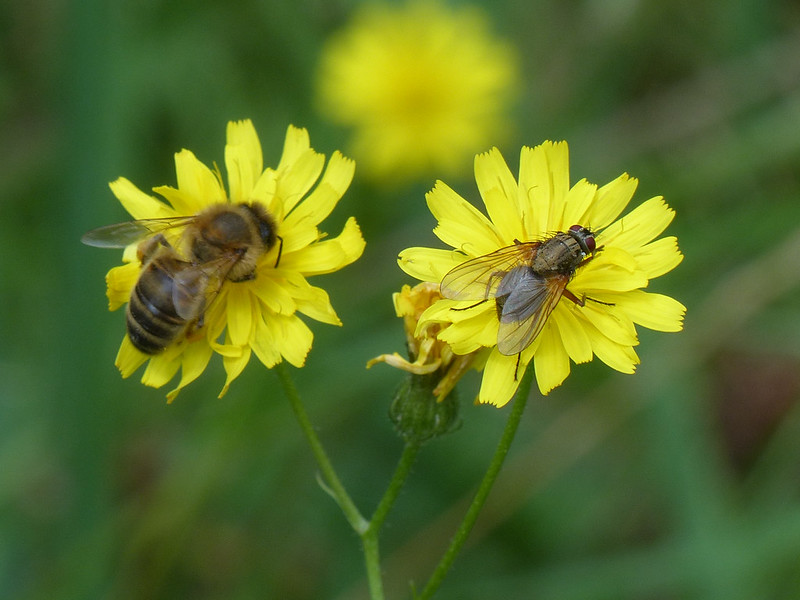


My roaming through the flowers disturbed this frog…

Had I realised how many different species of hoverfly were in that little clearing, I probably would have stayed to take even more photos, but until I got home to download and look at the photos I wasn’t aware of the variety.
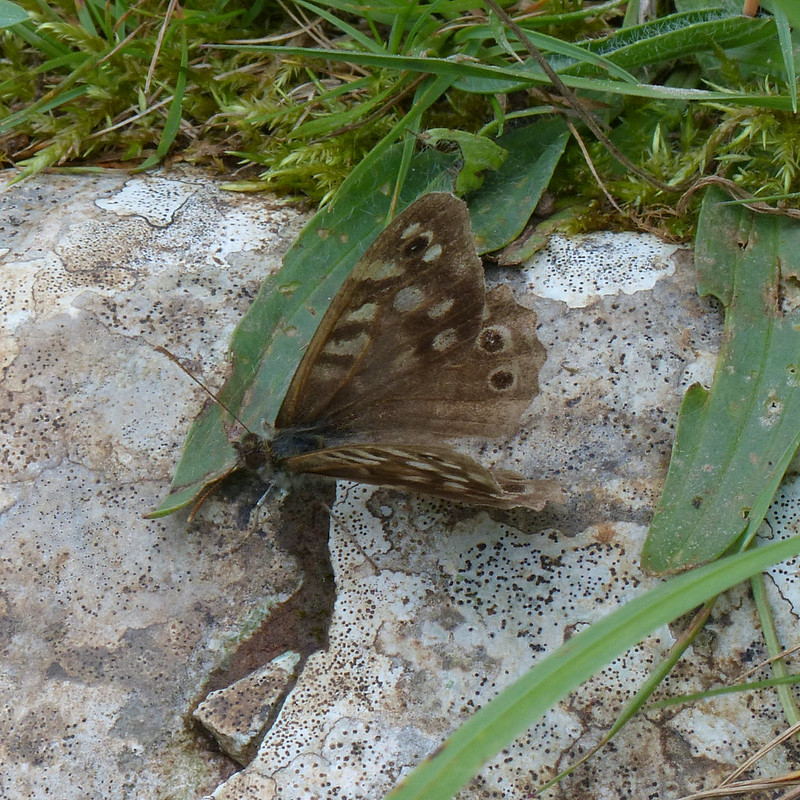
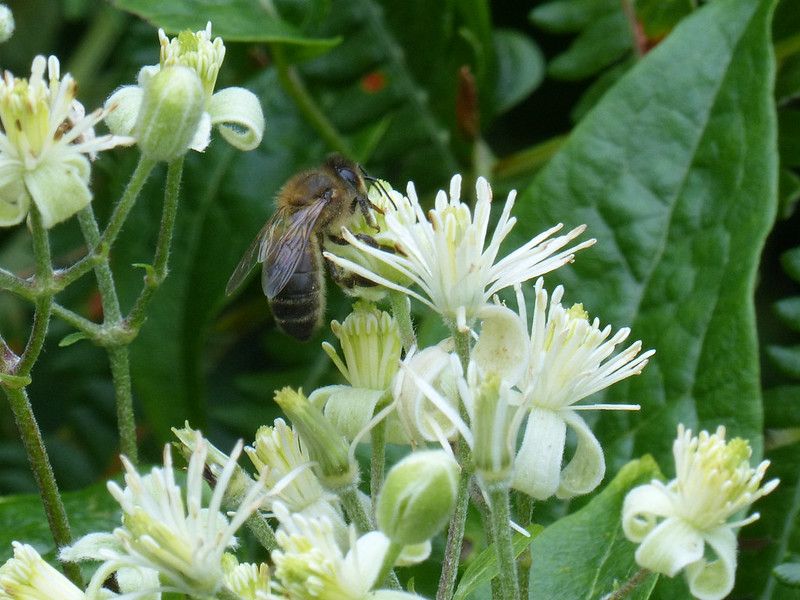
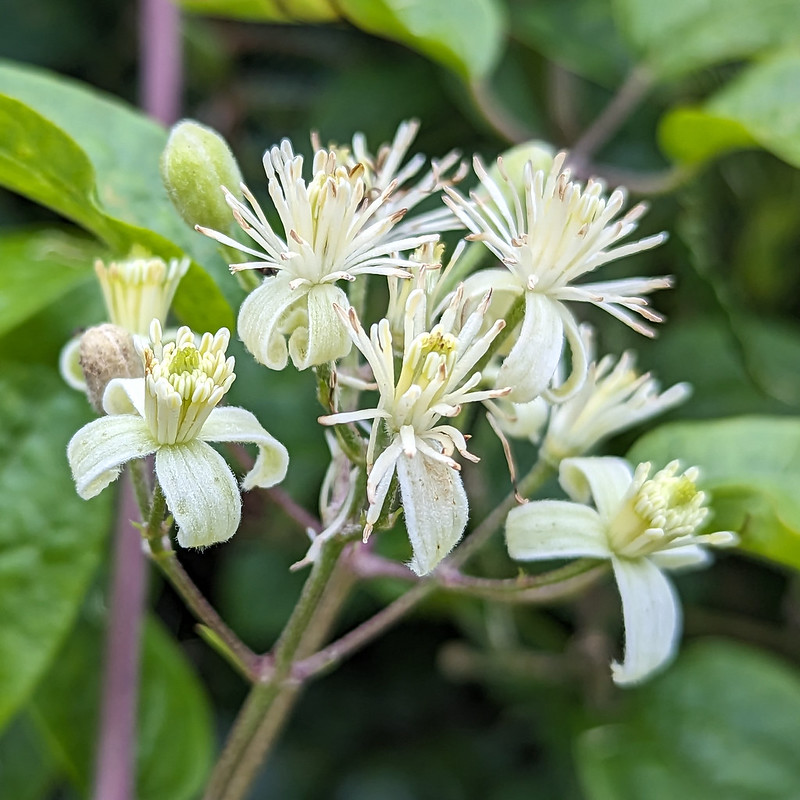
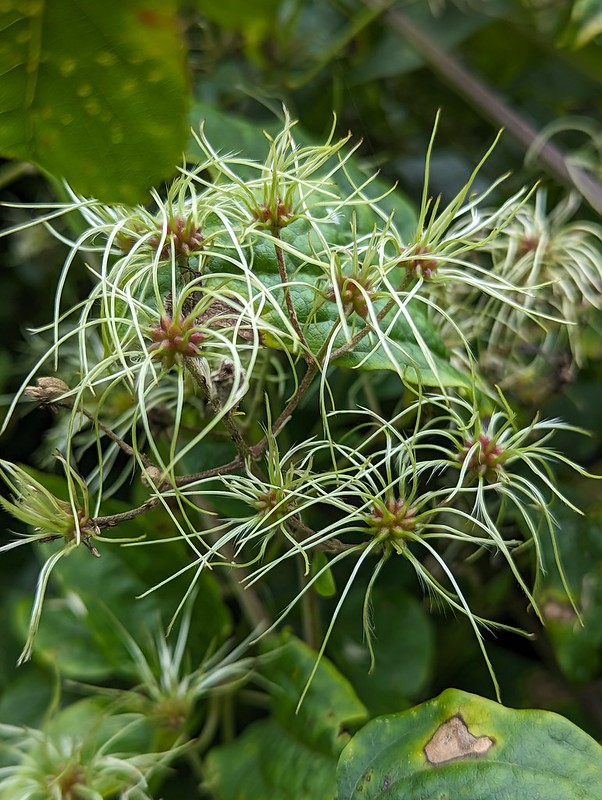

A shortish, but very satisfying outing.
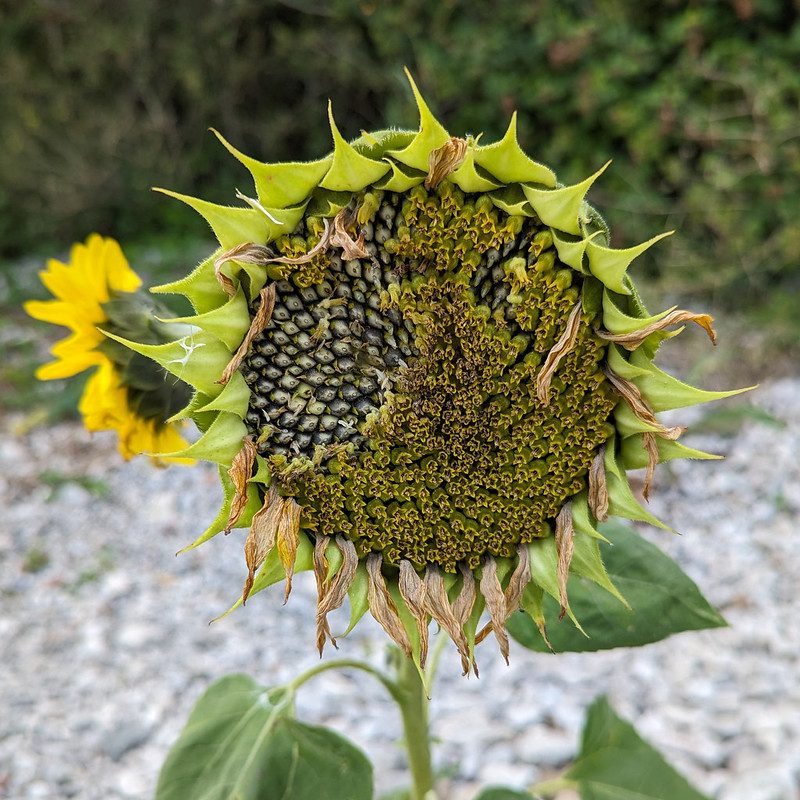
Out in the real world, spring is springing, whilst here on the blog, I’m still stuck in last August. Will I ever catch up? I’m beginning to doubt it!
Anyway, at the tail end of the summer holiday, I had several excellent local meanders. The first was around our usual Jenny Brown’s point circuit. I was surprised to see several sunflowers – presumably growing from seeds dropped by birds from feeders in the nearby gardens? These days, we have a number of feeders in our garden again and I’m quite looking forward to a few sunflowers popping up.

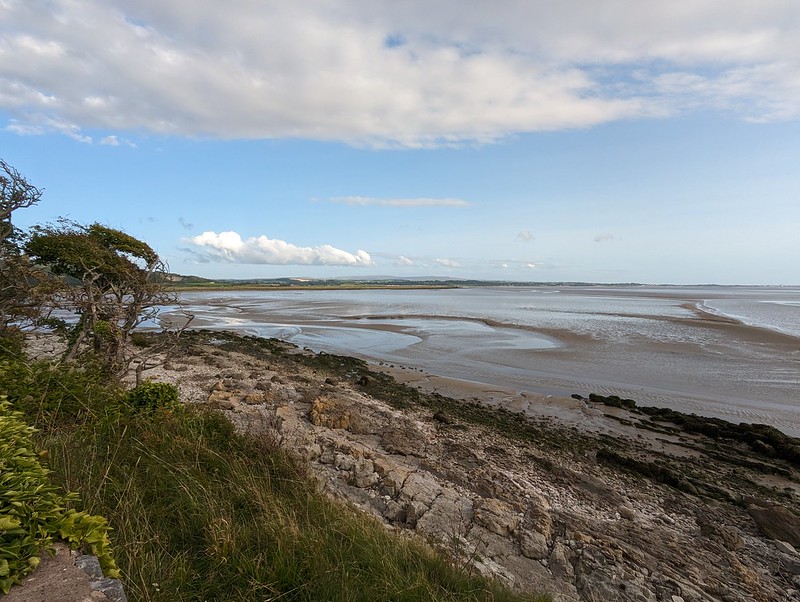
I didn’t take my camera on this first walk, so not all that many photos. It was a frustrating omission. because I thought I saw two Great Egrets in Quicksand Pool, but they were too far away to be sure – I could have really done with the large zoom available on my camera.
So, the next time I was out, for a mooch by Bank Well, Lambert’s Meadow and around Hawes Water, I remembered my camera and, predictably, took hundreds of pictures.

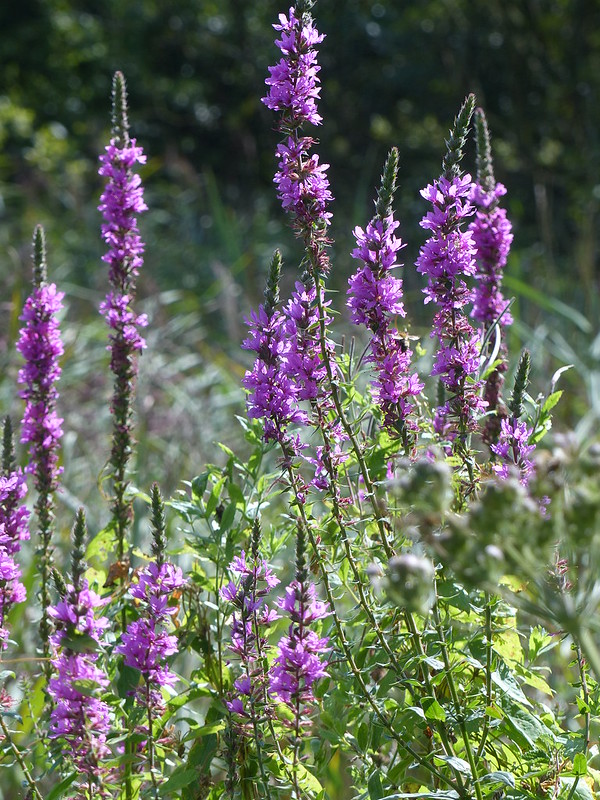


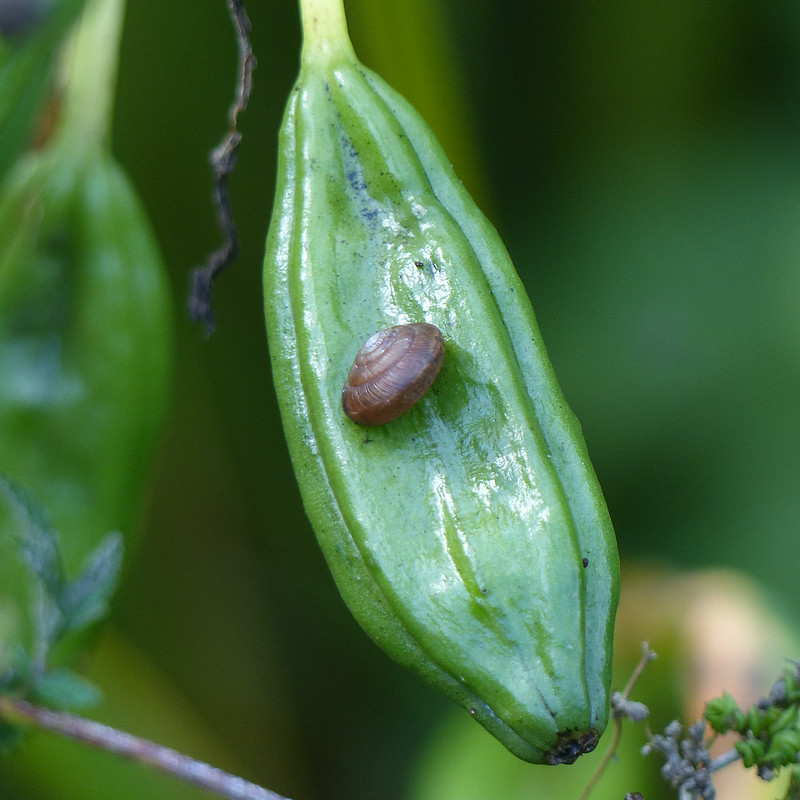
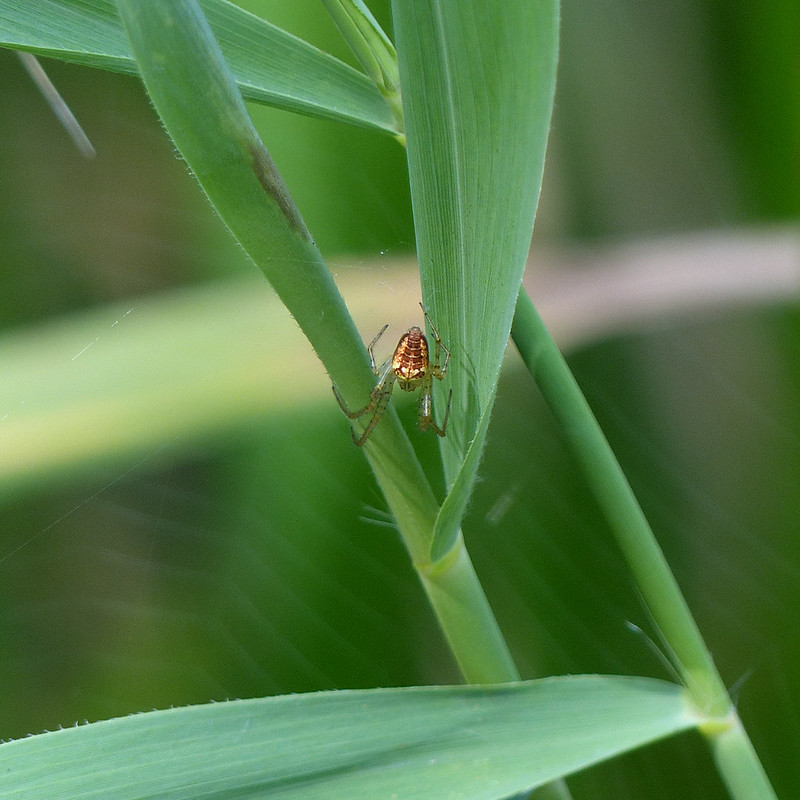

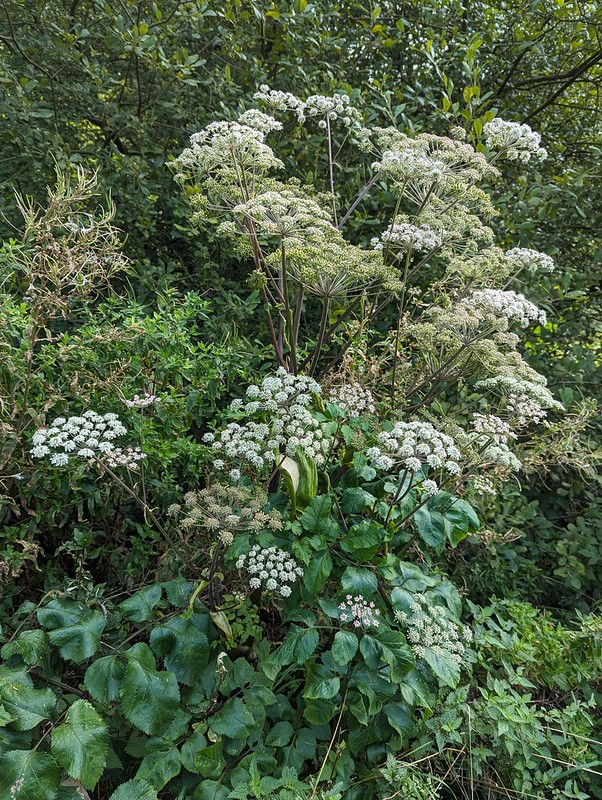
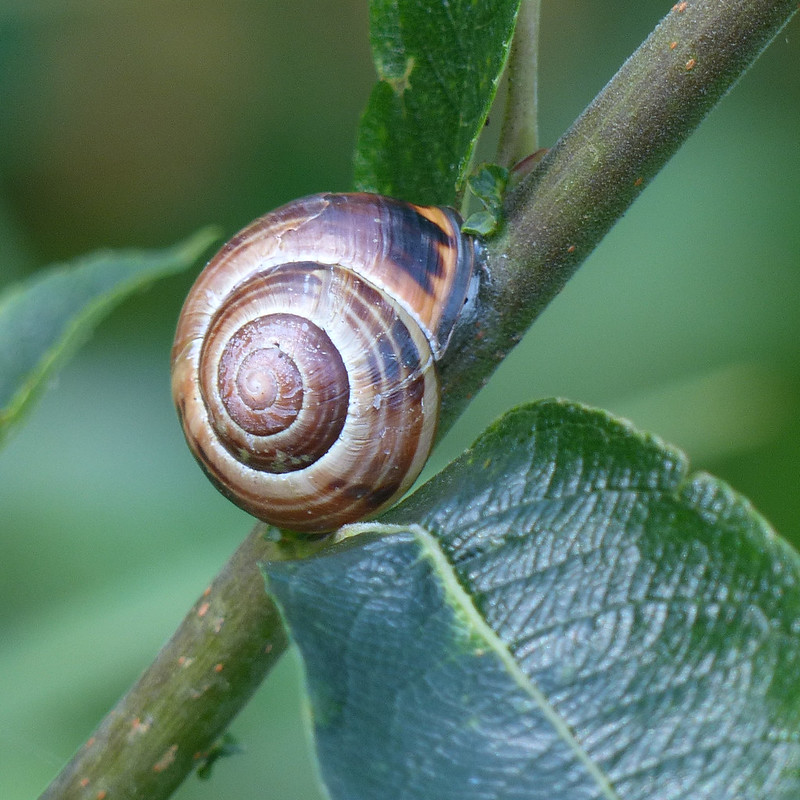
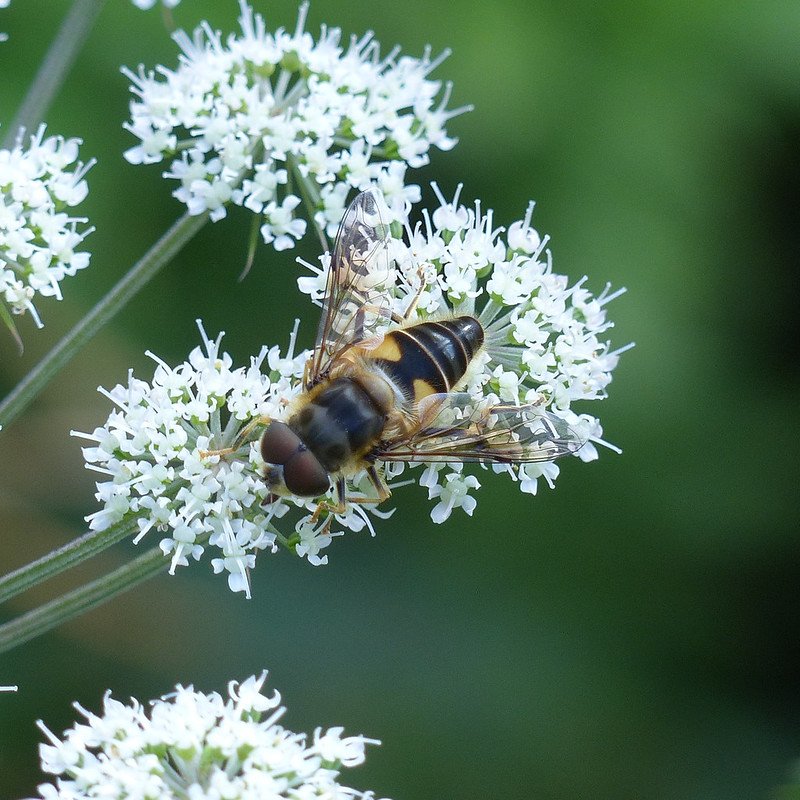
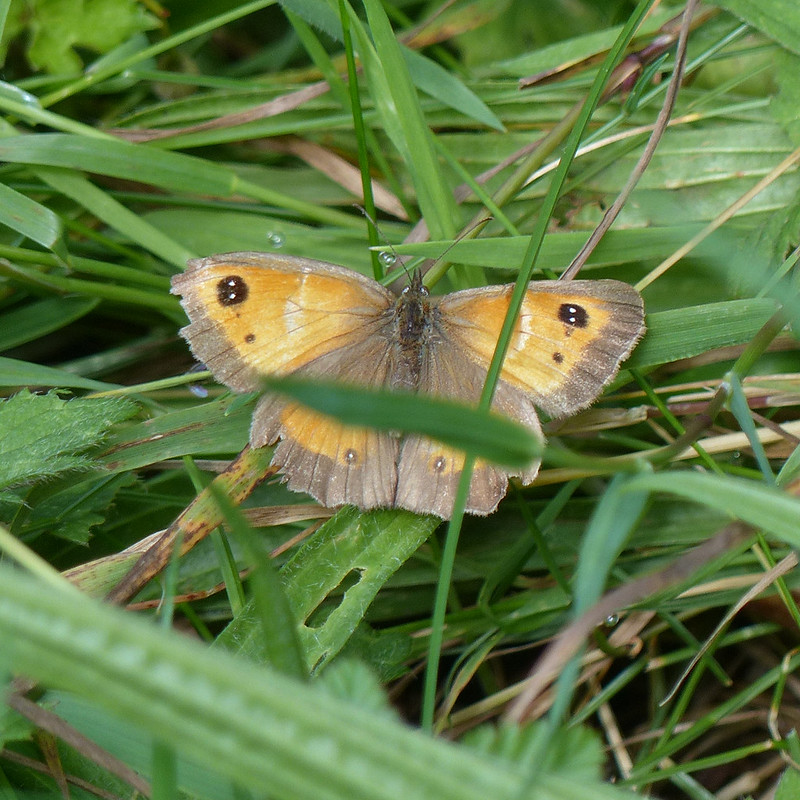
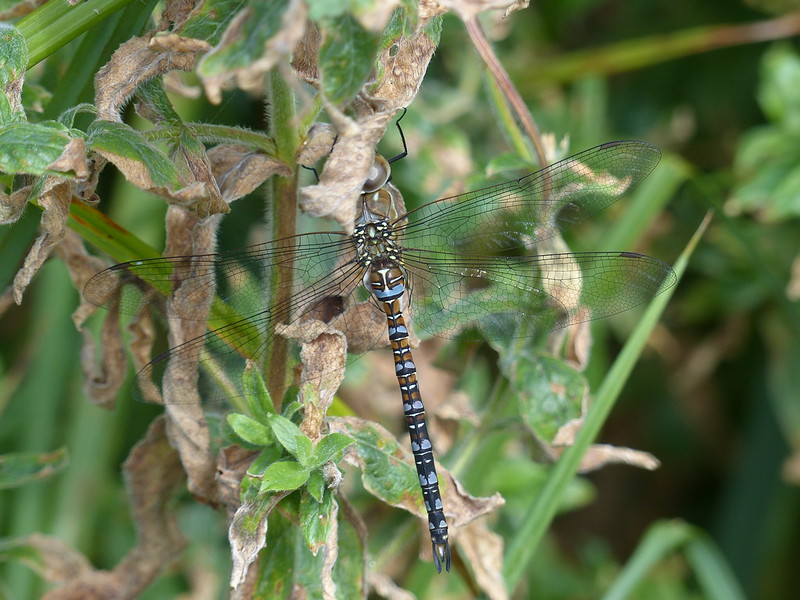
I was astonished to see three Migrant Hawkers, all male, perched on the same Great Willowherb plant. I shouldn’t have been: over the next few days I would see lots more – it seemed like it was a good summer for this species, in this area at least.

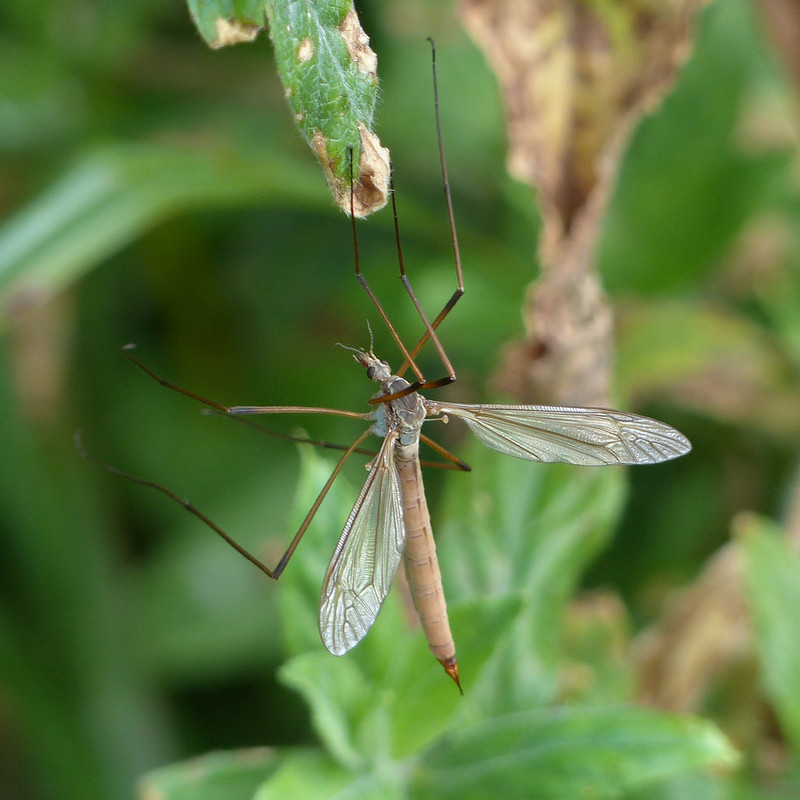
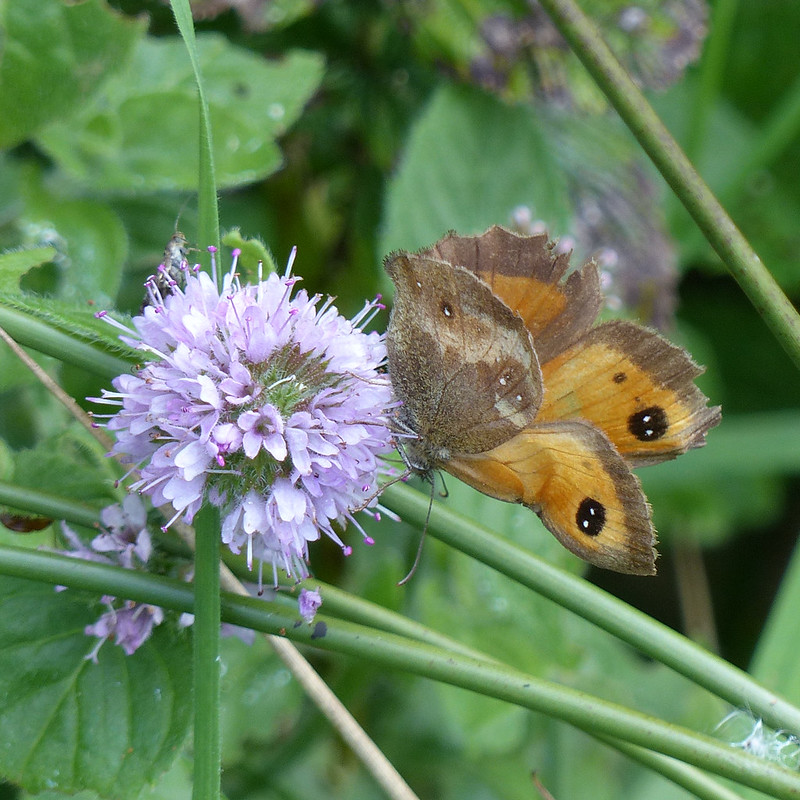
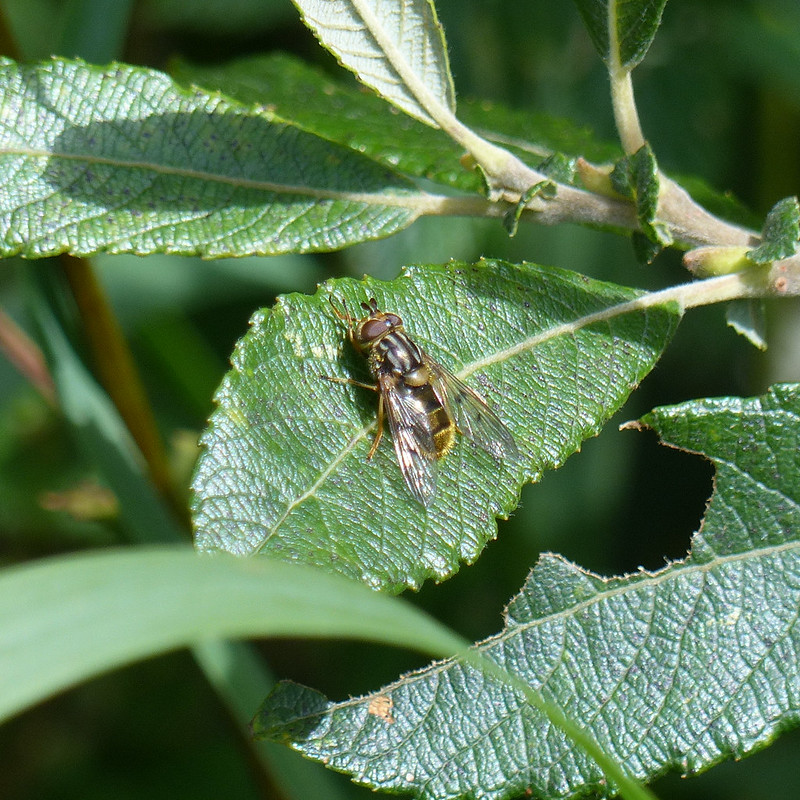
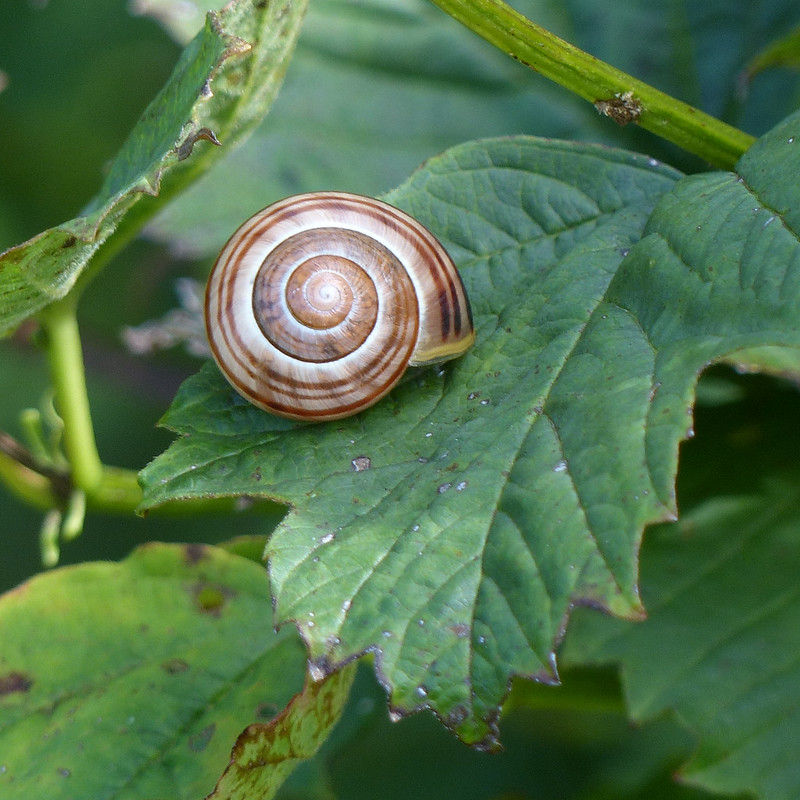
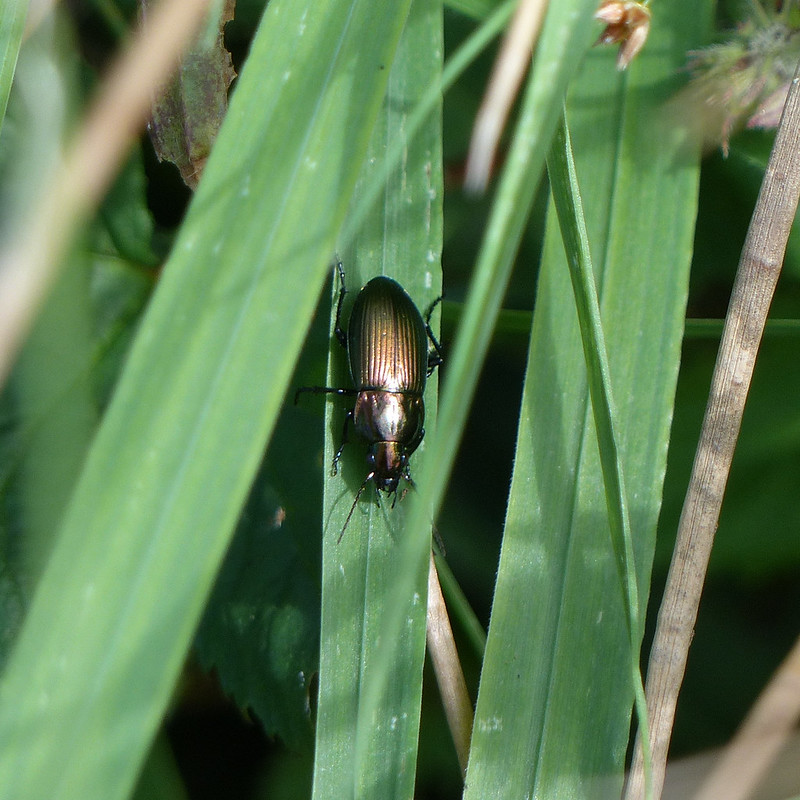

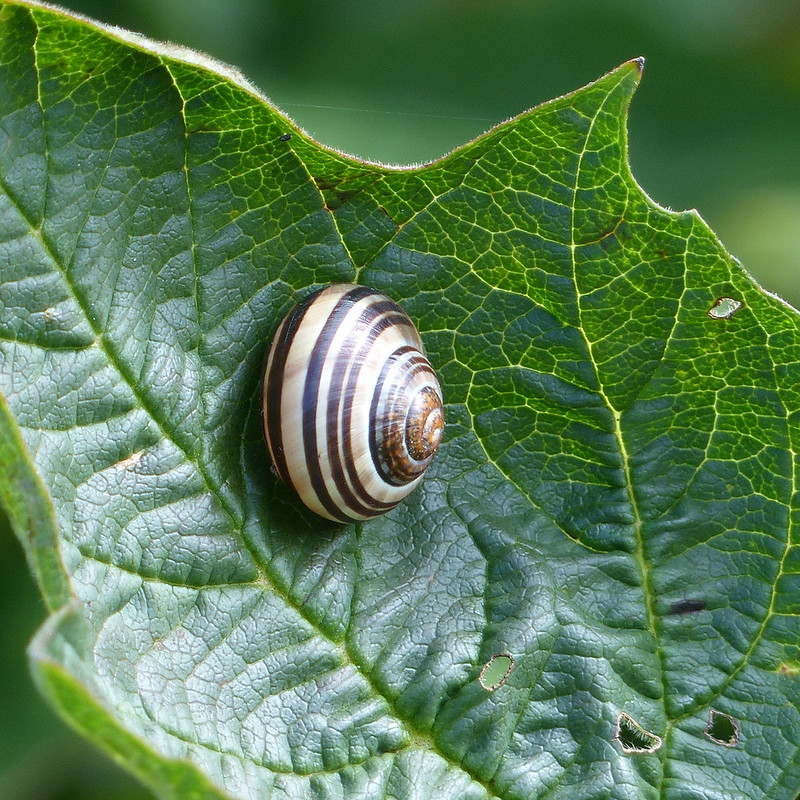
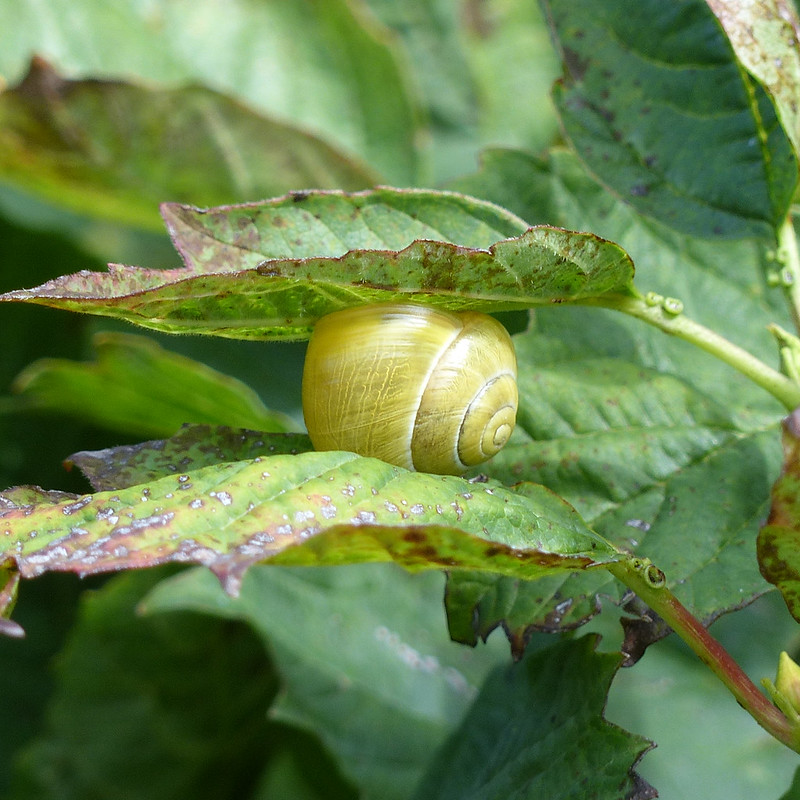






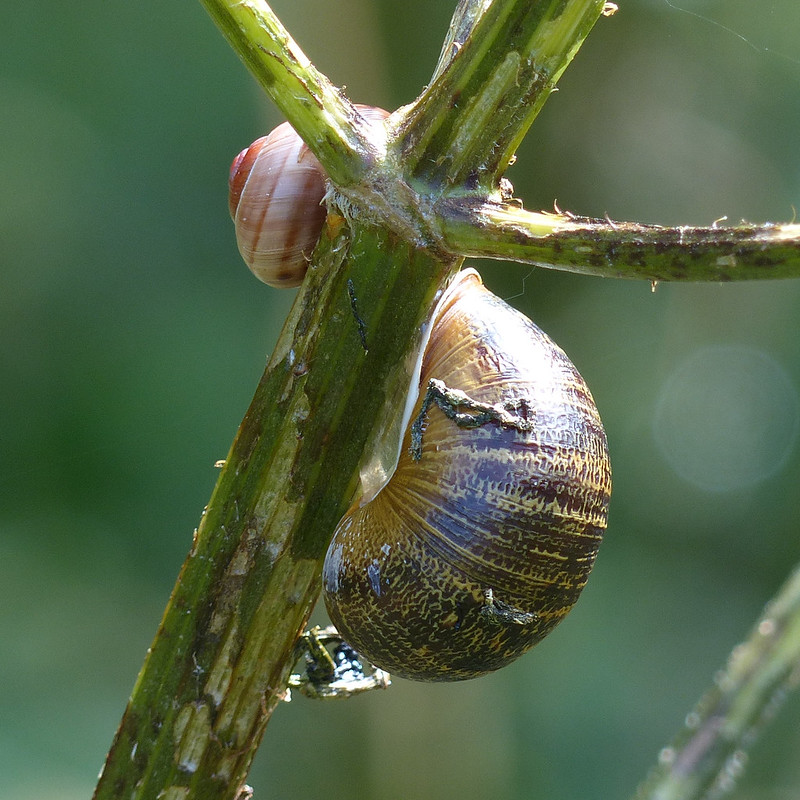
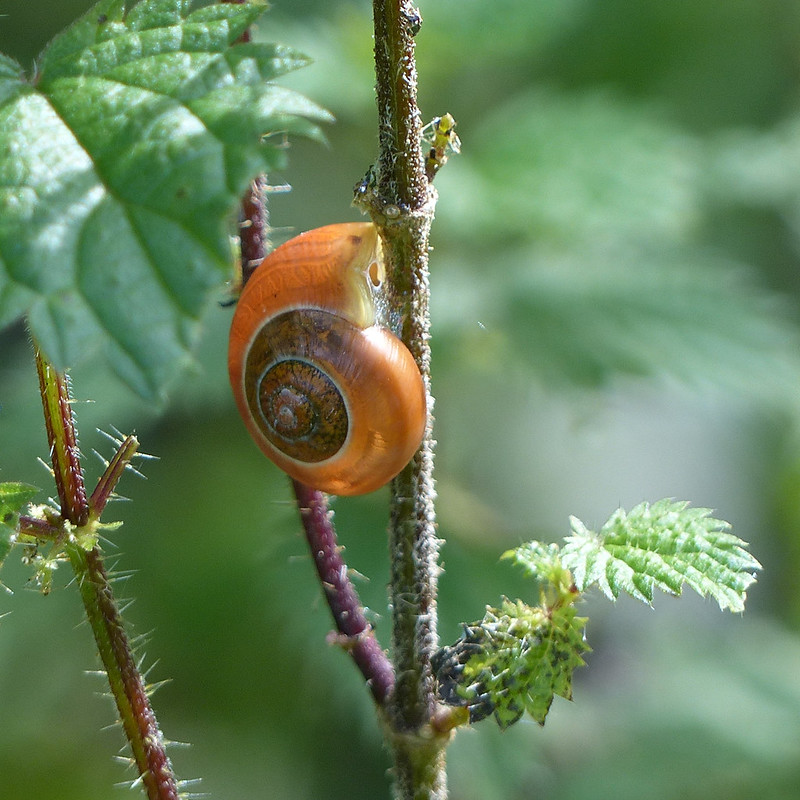

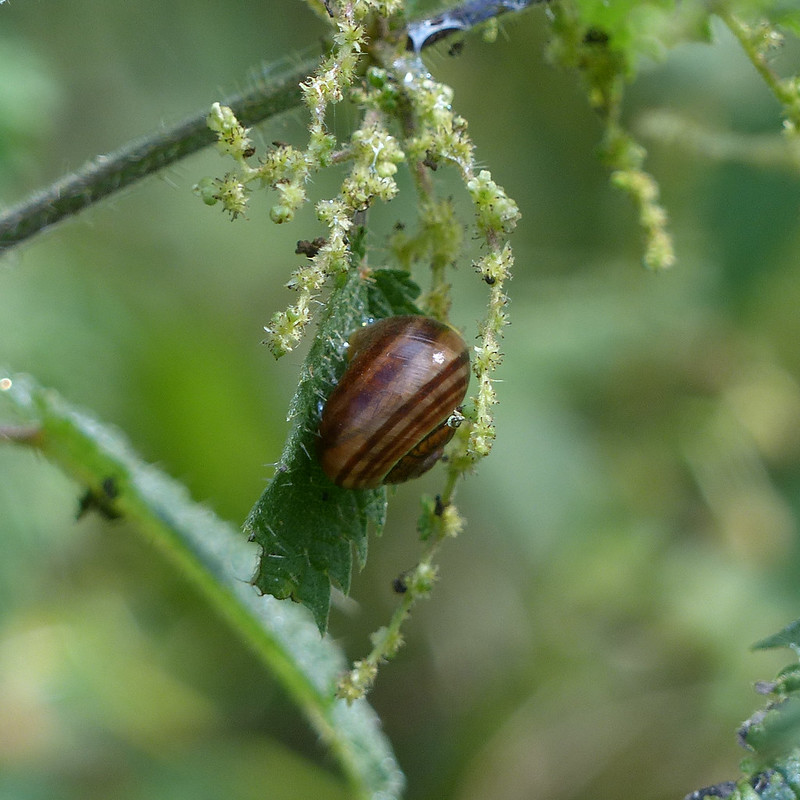
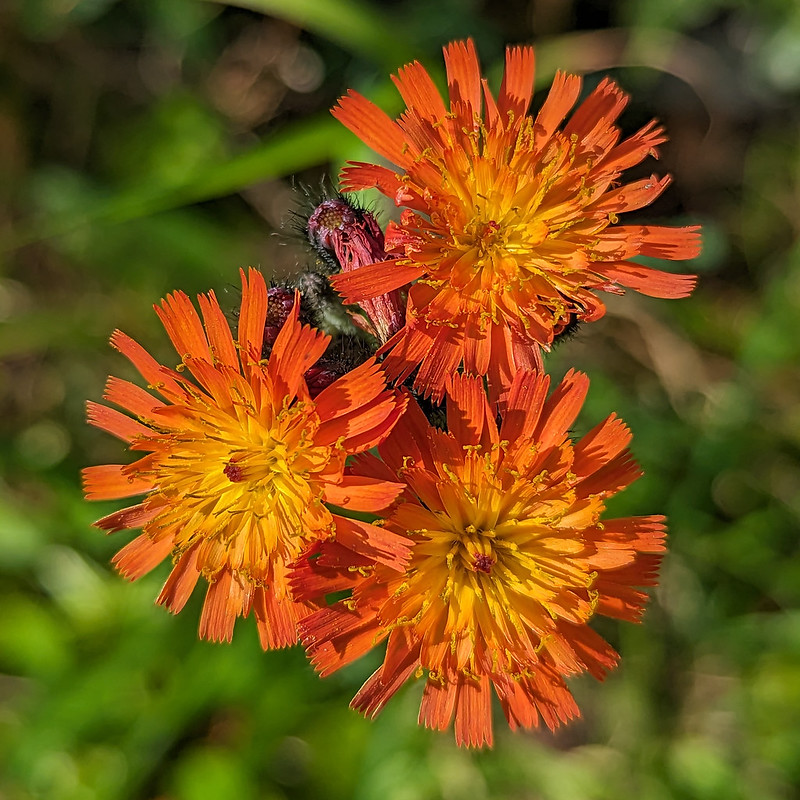
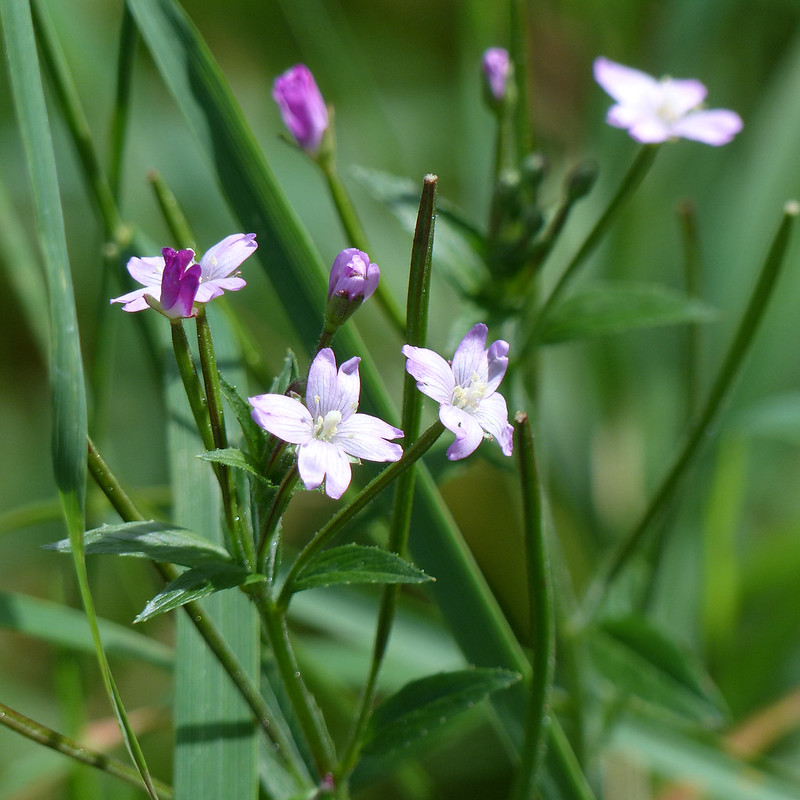

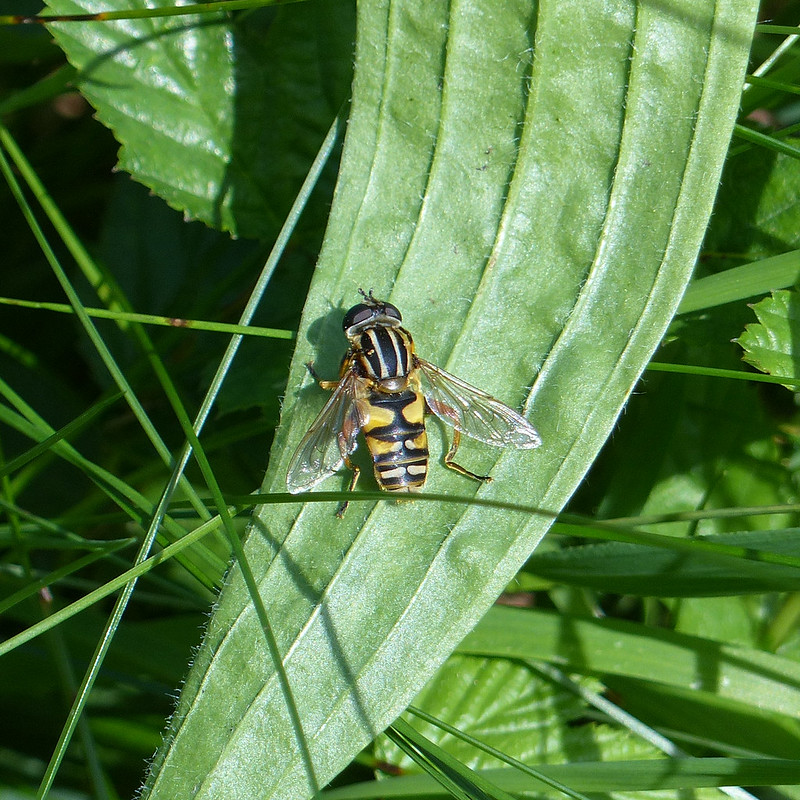




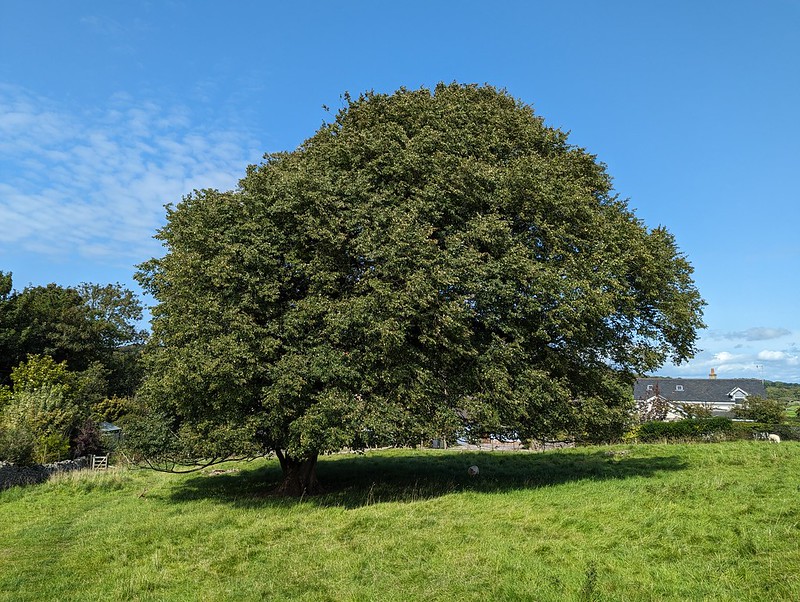

And there we are: one step closer to the end of August!
Cove Road – Holgates – Far Arnside – Park Point – Arnside Point – White Creek – Blackstone Point – New Barns – Arnside – Black Dyke Road – Silverdale Moss – Challan Hall Allotment – Hawes Water – The Row – Hagg Wood
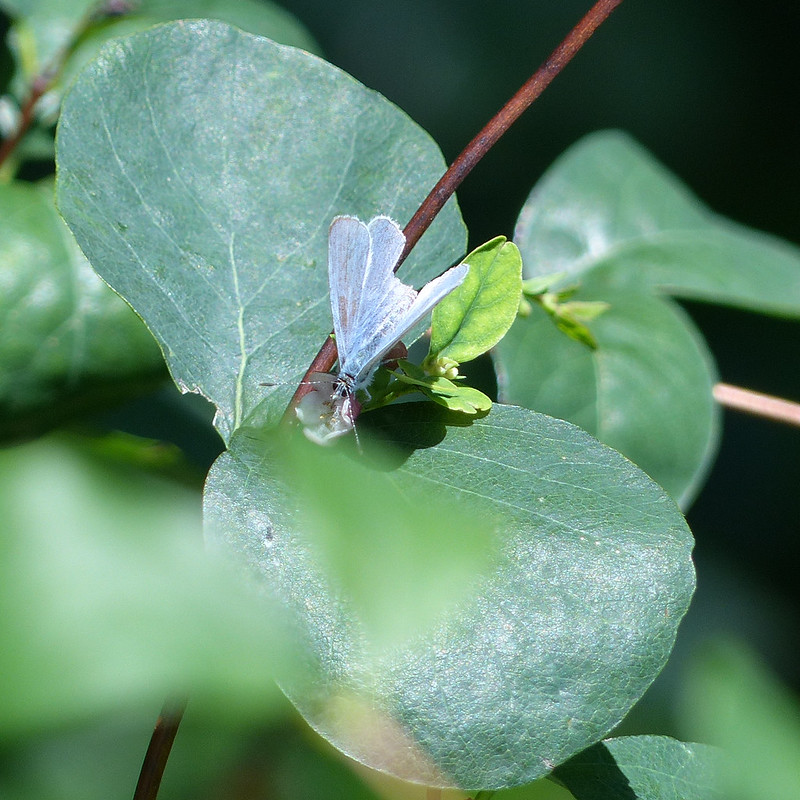
Home again and a familiar walk around the coast to Arnside and then back via Silverdale Moss and Hawes Water. It was a walk which involved a lot of stopping and gawking, and during which I took nearly four hundred photos (I’ve edited them down a bit for this post!). It was a good day for butterflies, spiders, harvestmen, grasshoppers and various other things.

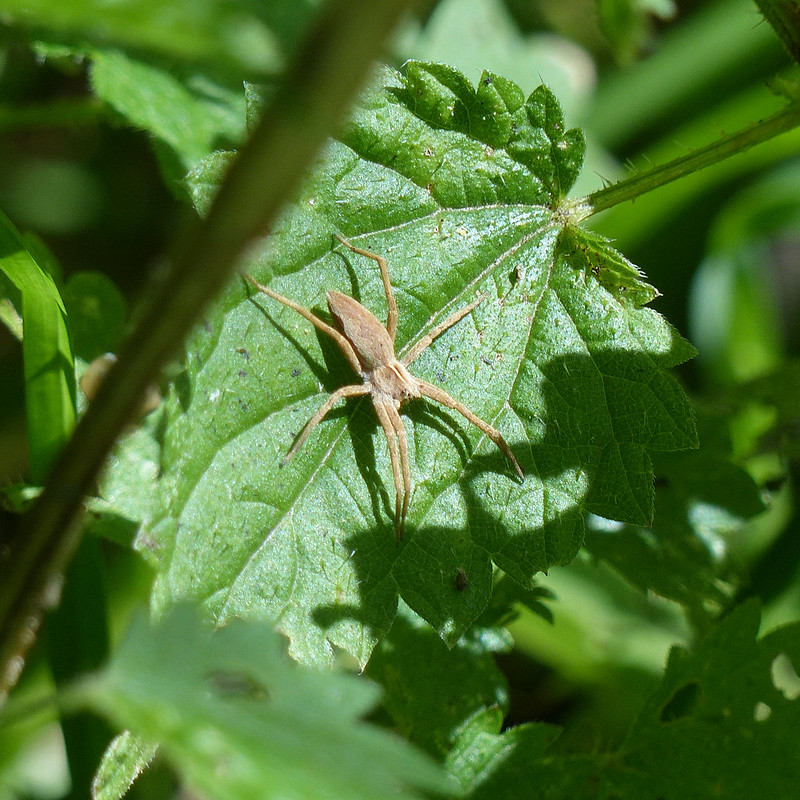
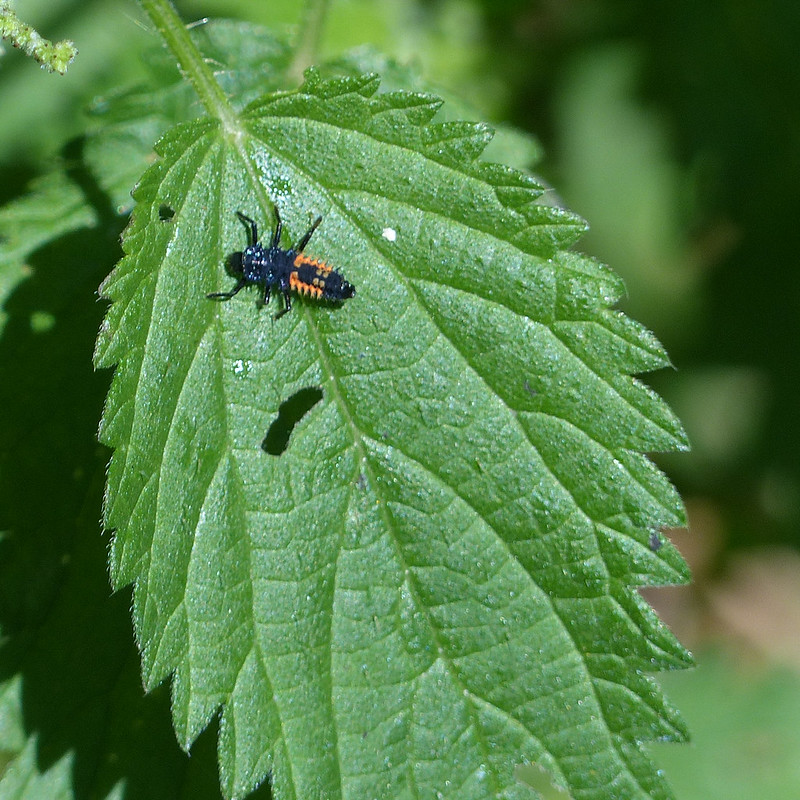
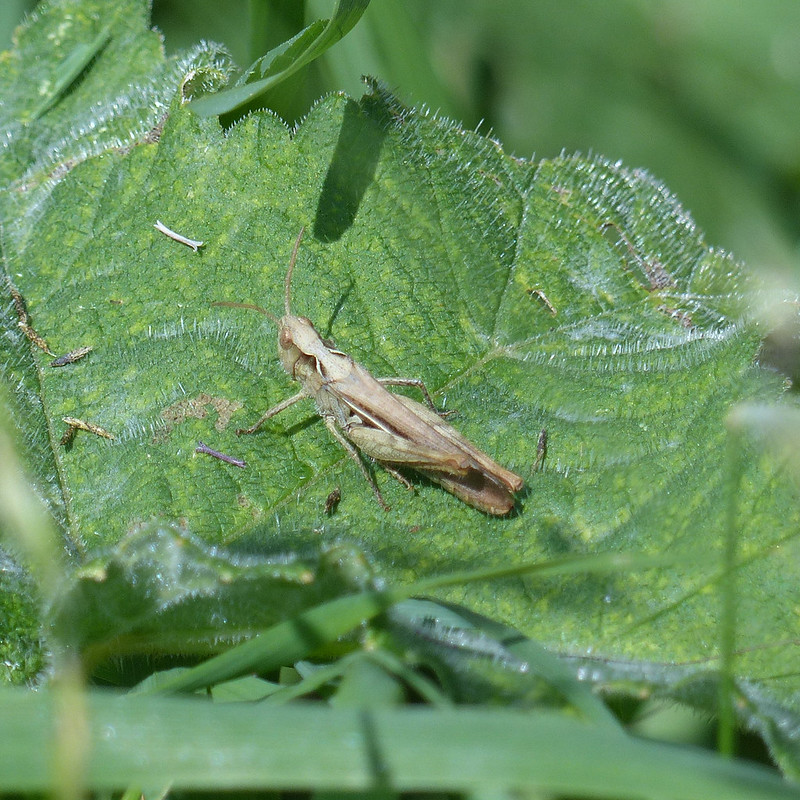
I find Grasshoppers very tricky to identify. I found this guide useful, if not conclusive.


I spent a long time by a Buddleia at the edge of the caravan park at Far Arnside – it was very popular with the butterflies, with quite a few bees and hoverflies visiting too.


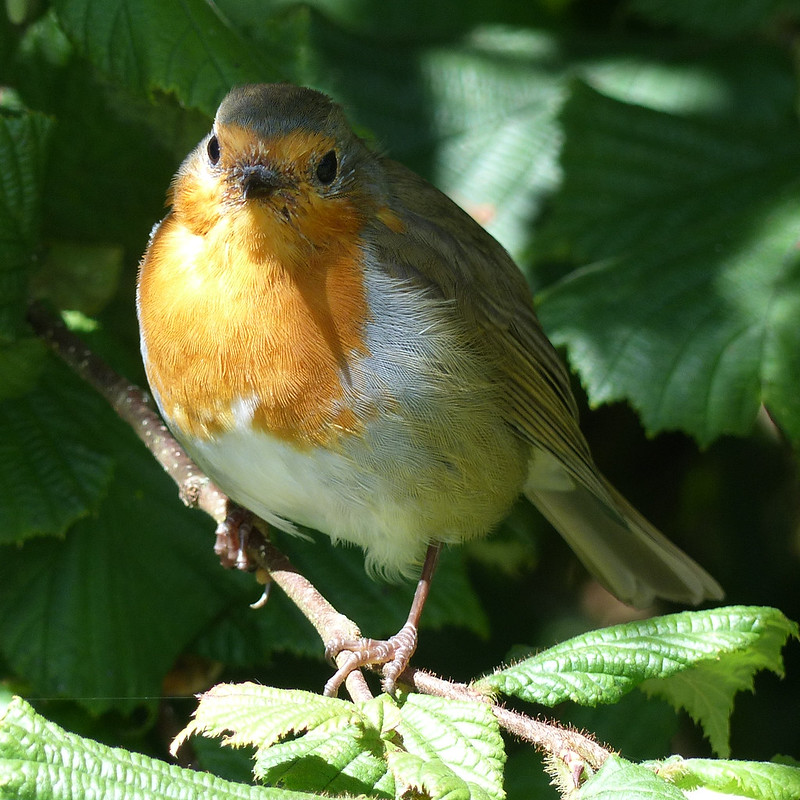
Whilst I was snapping away, a Robin appeared close by in the hedge and watched me for quite some time.

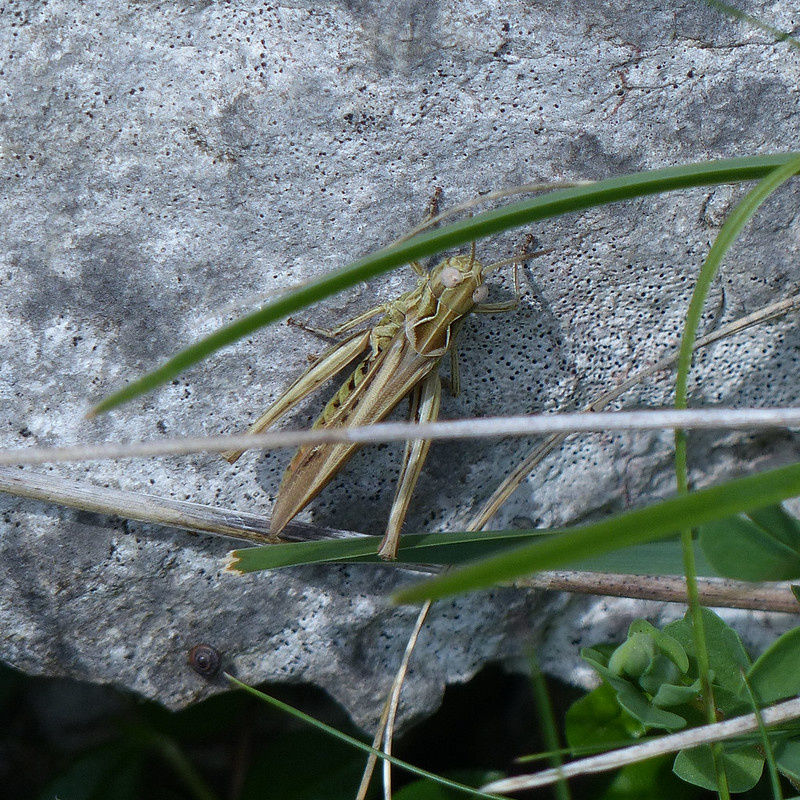
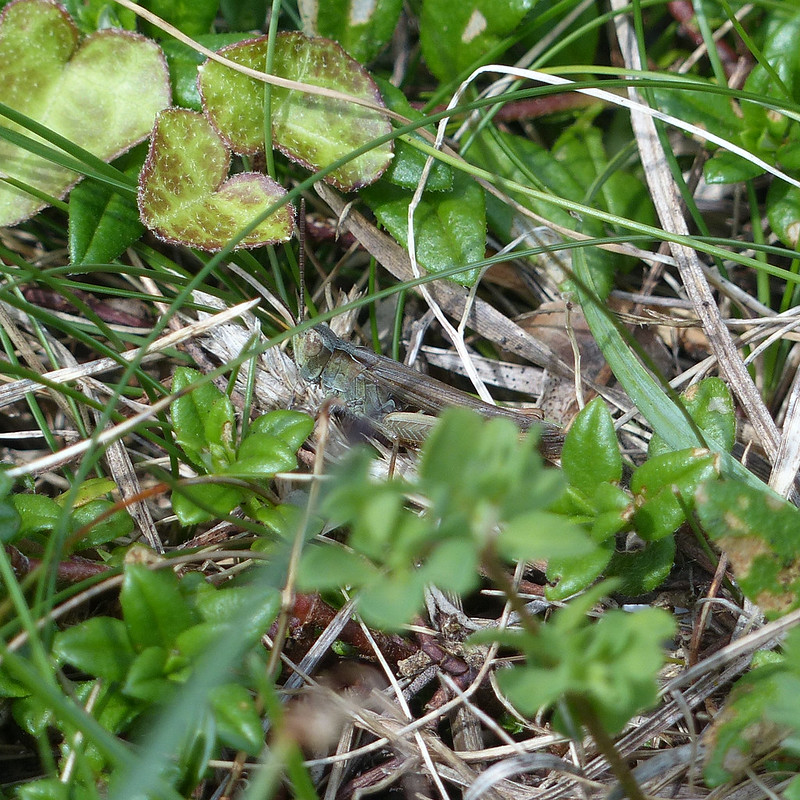
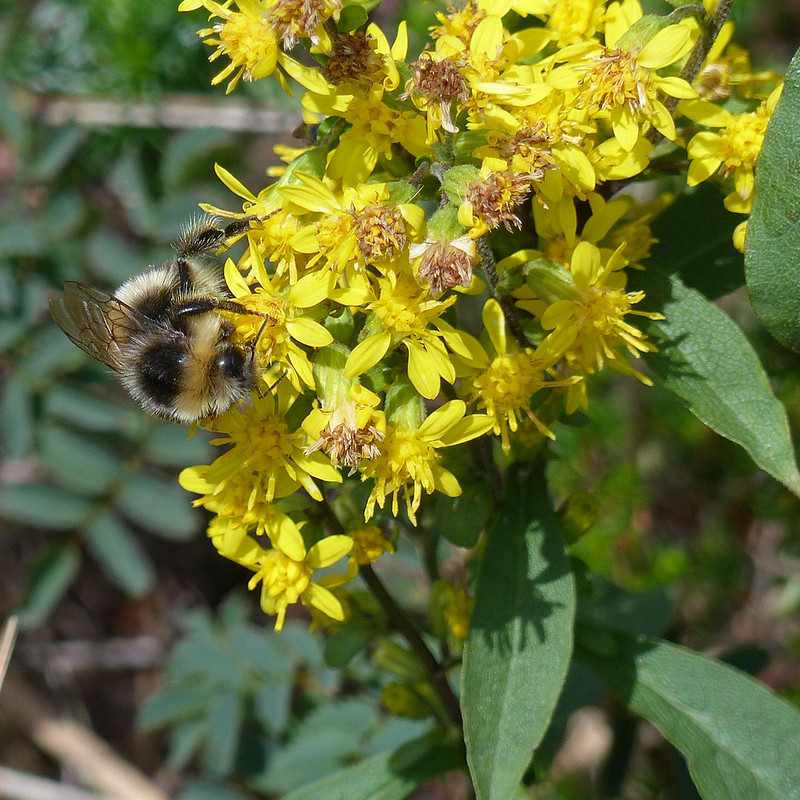
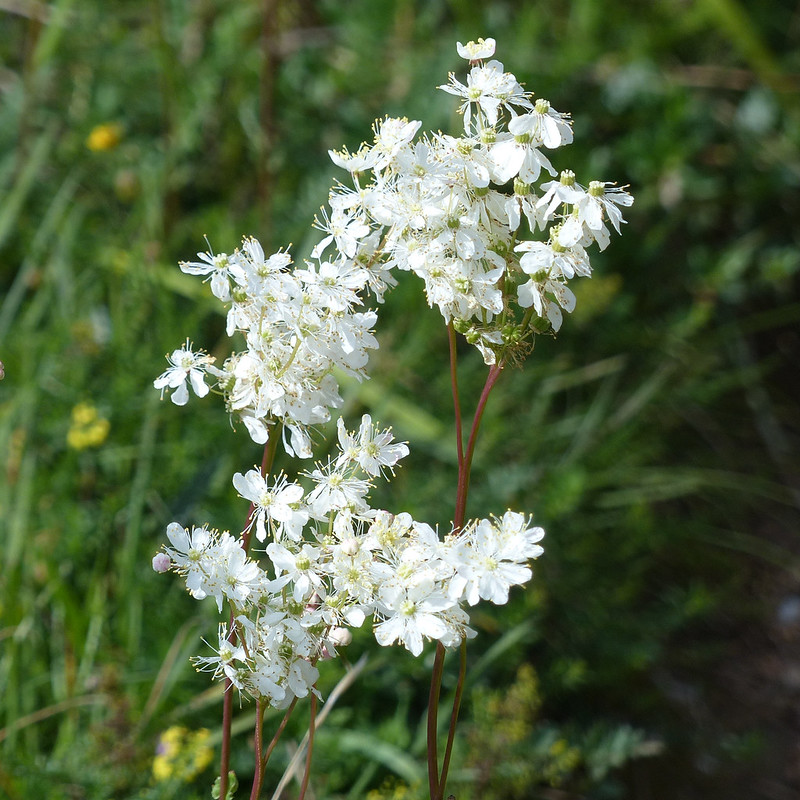




I was surprised to see a few family groups dotted about on the mud of the Bay, with a full collection, by the looks of it, of beach paraphernalia. Of course, I love the area myself, so I shouldn’t be surprised at all that other people want to enjoy it too.

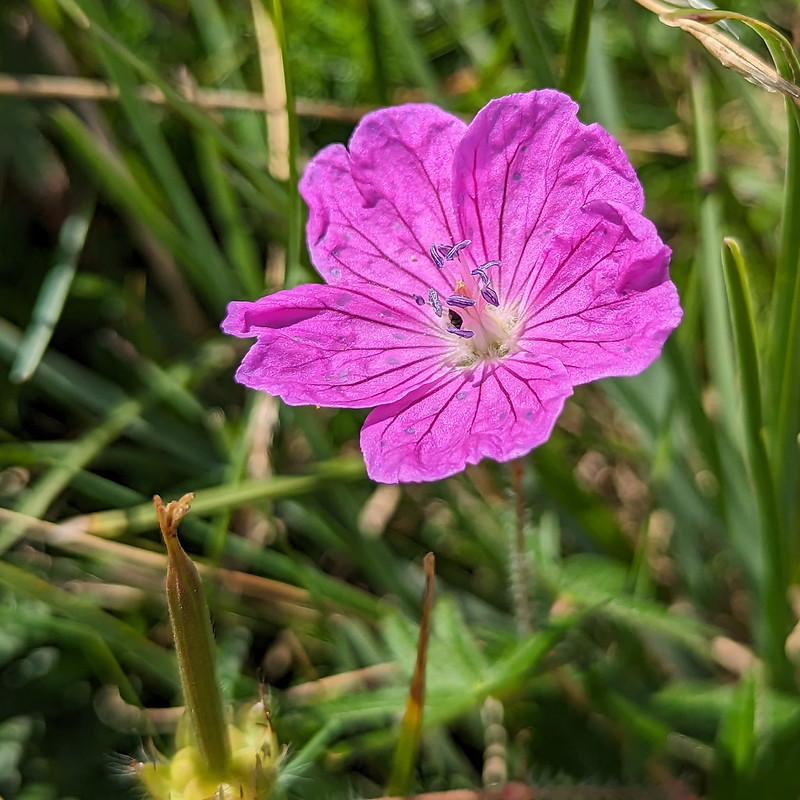
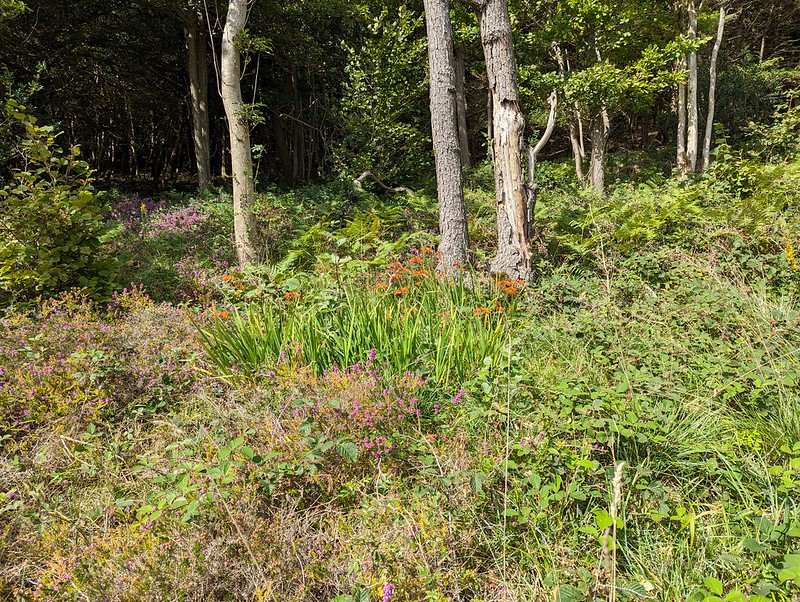
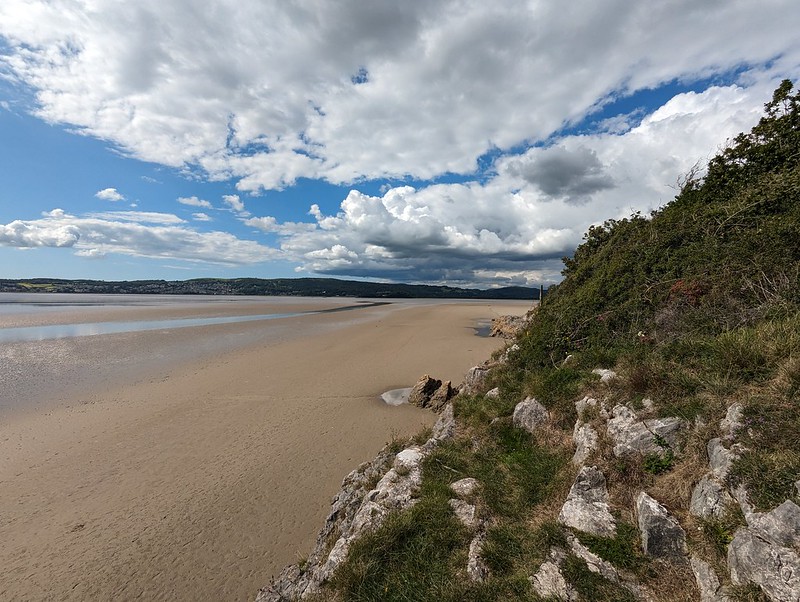
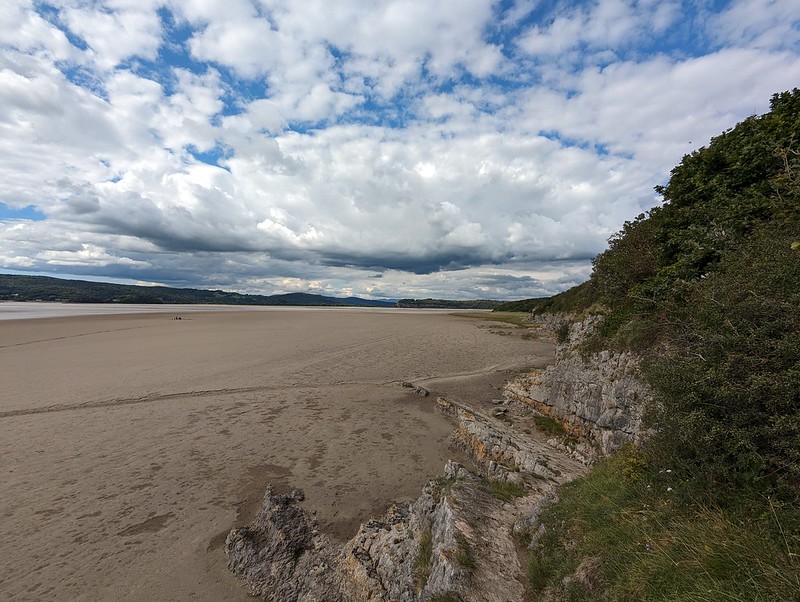

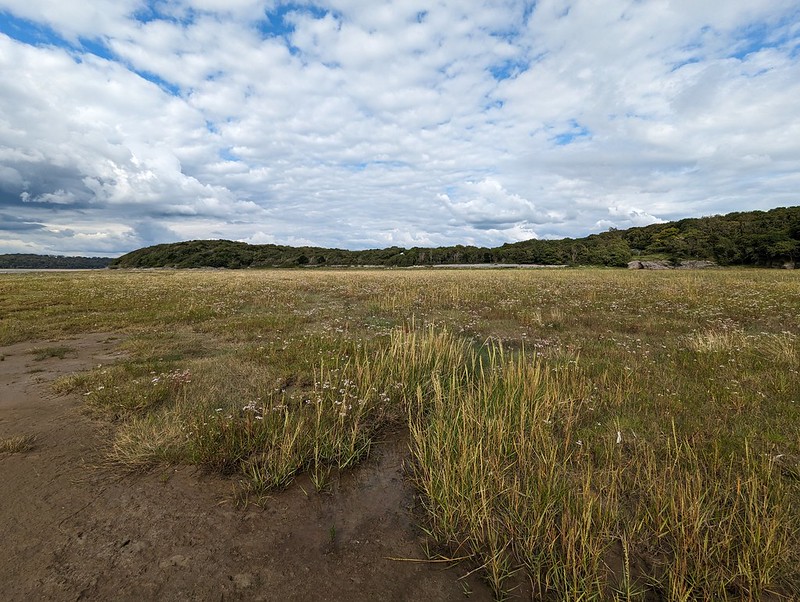

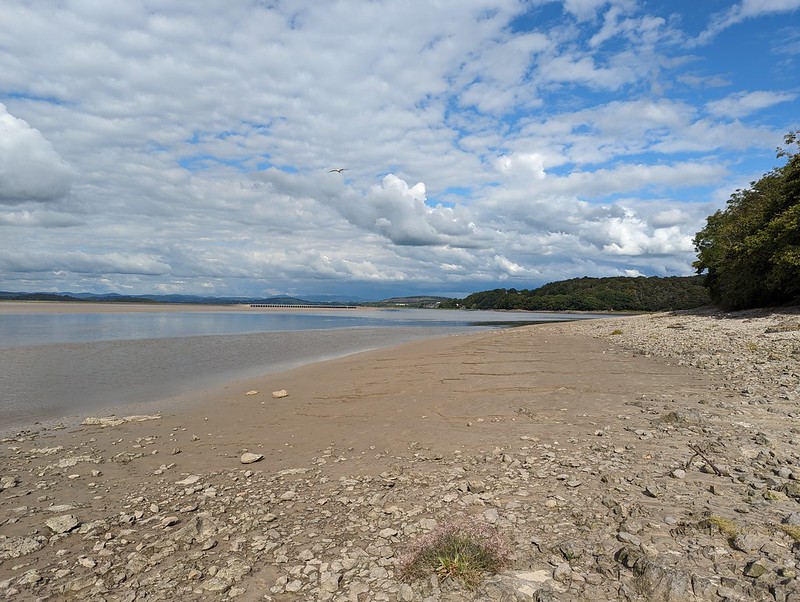
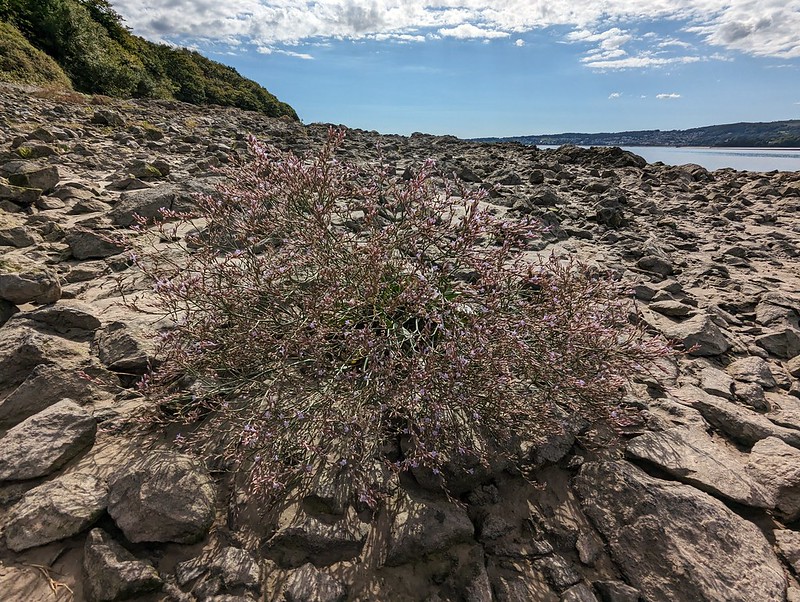

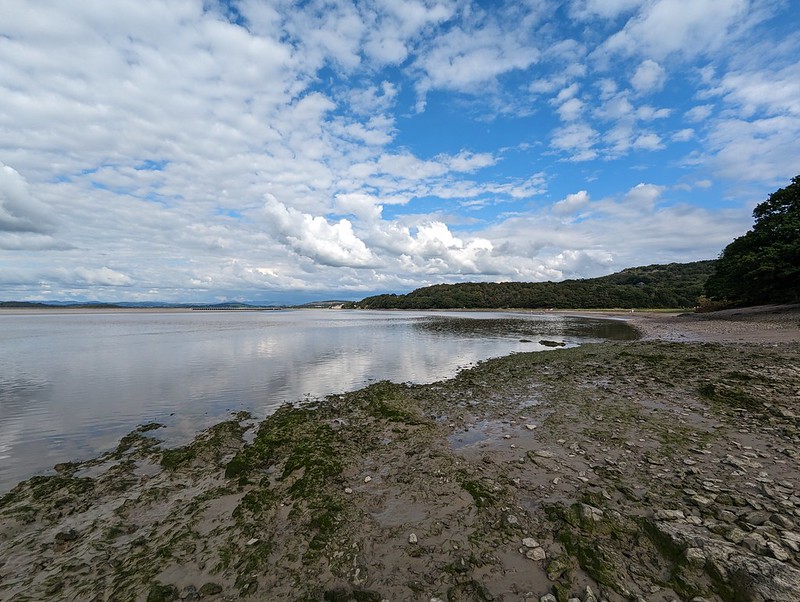

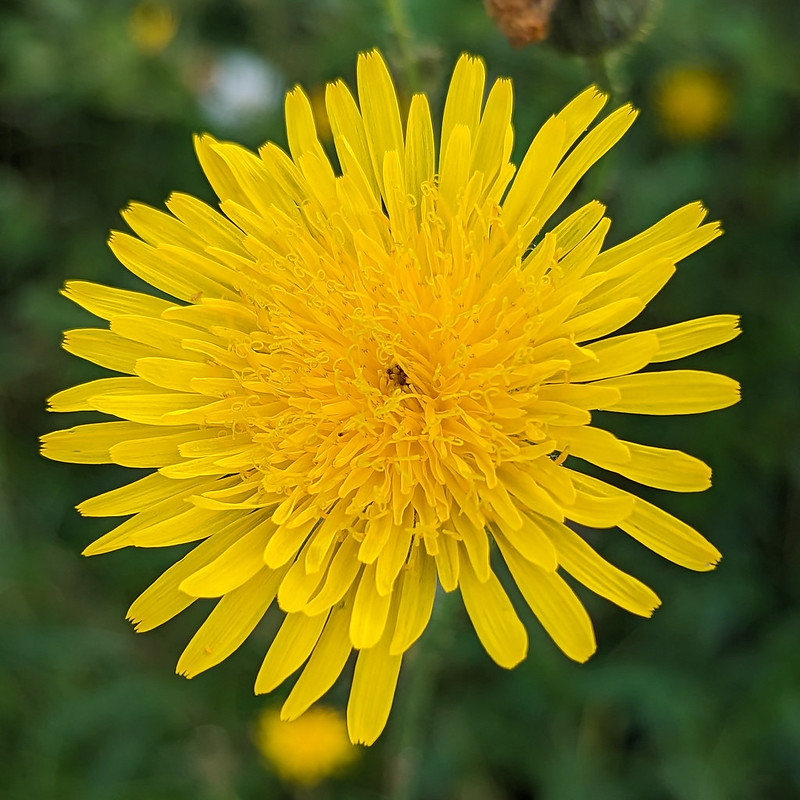


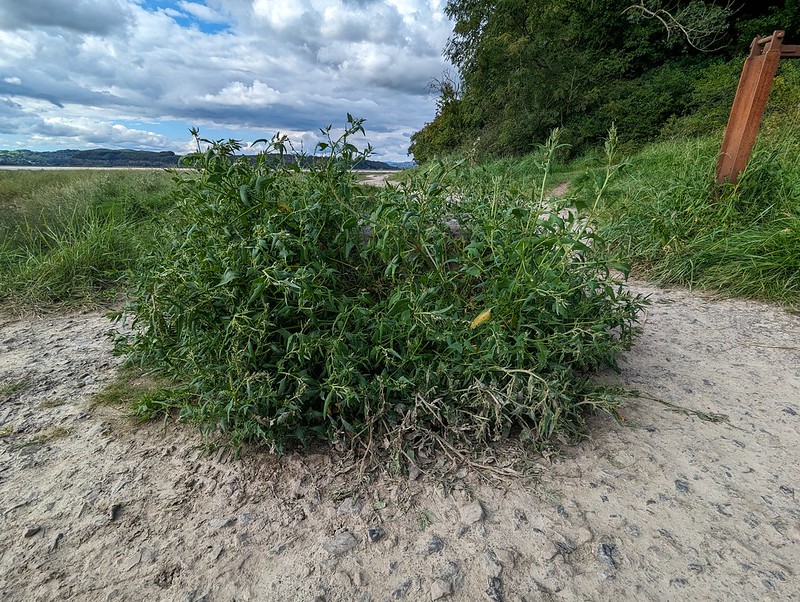
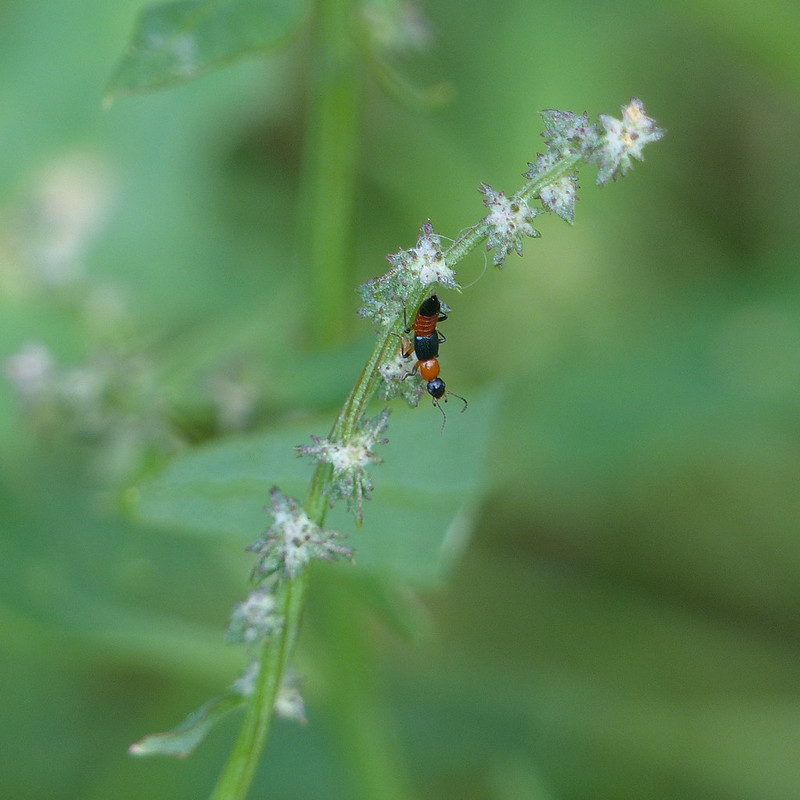
Paederus species are widespread across the world and I was surprised to discover that one (or possibly more) of them can cause severe skin reactions.



This tall clump of Sea Asters was thronged with bees and hoverflies, particularly Drone Flies.


A sixth species of butterfly for the day, not bad going.

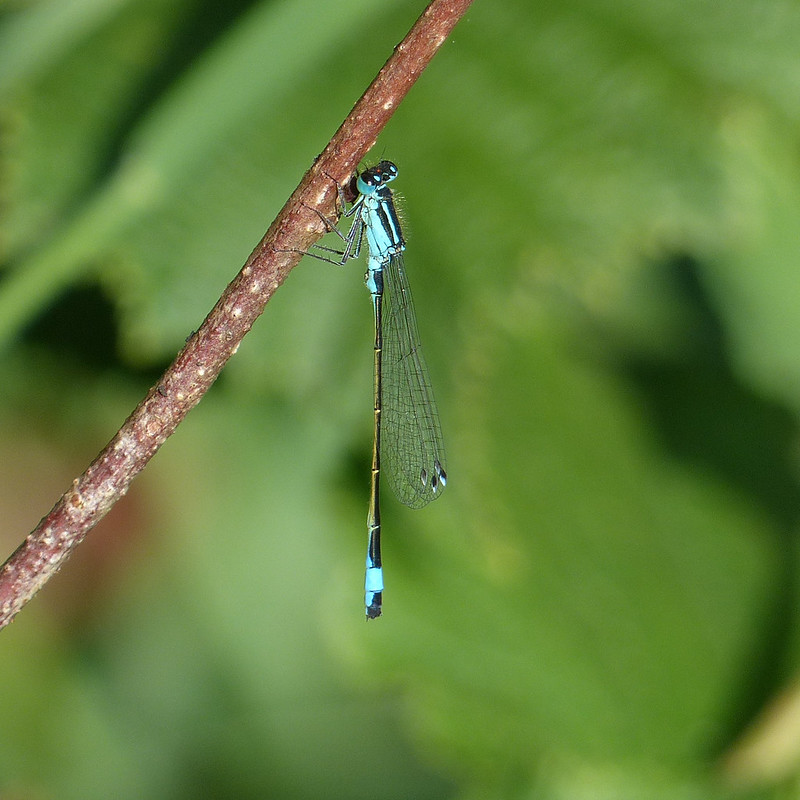
Over the years, I’ve taken countless photos of Blue-tailed Damselflies, but curiously, I don’t recall noticing the rather gorgeous two-toned wing-spots which are characteristic of the species before.

I’ve walked past the Sailing Club in Arnside many, many times. I’ve often thought of joining – I’ll no doubt get around to it at some point – but I’d never been inside their clubhouse. I have now. But I’m getting ahead of myself – that post is still some way off.
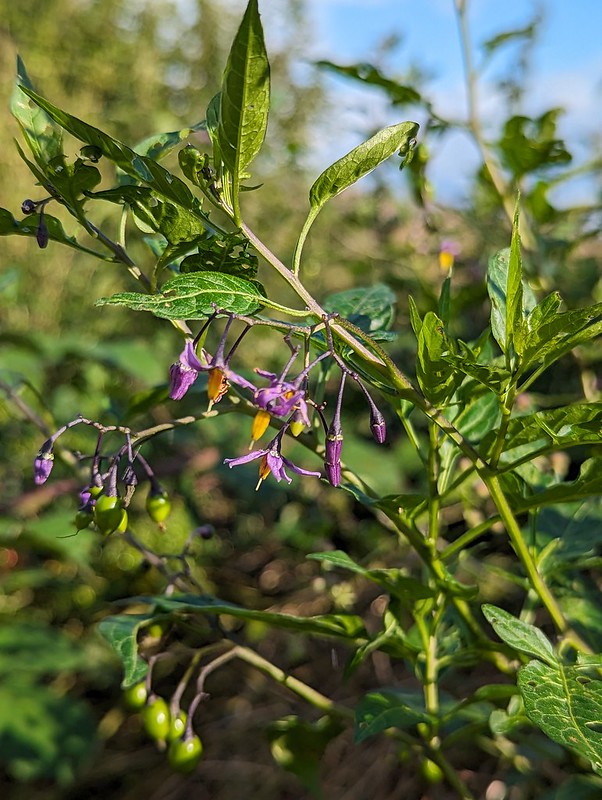
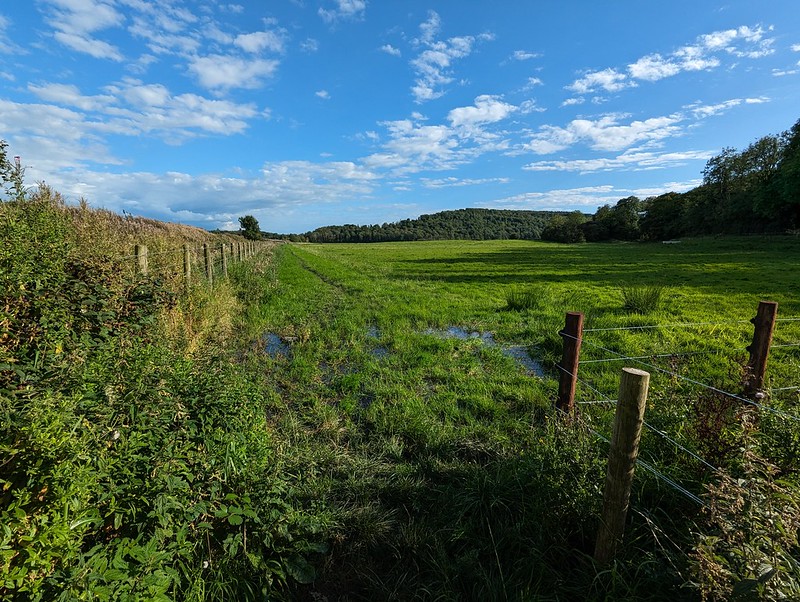
I’d only set-off from home mid-afternoon, so it was getting quite late. I’d originally intended to follow the path beside Black Dyke, but as you can perhaps tell, it was pretty water-logged, testament to what a wet year 2023 was. So instead, I turned left and headed East…

…towards some very dark looking skies.
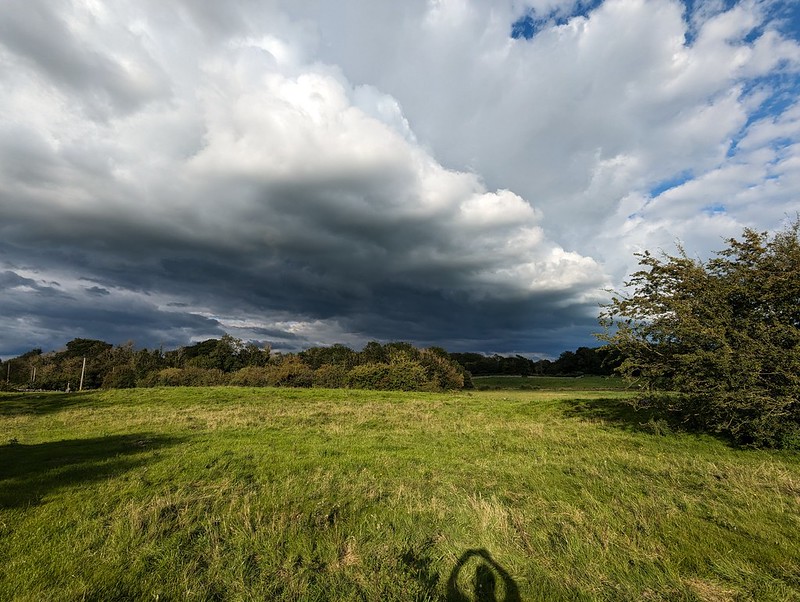

Long-suffering readers might know that I love to be on the edge of a weather front like this with strongly contrasting weather evident in different directions.

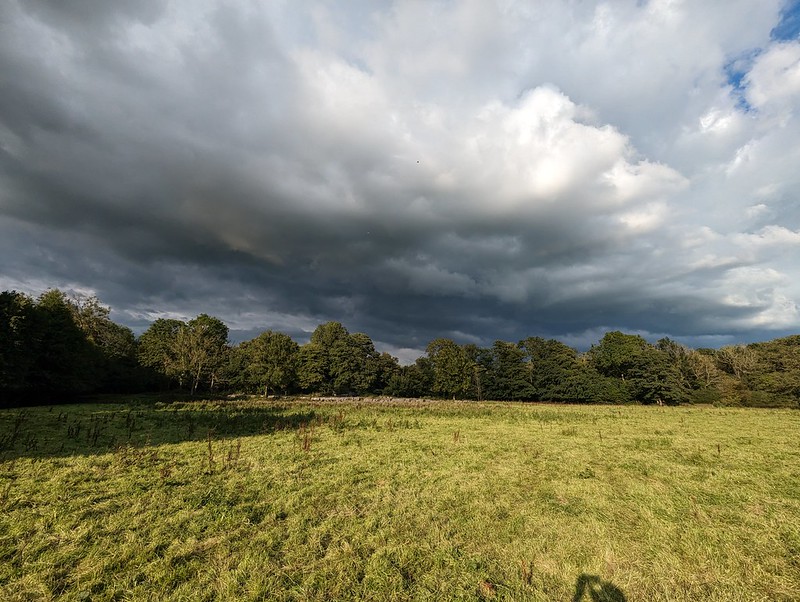
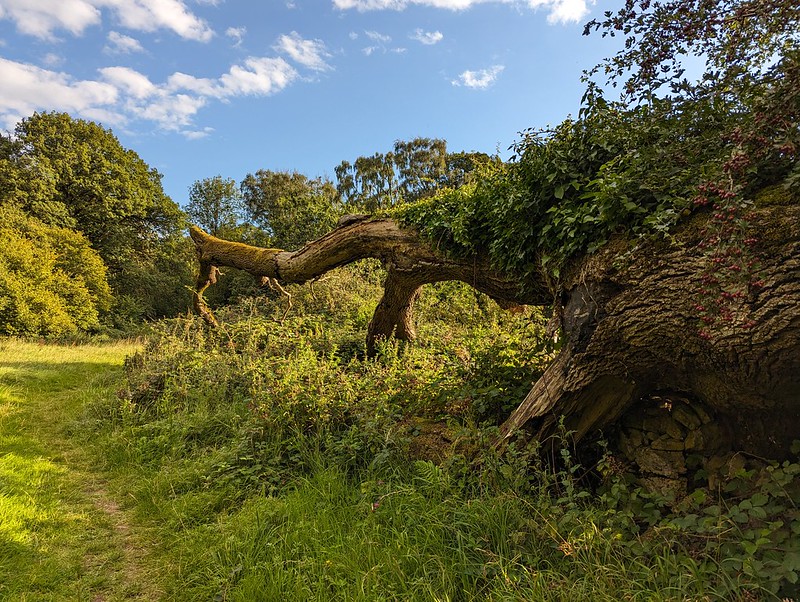

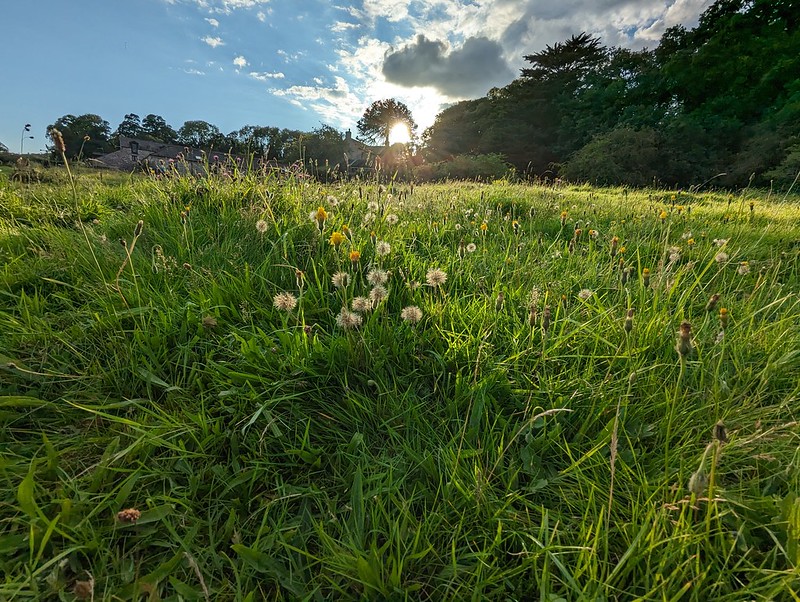
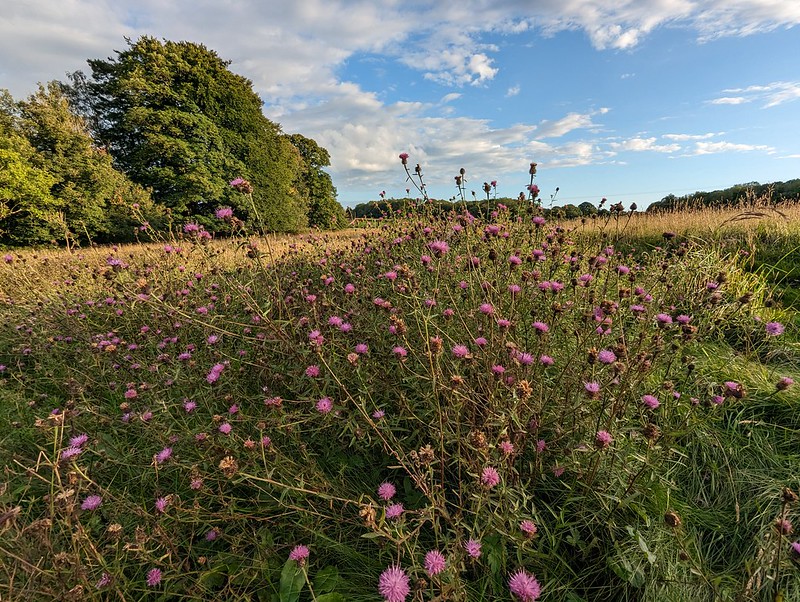
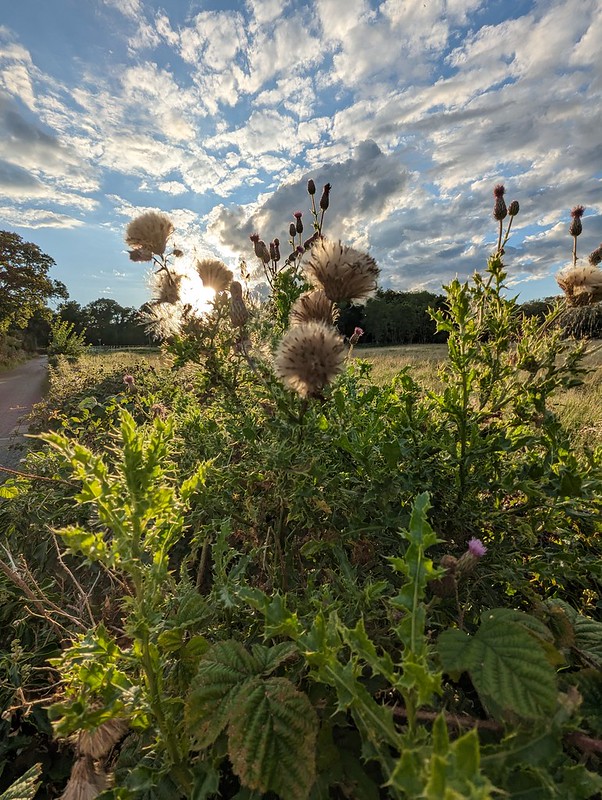

You may have noticed that no Skylarks appear in this post. The fact is, that I was listening to Horace Andy’s marvellous 1972 debut album ‘Skylarking’ whilst I was choosing the pictures for this post. Now that I’m almost done, my soundtrack is the similarly laidback reggae of John Holt’s ‘1000 Volts of Holt’.
A really delightful walk and a precursor to another family get together the following day.
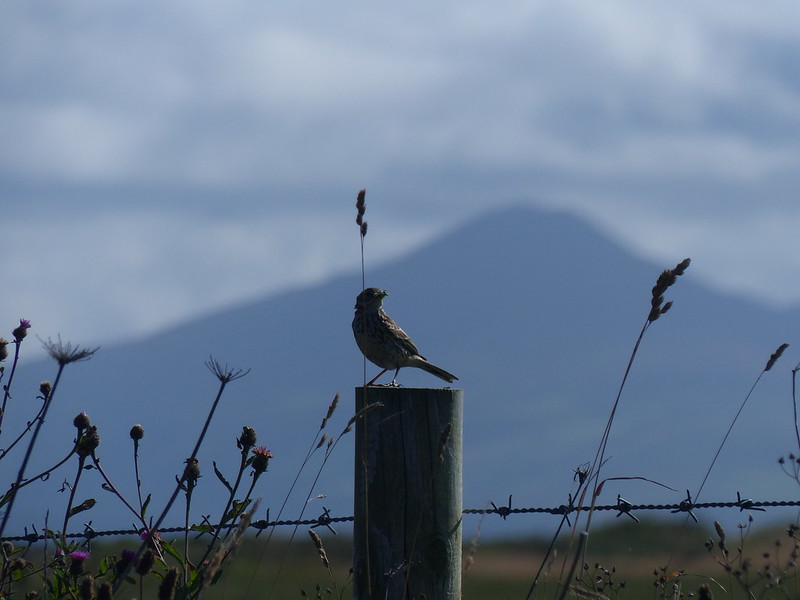
The first time we made what was to become our annual pilgrimage to the Llyn Peninsula to get our summer holiday kick-started, in 2006, the kids were toddlers. In fact, Little S wasn’t born until the following year. One of the many happy consequence of having our young brood with us, were early morning walks for me with one or other of the the boys in a baby carrier. The walks were always a great opportunity to see a bit of nature, particularly seals. I would invariably walk along the coastal path for a while and then turn back.
Thus summer, I was feeling nostalgic about those early morning outings, and although I’m not so good at early starts these days, on the Monday morning I managed to walk along the coast a little and be back for a late breakfast.
Since the weather had turned grotty when I’d turned right along the coast the previous day, I wanted to try that way again. And because the path had been initially very churned up, I decided to return along the minor lane and then take the track back to Porth Ysgaden where I’d turned back the day before.
As soon as was on the lane I met a large, black beetle and a hairy caterpillar.


There were lots of Gatekeepers enjoying the sunshine in the hedgerows.

And where the hedge was gorse bushes, there were myriad small webs, most with a tiny spider in its centre.

Because the spiders were so small, it was difficult to get either my ‘birding’ camera or my phone to focus on them. I thought perhaps I’d stumbled on some new-to-me small species of spider, but now that I’ve cropped some photos and had a proper look at them, I think they’re bog-standard, but none-the-less handsome Garden Spiders, Araneus diadematus.
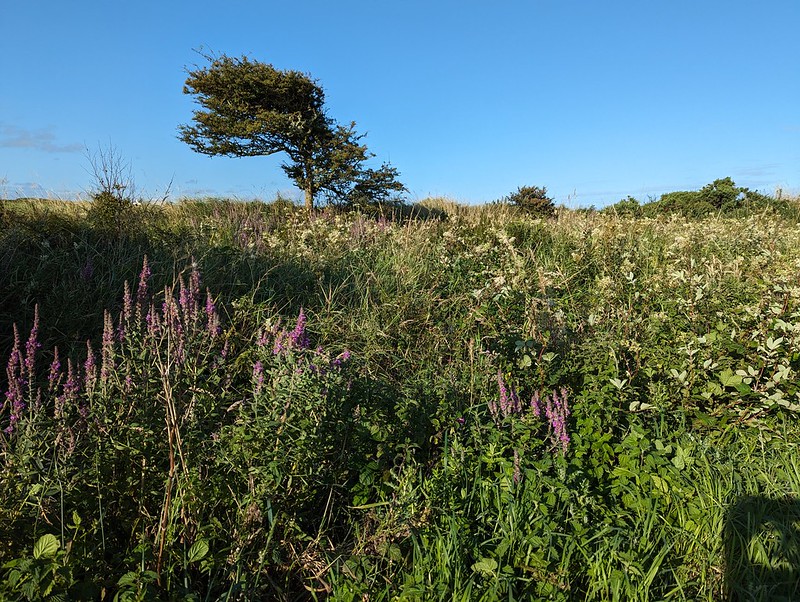
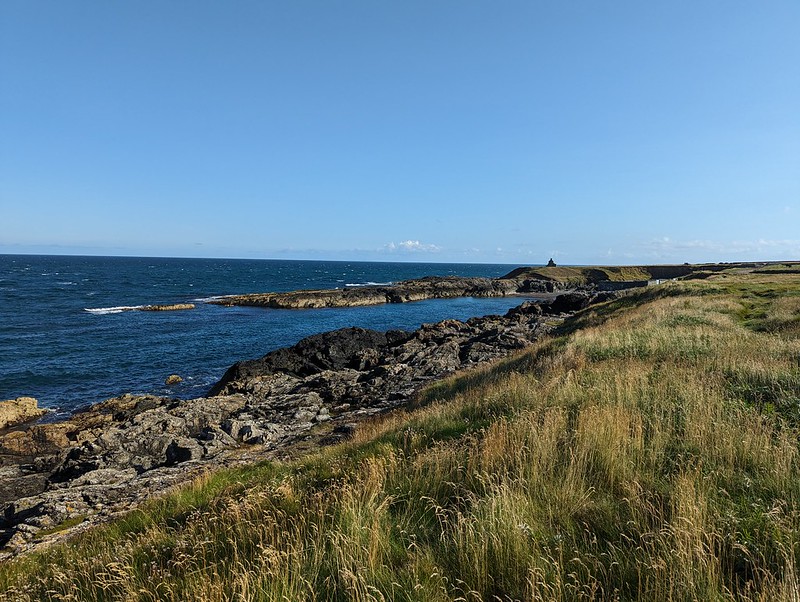
From Porth Ysgaden, the strip of land along the coast, which the path runs through, belongs to The National Trust. I remembered it as being a really pleasant stretch to walk, and I wasn’t wrong.

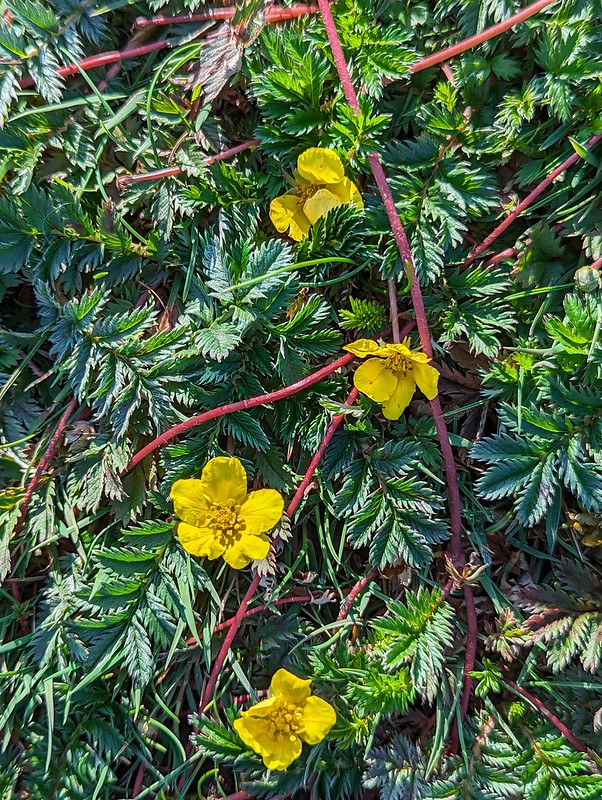

Silverweed is a common plant which is easy to find close to home, but I don’t think I’ve ever seen it looking as vigorous as it did along this stretch of grassland. The surface was matted with its scarlet runners. Apparently, Silverweed was once prized for its starchy tuber, which is good to eat, but I’ve read that it’s not wise to introduce it in your garden because it will take over, which I can well believe.

I followed the clifftop as closely as possible and kept getting tantalising views of a pair of corvids which I thought must be Choughs. Birds from the crow family often seem to take particular joy in their acrobatic displays in flight, and this pair of birds were swooping across the cliff faces and zawns with what looked like glee.
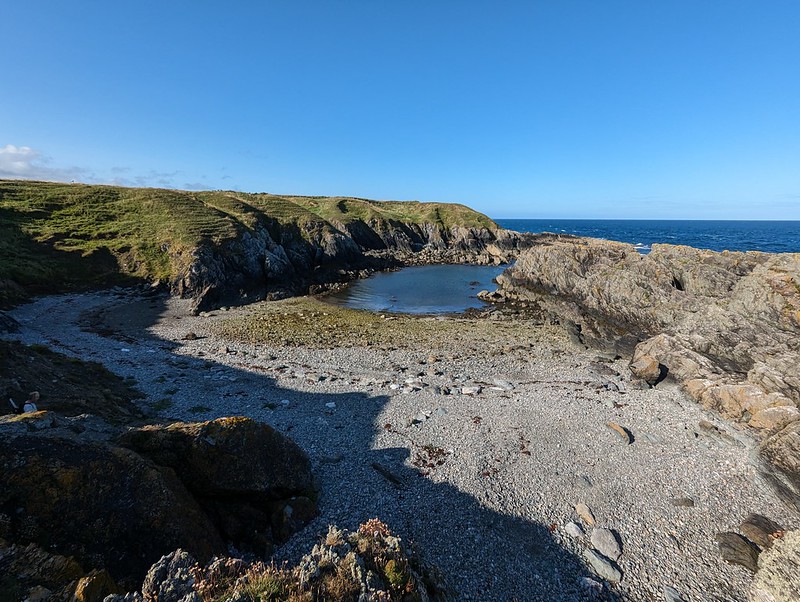
I was really taken with Porth Gwylan. If I’ve been this far along the coast before, then I don’t remember it. A long arm of rock forms a natural harbour. There were small whitecaps in the sea, but the water in the Porth was completely calm.
I thought this might be an interesting place to come snorkelling at some point.

The Choughs (or some Choughs at least) reappeared and stationed themselves at the end of the ‘harbour arm’, preening each other and generally looking right at home.
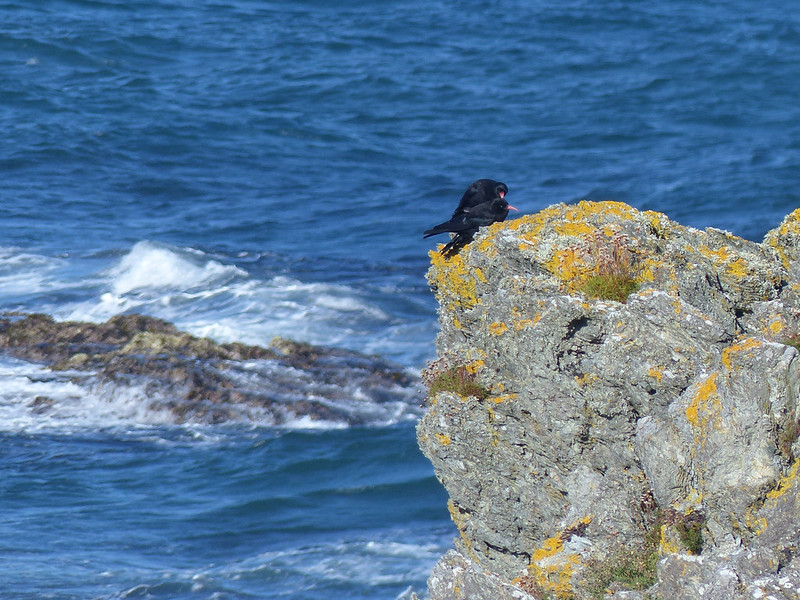

I would have loved to carry on: it seems crazy that, in all of our many visits over the years, I’ve never been a little down the coast to the long beach of Traeth Penllech or to the headland above it, Penrhyn Melyn, which I imagine is a wonderful viewpoint.
Having turned back, I decided to walk on the opposite side of the strip of coastal grassland, away from the sea, and by the low mounded hedge and the fence. This turned out to be a great idea, since, now that I wasn’t busy watching the sea, I discovered that this little patch of heath was thronging with birds.


A whole family of Stonechats were bobbing about in a thicket of brambles. I have some out-of-focus shots of an adult male, but only this juvenile posed for long enough for me to get some half decent photos.
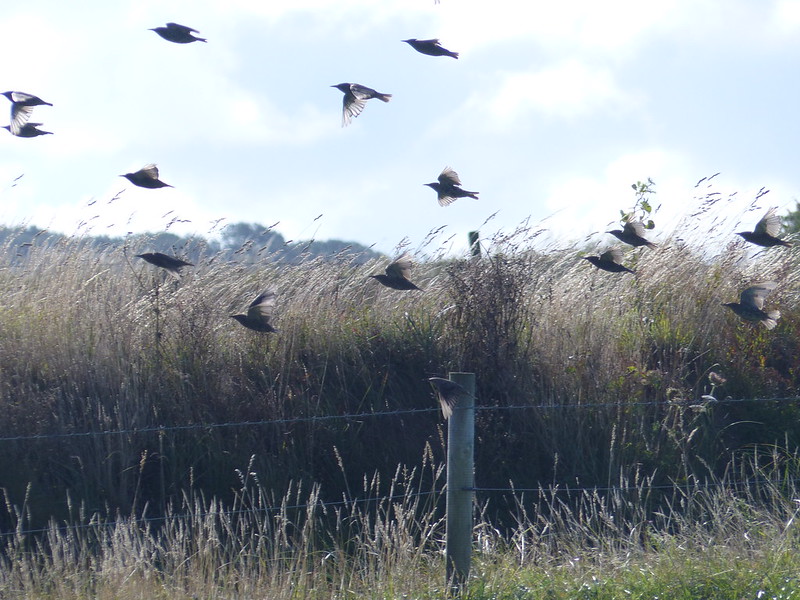
The fields beyond the hedge were busy with some quite large flocks of brown birds, which would periodically take to the wing, but then, on some unheard signal, all settle together in the vegetation in the field and disappear.

I think that they were juvenile Starlings, but that’s a tentative guess. As you can see, this particular field was dotted with blue flowers…

They look a little like Chicory flowers, but Chicory is a tall plant, and these definitely weren’t tall. From what I’ve read, it seems that a number of flowering plants are being used as green manure in fallow fields, so this may not even be a native British species anyway.

I’m still pretty rubbish at identifying LBJs, but I assume that this is a Meadow Pipit. There were quite a few of these about, but I’d only managed to get some very distant photos, before this one decided to pose for me on a fencepost, with a wriggly green grub in its beak.
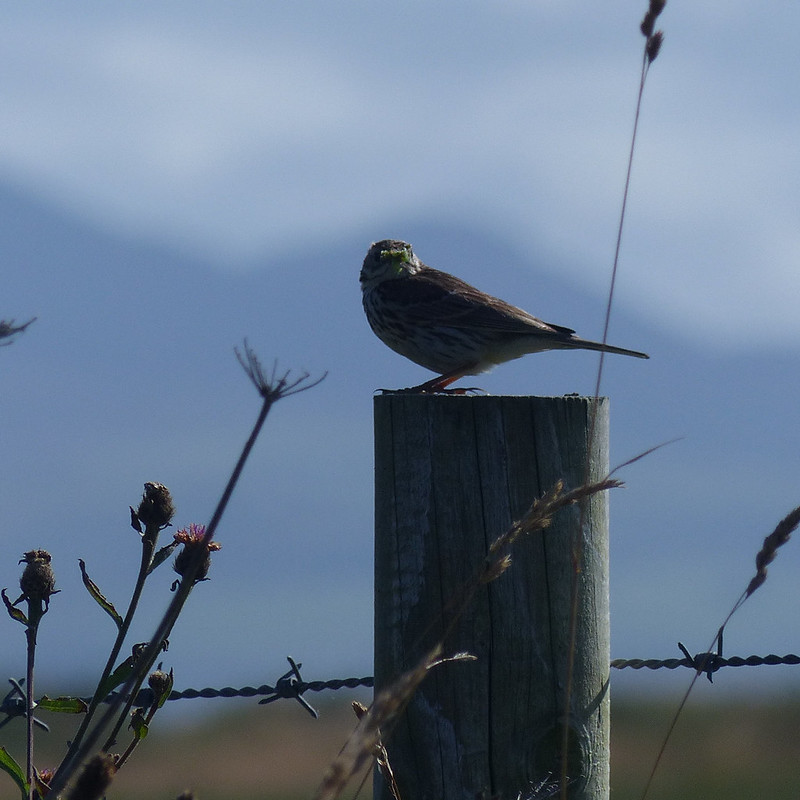

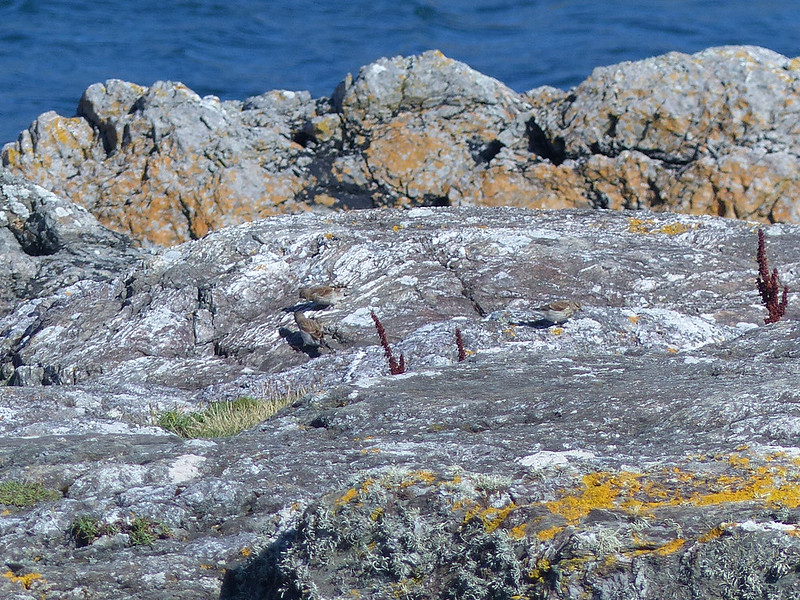
Back at Porth Ysgaden, I watched several more LBJs hopping about on the rocks. Because they were on the rocks, I naively assumed that they were Rock Pipits, but it now seems likeliest that they were more Meadow Pipits.
A lovely interlude. Next time, which will be next summer, all things being equal, I need to make it a little further down the coast. Maybe I should investigate public transport options so that I don’t have to walk out and back.
Ultimately, of course, I would like to walk the entire coast path around the peninsula, that would be a treat.


The photos in this post are all from two walks around home from the first Saturday in July. The random musings are more recent.
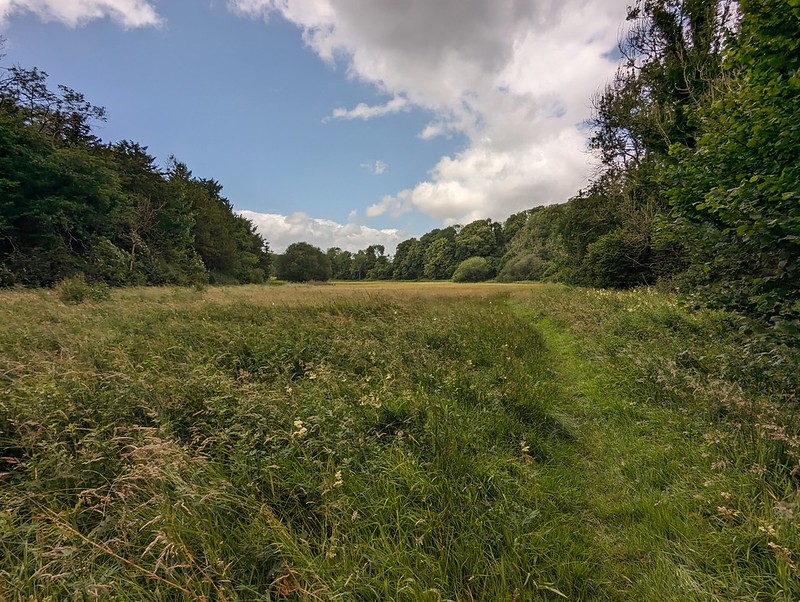
I remember there was a bit of a fuss about a Slow Food movement a few years ago, wasn’t there? Started in Italy, apparently. I was thinking about this, because I was idly contemplating the concept of a Slow Walking movement.
Although movement sounds a bit energetic in this context.
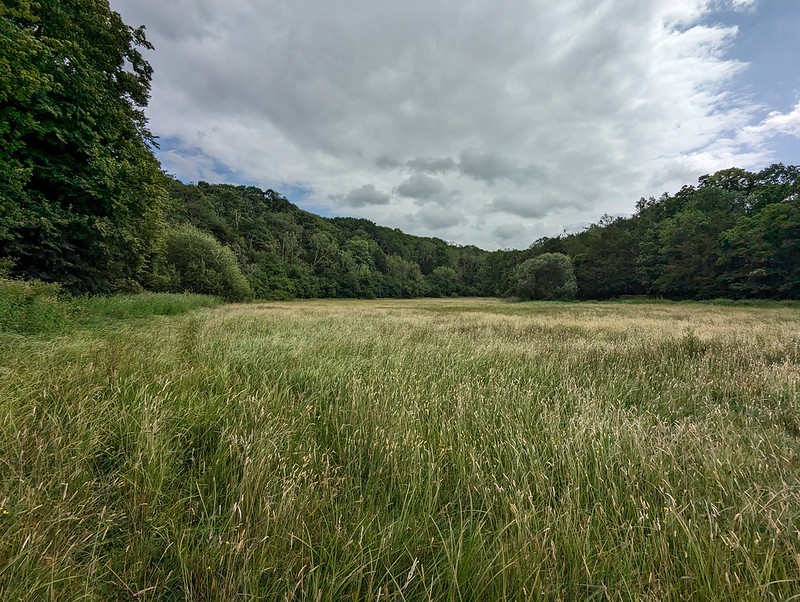
Apparently, there’s already a Slow Living campaign:
“Slow living is a lifestyle which encourages a slower approach to aspects of everyday life, involving completing tasks at a leisurely pace.”

Leisurely pace. Yup.
Monotasking.
If that.

I read somewhere that this year was a good one for butterflies. I can’t say it seemed that way particularly, from my perspective. I did see a lot of Silver Y moths though. They migrate here from the continent apparently. Overachievers.
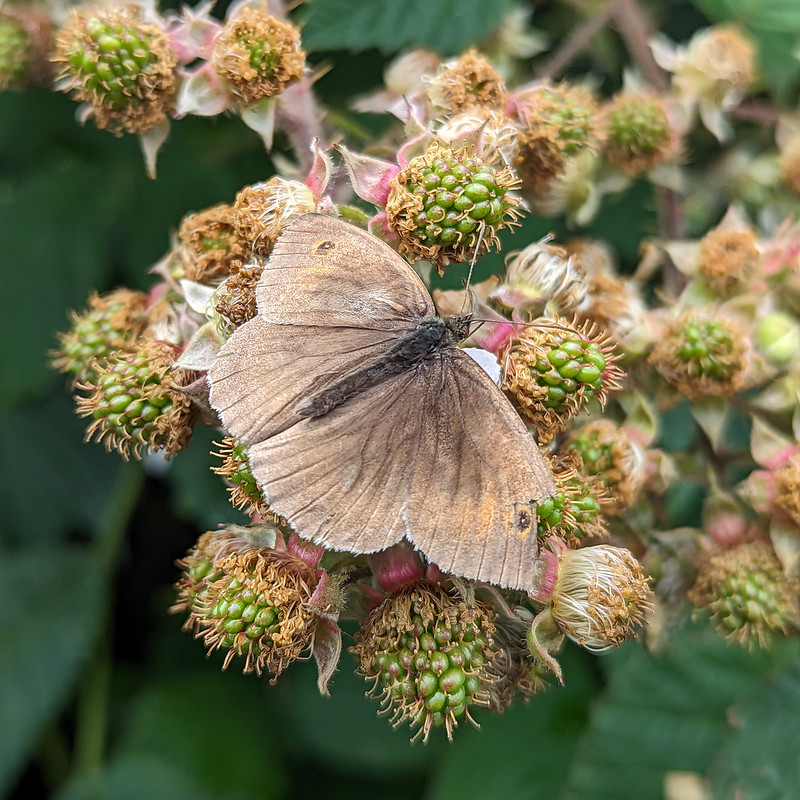
For various reasons, TBH has put a lot of effort into researching ADHD recently. Now and again, she gives me articles to read, or listen to. They usually make me chuckle with recognition.

Whilst not a recognised symptom, apparently people with ADHD often display hyperfocus.
“Hyperfocus is highly focused attention that lasts a long time. You concentrate on something so hard that you lose track of everything else going on around you.”

The example given in the article TBH showed me yesterday was of a child continuing to read a book under a desk, which is me all over. I imagine slowly plodding around a field taking hundreds of photos of bugs, bees, flies, fleas and creepy-crawlies probably qualifies too.
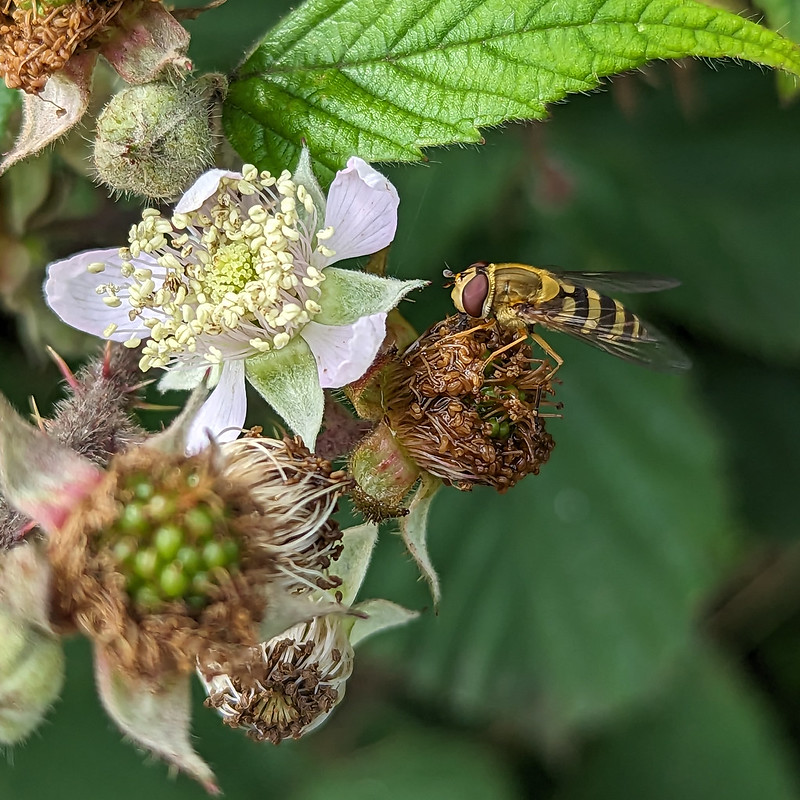
I realise that it can seem like half-the-world is busy self-diagnosing ADHD these days, but that’s okay isn’t it? We can all be neuro-diverse, we all have our little, or not so little, idiosyncrasies.
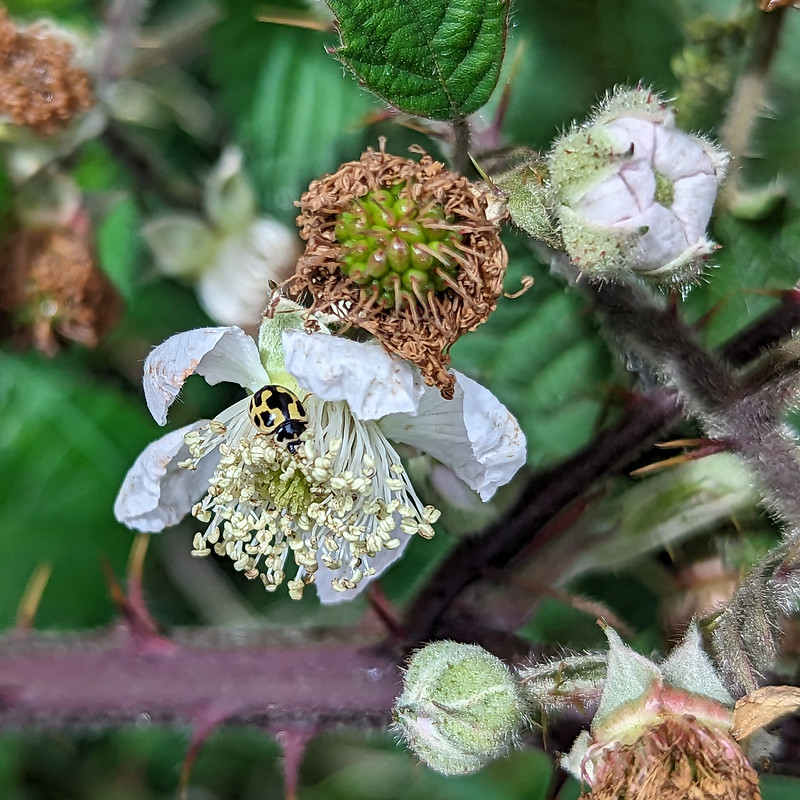

Similar colouring to a Twenty-two-spot ladybird, but much bigger, and the spots are more rectangular and less round, and can merge together.
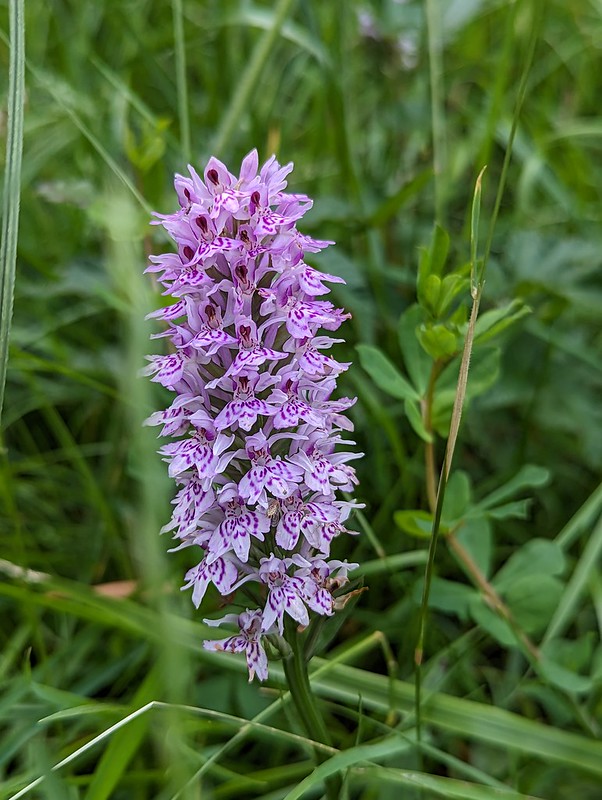

Apparently these longhorn beetles, in their larval stage, live on dead wood for three years – then they get a fortnight in the sun to mate. They’re certainly very striking. The black and yellow markings seem to be very variable. I’m fairly confident that I saw beetles of this species several times this summer at Lambert’s Meadow, but this was the only time that I managed to get clear photos.

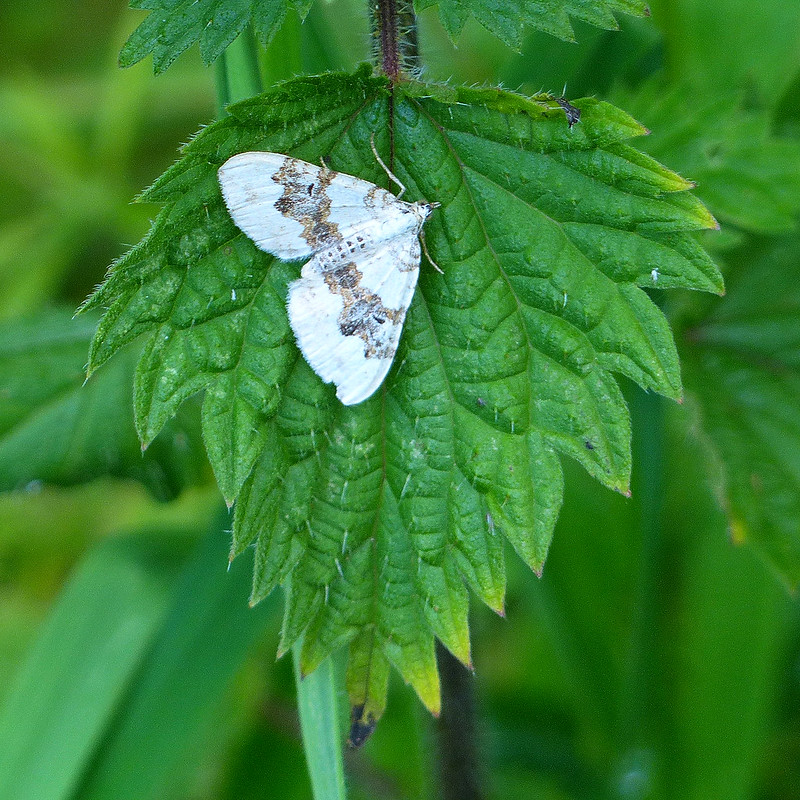

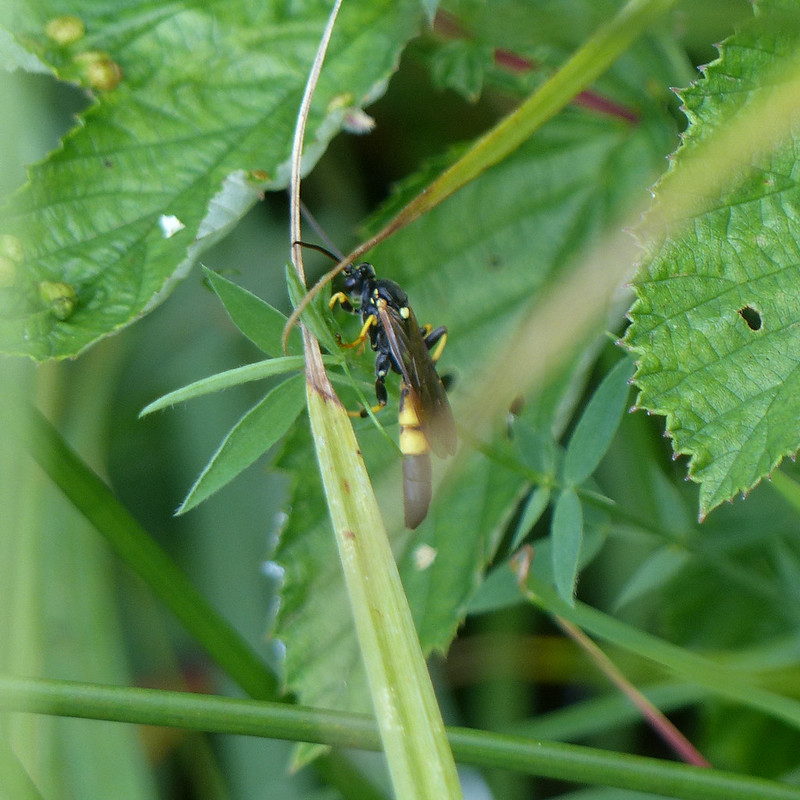
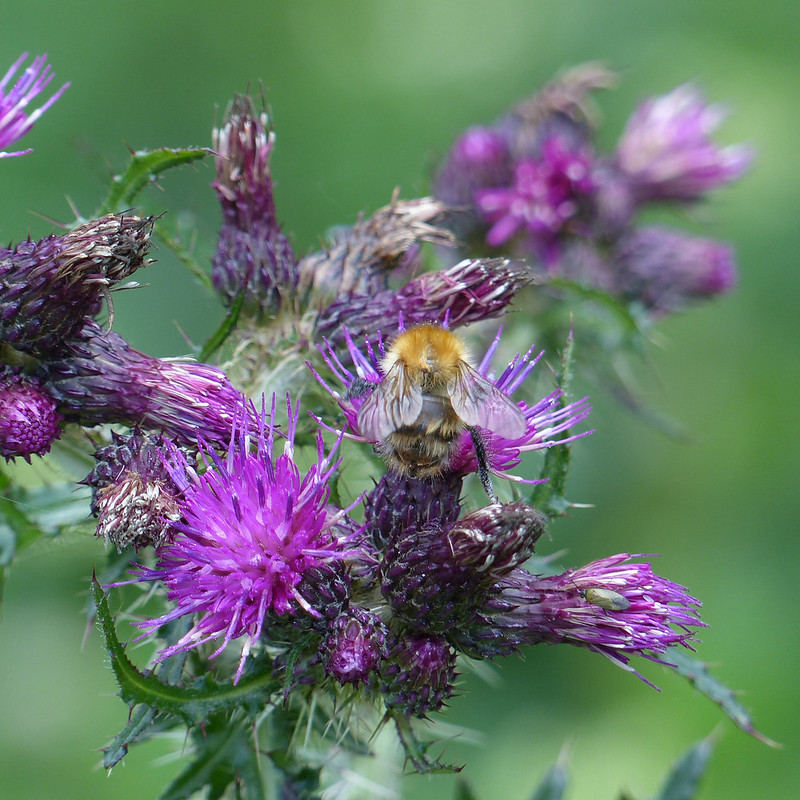
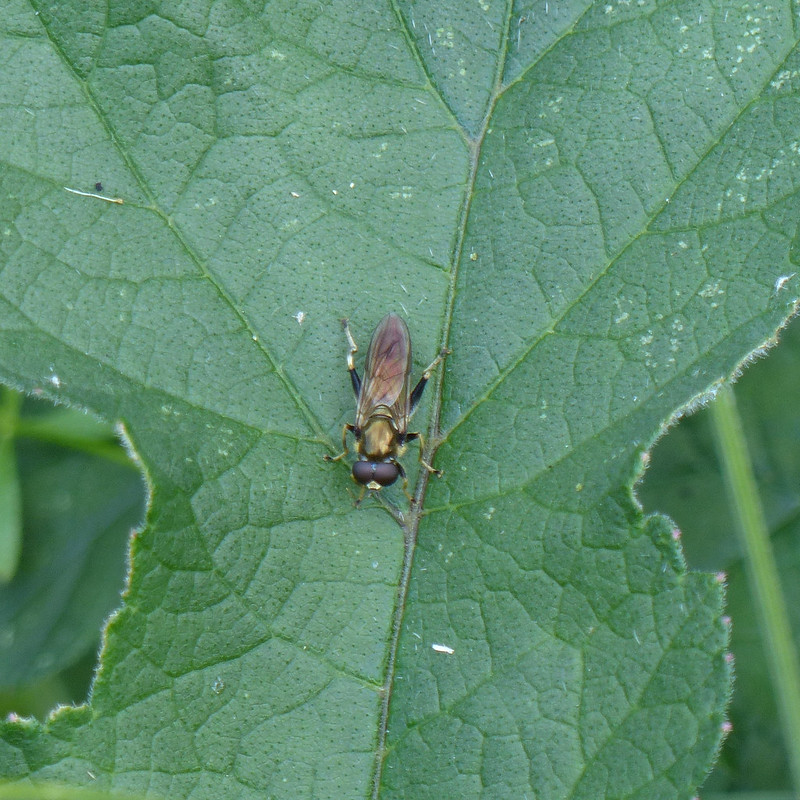
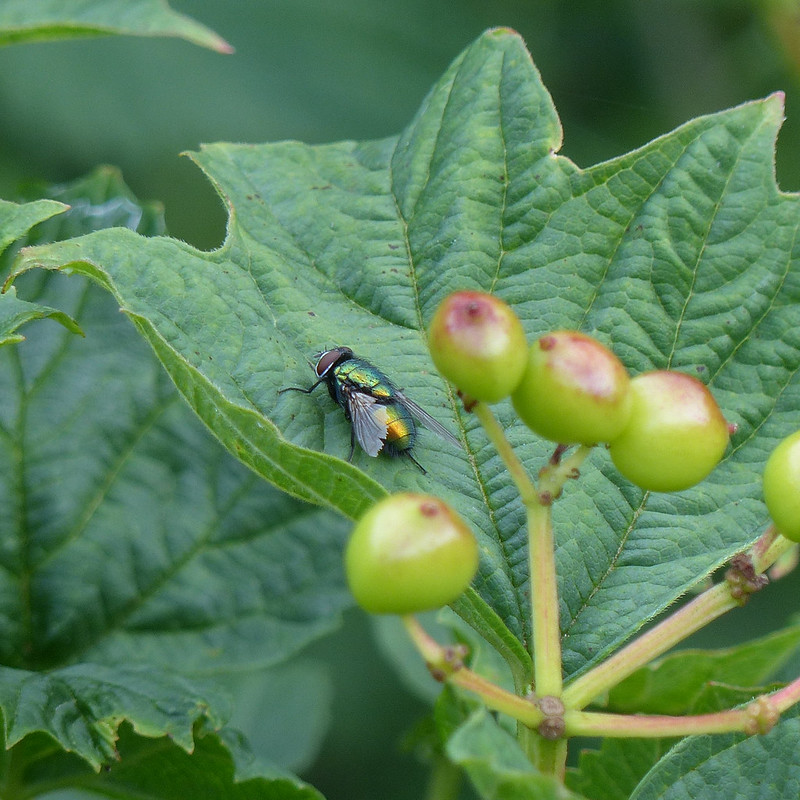
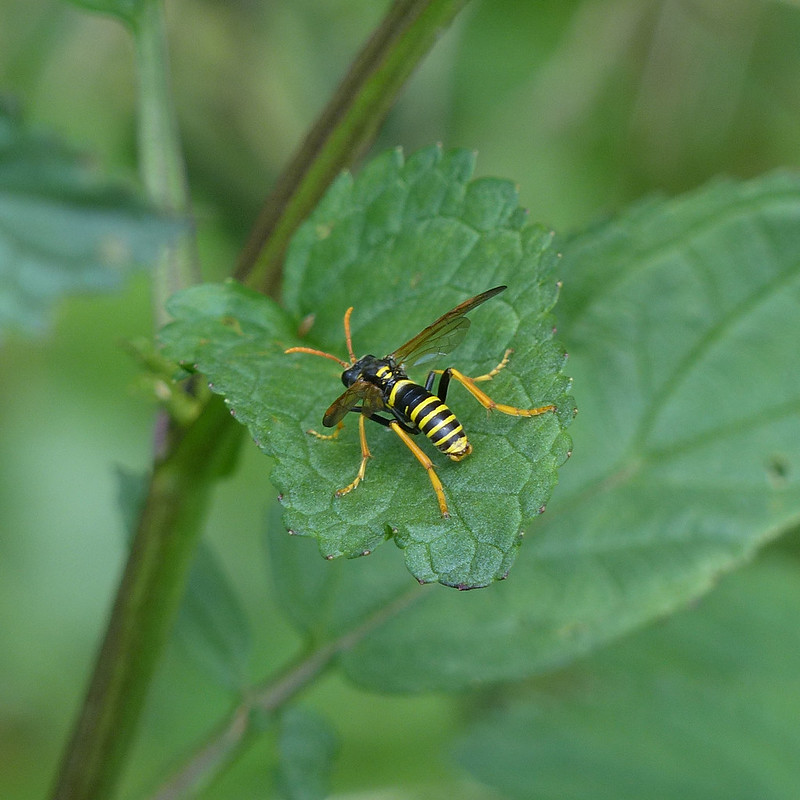

I’m hoping that the weevils and sawflies which live on Figwort, about which I was completely ignorant before this year, will become familiar sights now that I know where to look and what to expect. That has certainly happened with a wide variety of other species that I’ve become aware of over the years.



The little green bug here has hind legs reminiscent of a grasshopper or cricket – but it’s so small, no bigger than the tiny weevil, that it can’t be one of those can it? Except, I’ve discovered, that grasshoppers and crickets undergo five moults, becoming more like an adult at each stage, so maybe this is a small hopper.



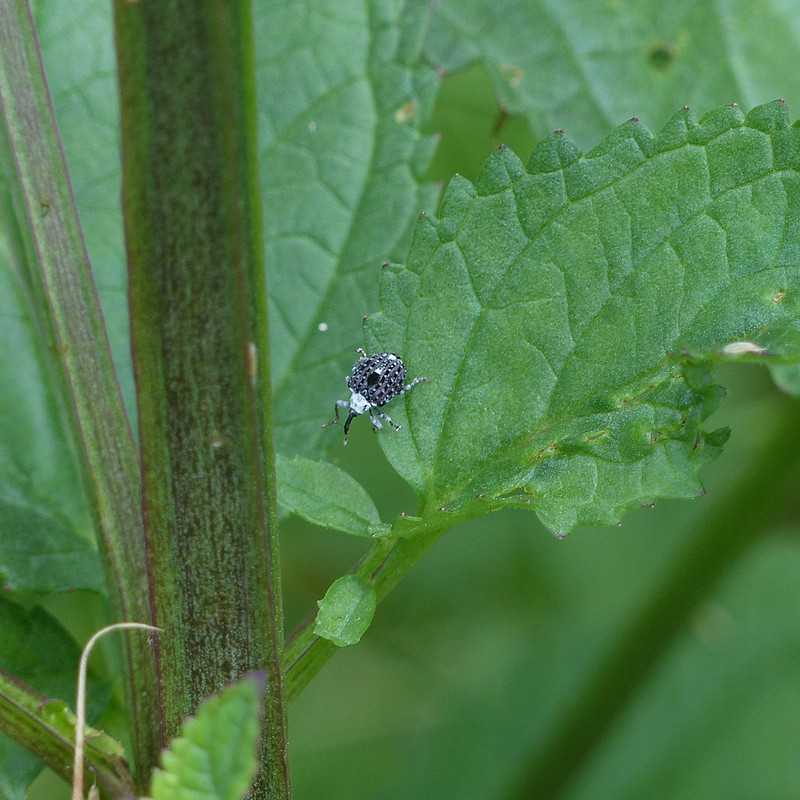


There were lots of Figwort Sawflies about. Plenty of Weevils too. Lots of damselflies also, but, for some reason, not many of my damselfly photos were very sharp.




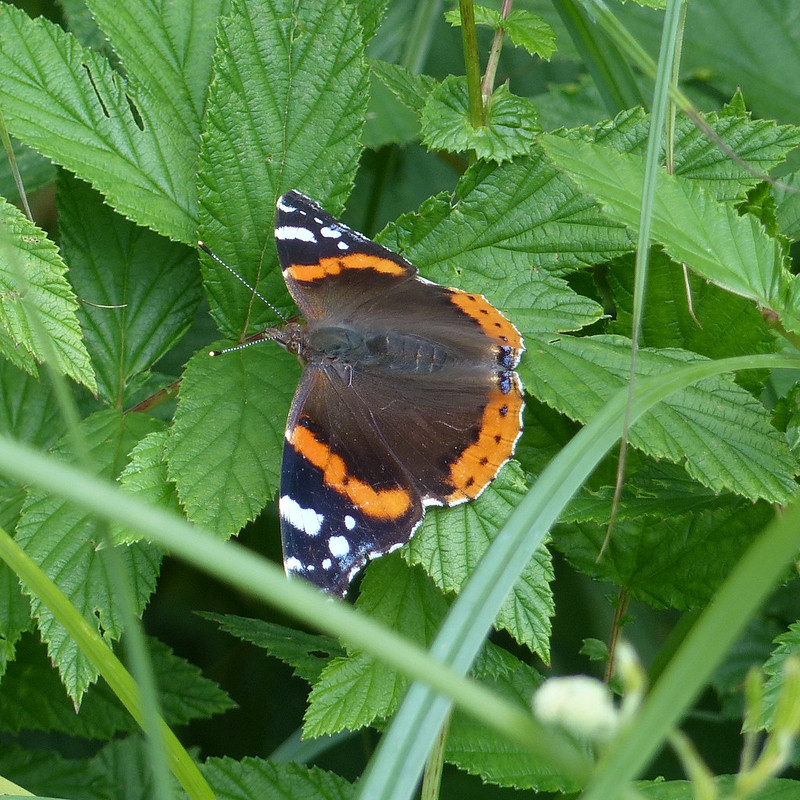
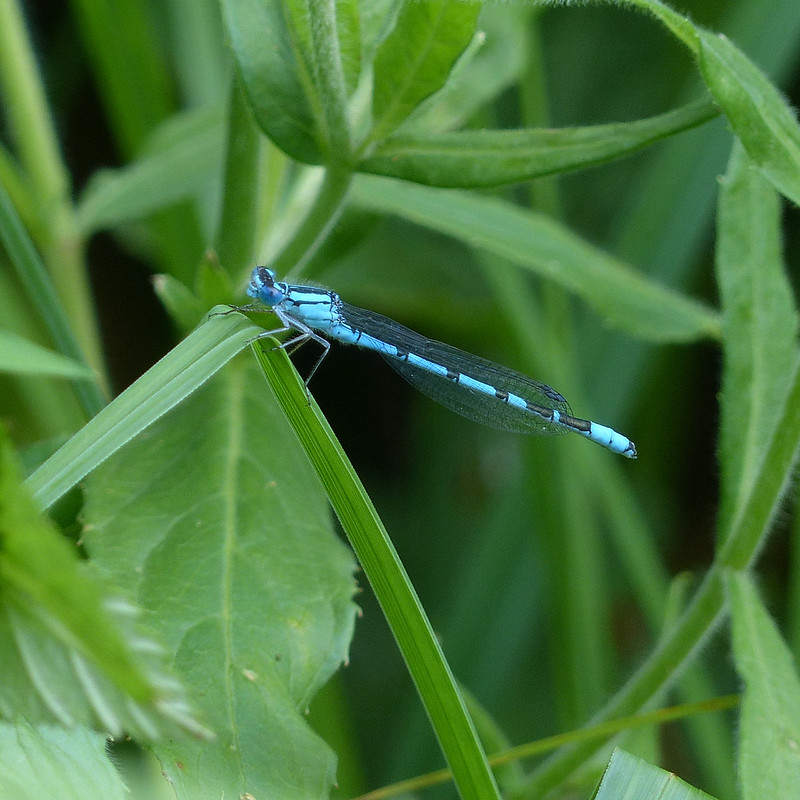

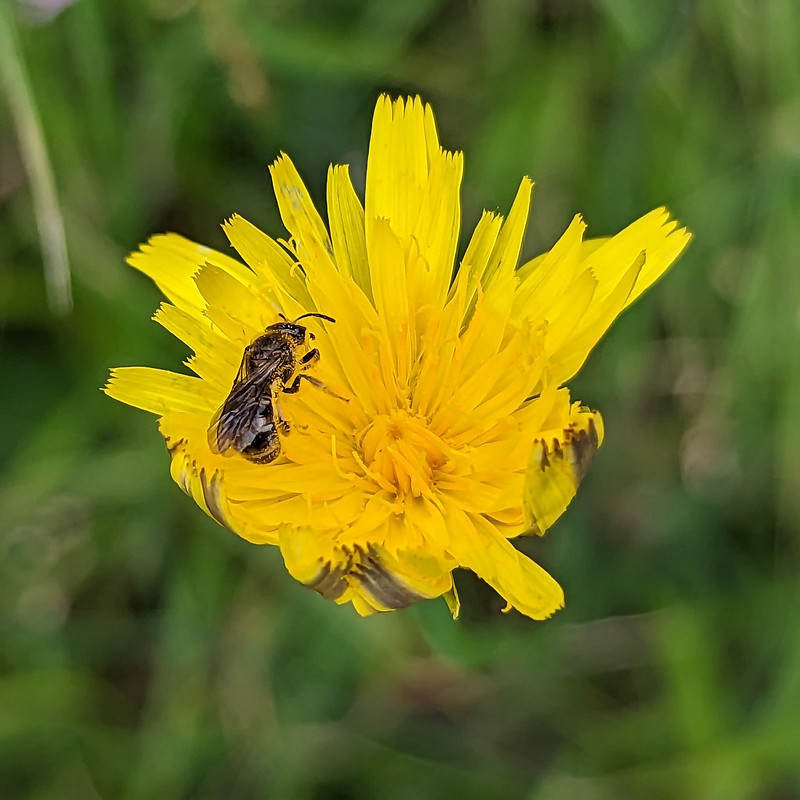

I had five cameras with me on my walk. My Panasonic and the four in my phone. I didn’t use the selfie camera on this occasion. The other three are labelled as -7, x1 and x2. How come a zoom is a multiplication, which makes sense I suppose, but a wide angle is a subtraction?
I’ve found myself using the -7 camera as lot. It’s not as powerful, in terms of the huge numbers of megapixels on offer – but I like the perspective it often gives.
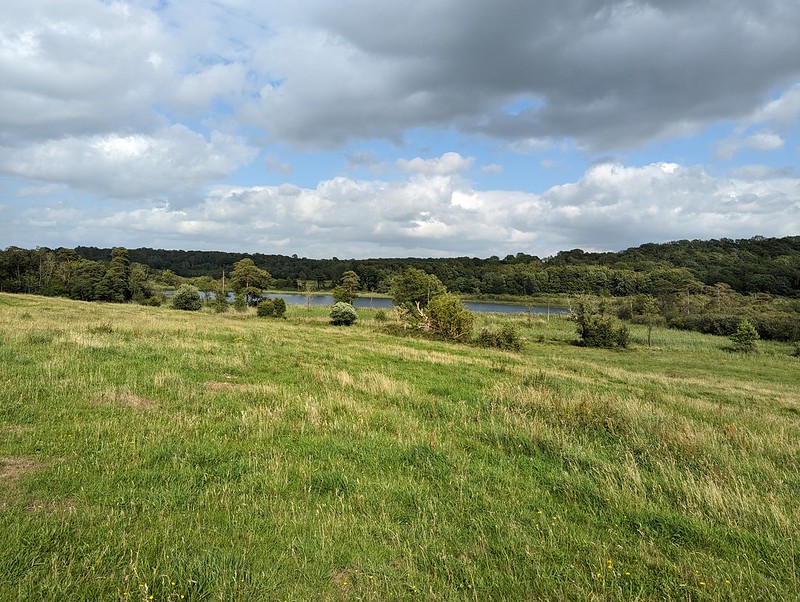


Two shortish local walks from a Sunday in mid-June. The first was only about a mile and a half, around the local lanes in search of elderflower, which I’d realised was coming to an end. I still managed to find plenty for TBH to produce our usual annual supply of cordial.

Naturally, there were plenty of distractions between Elder shrubs, principally bees on the many wild roses and brambles flowering in the hedgerows.

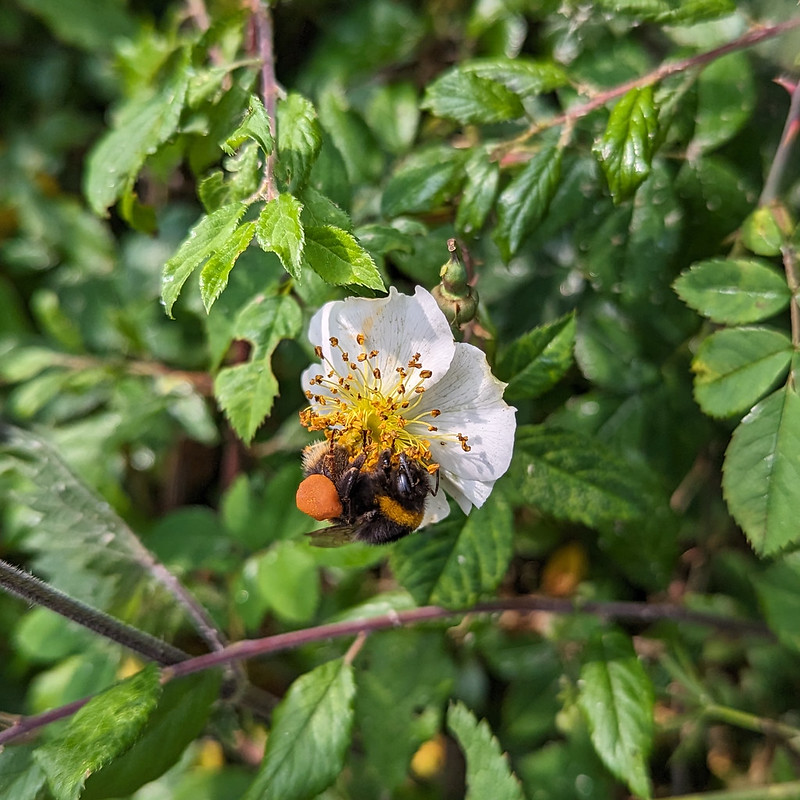
I was amazed by the size of the pollen baskets on this bumblebee, her foraging expedition was clearly even more successful than mine.
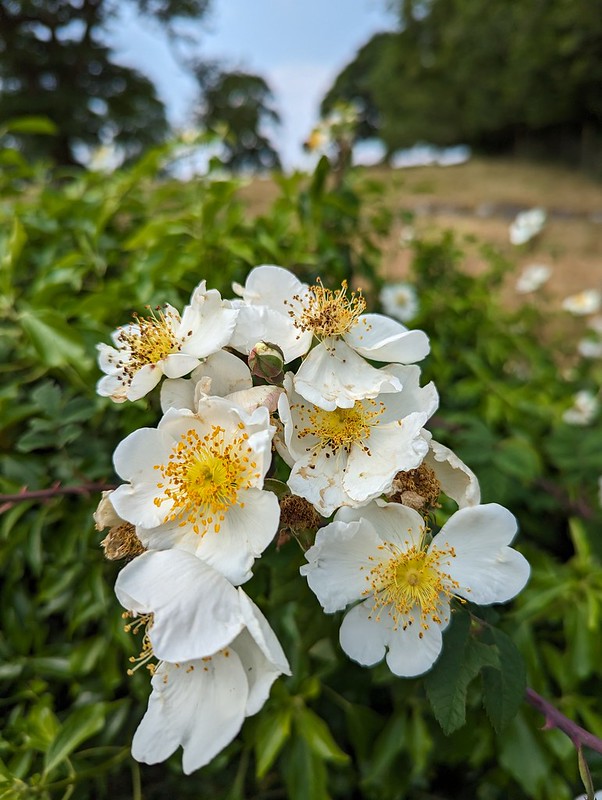
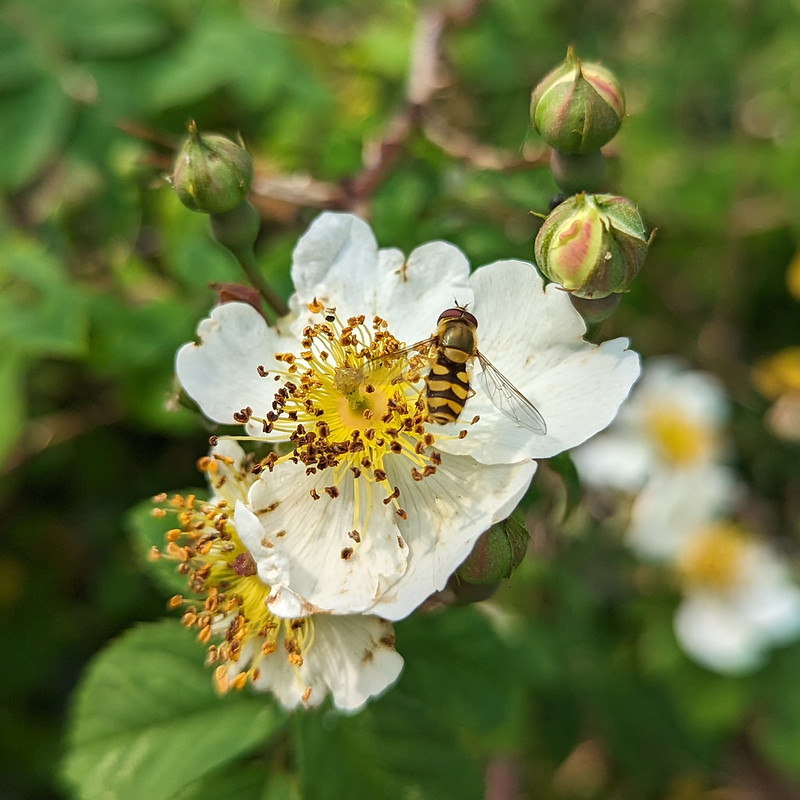
There are several different species of wild rose in Britain, but I think the two most common are Field Rose and Dog Rose. I’ve never known how to distinguish between the two, but a bit of internet research suggests that the tall column in the centre of this flower makes it a Field Rose.
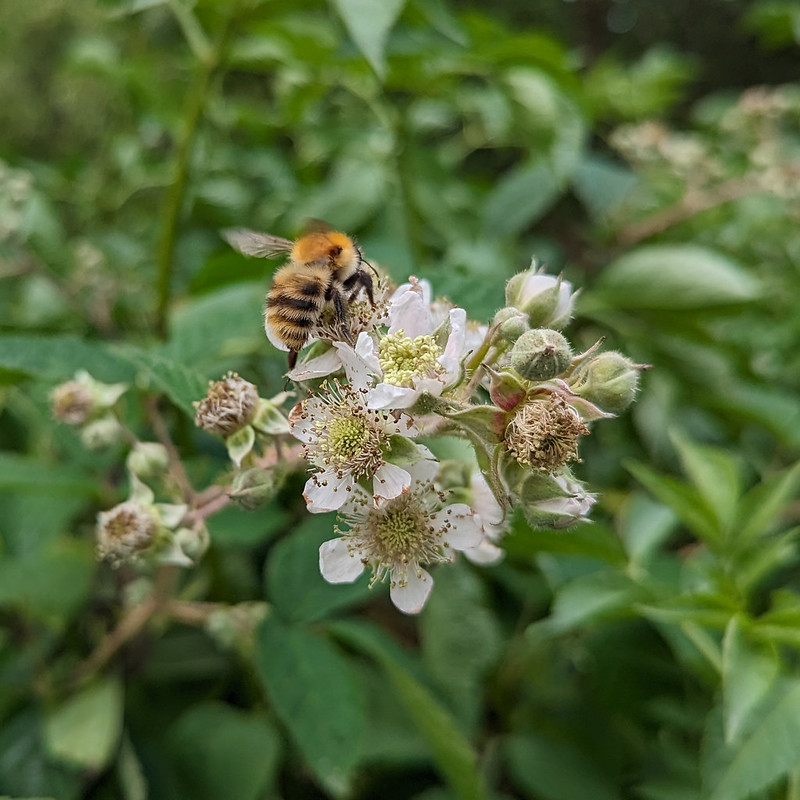
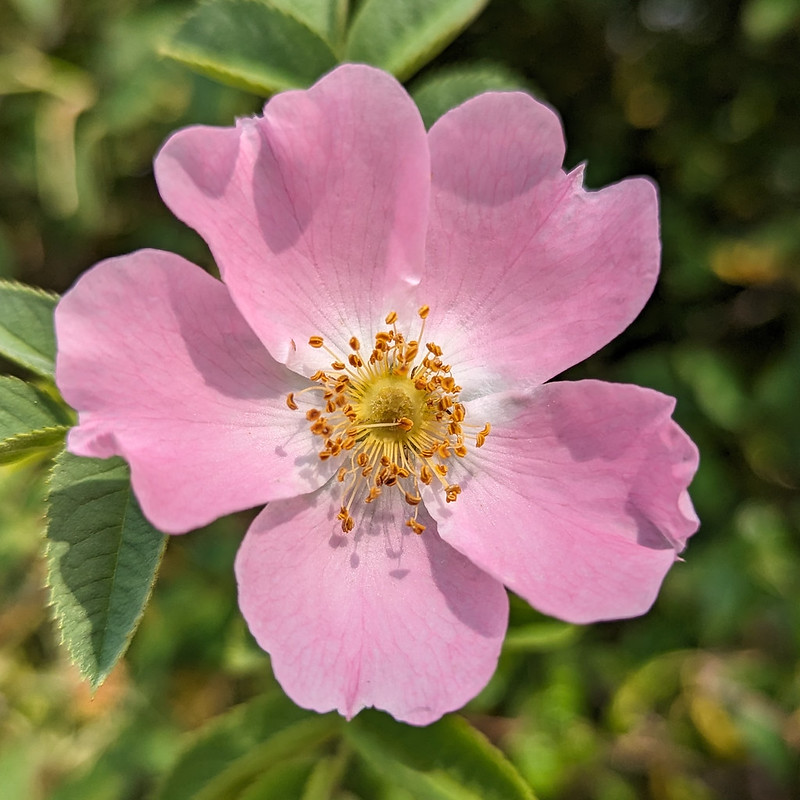
Later, I was out again for a meander around Eaves Wood and Middlebarrow Wood and then on to Lambert’s Meadow. It was around five miles in total, and packed with interest.

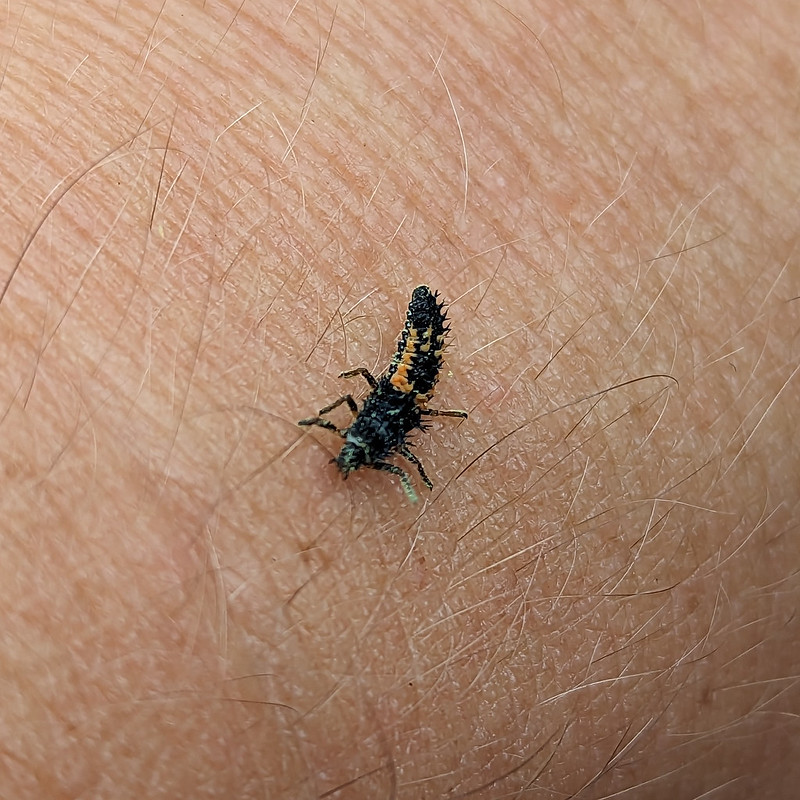
Another selfie – this ladybird larva hitched a lift on my wrist.
Eaves Wood and Middlebarrow Wood are really just the one woodland. The former is in Lancashire and the latter Cumbria; Eaves Wood is owned by the National Trust and the woods on the north side of Middlebarrow are owned, I think, by Holgates and by Dallam Tower Estate. But I don’t suppose the local flora and fauna notices the distinctions.
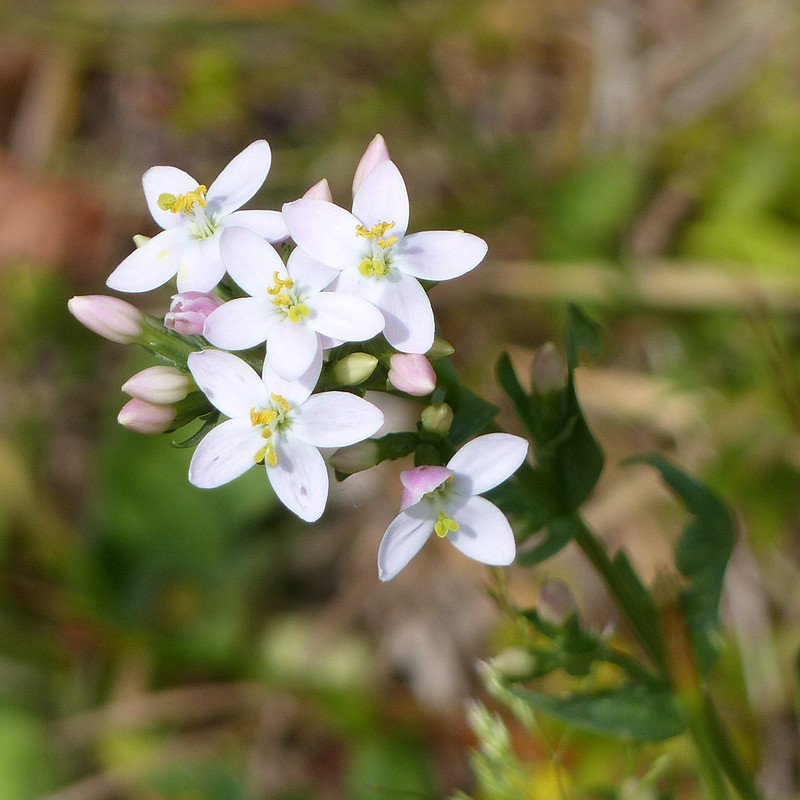
The glades and wider pathways in Middlebarrow Wood were dotted with Common Centuary. It’s usually pink, but many of the flowers I saw were almost white. I wonder if the long sunny spell had made them fade?

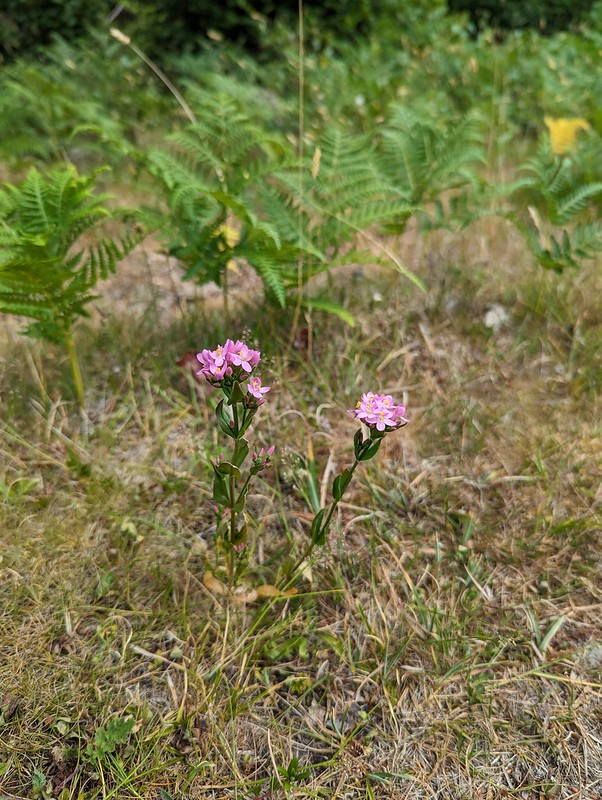
Having waited years to get my first photo of an Emperor Dragonfly, I managed to photograph three in the woods on this Sunday. This is my favourite photo…
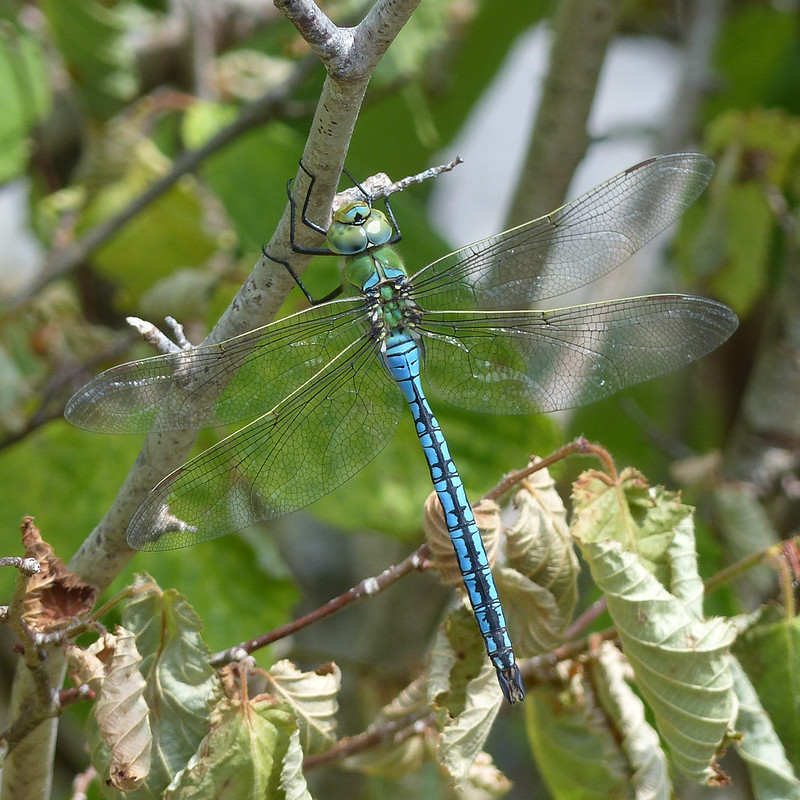
I’m fairly sure that this is a male. The female would have a thicker black line running down the abdomen. The green thorax, yellow costa (line along the top of each wing) and the brown wing-spots are characteristic of Emperors.
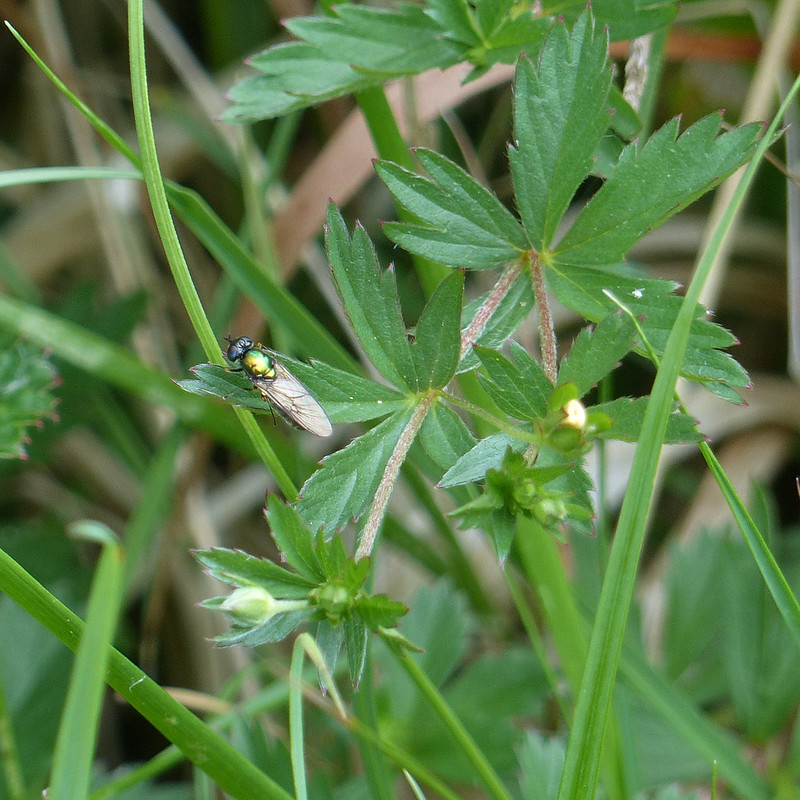
There seem to be several species of Soldier Fly with a shiny green thorax. I only got one photo – a clearer view of the abdomen might have helped with an identification, but not to worry, I’m always thrilled by shiny insects.


I seem to have seen lots of Silver Y moths this summer. It’s a migratory moth which can arrive here in the summer in large numbers. Apparently, they do breed in the UK but can’t survive our winters. They seem to move almost constantly, which is why the edges of the wings are out of focus above. However, when they stop moving and fold their wings, they almost disappear…


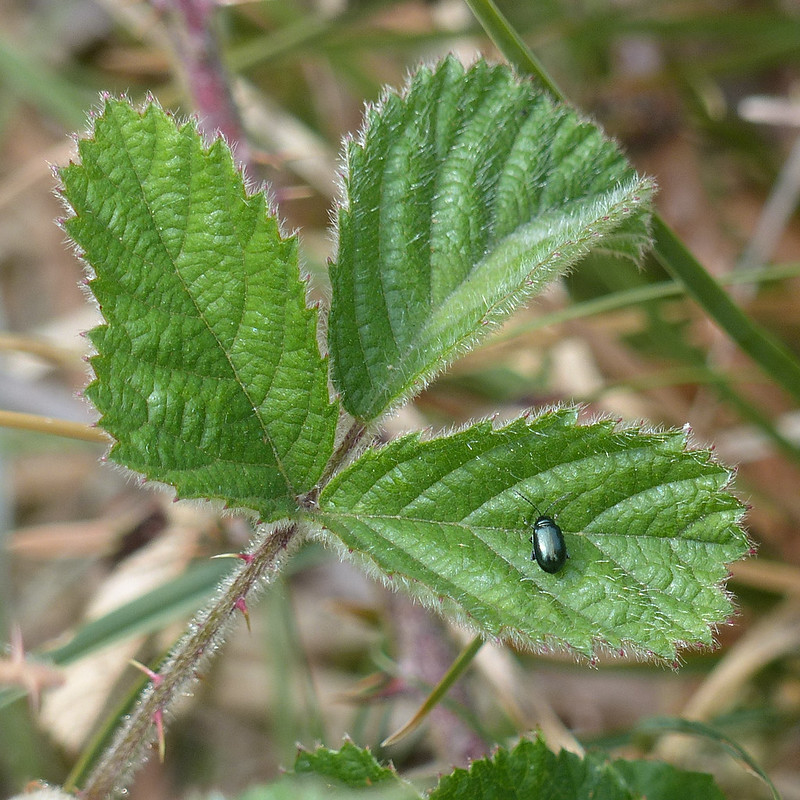
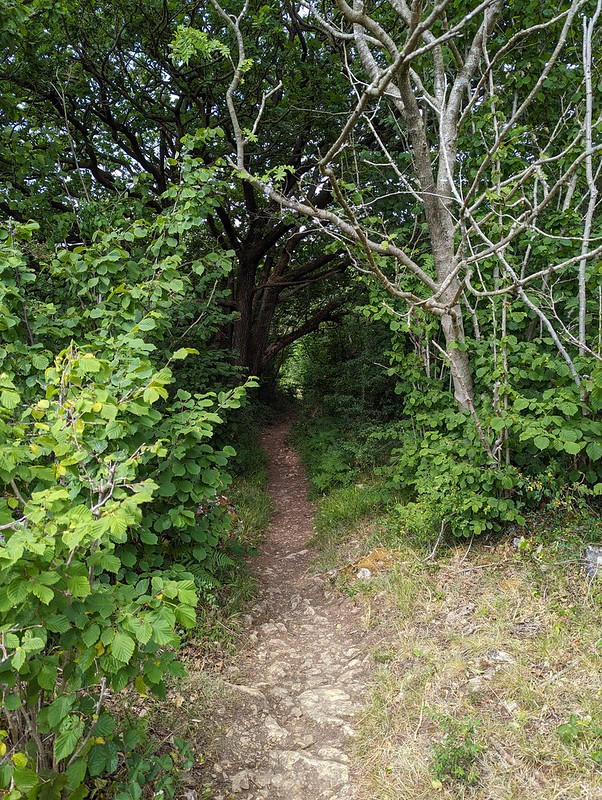
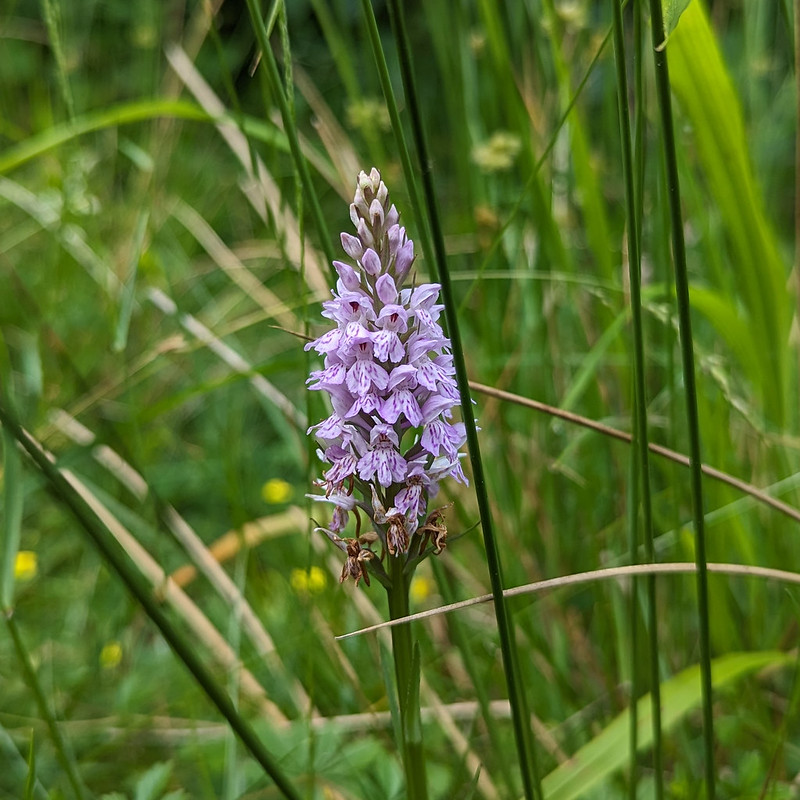
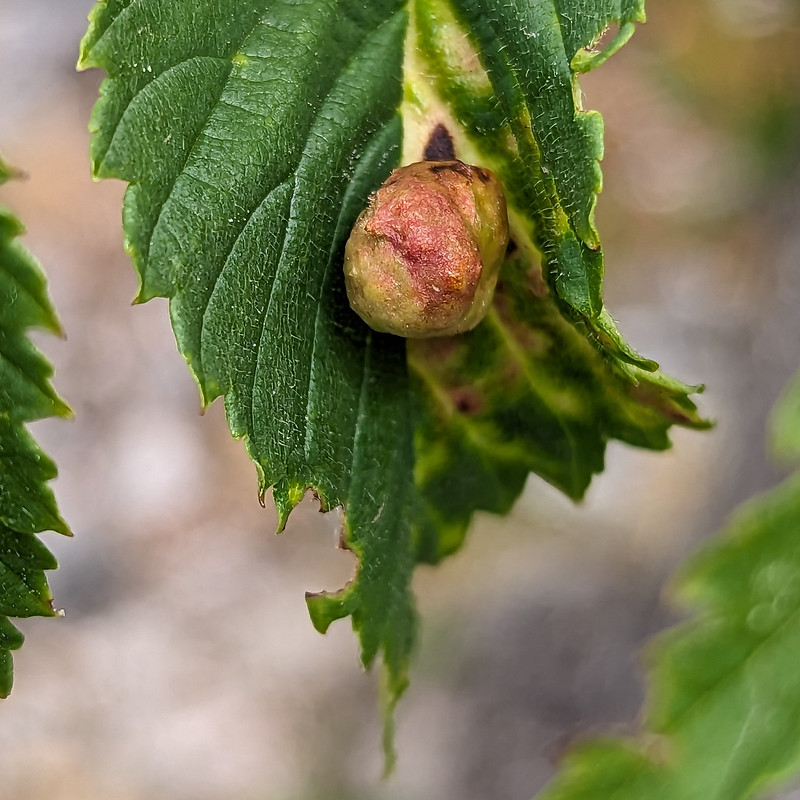
Middlebarrow Wood has several areas of limestone pavement. Many of the trees growing from the clints and grykes looked parched, with papery, yellowing leaves. This tree, on the other hand, looked very healthy, but many of its leaves held large galls.

Galls can be caused by rusts, fungi, wasps, sawflies, aphids and quite possibly other things which I’ve forgotten about. Another fascinating phenomena which I know far too little about.
I thought that if I could identify the tree, then I might have more hope of identifying the gall.
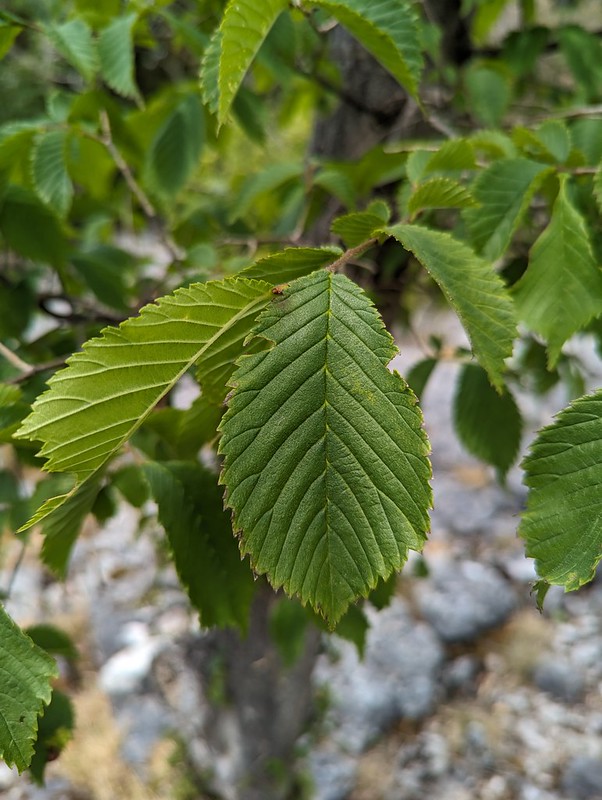
The large, pointed and toothed leaves, along with the fissured grey bark, have led me to conclude that this might be Wych Elm.
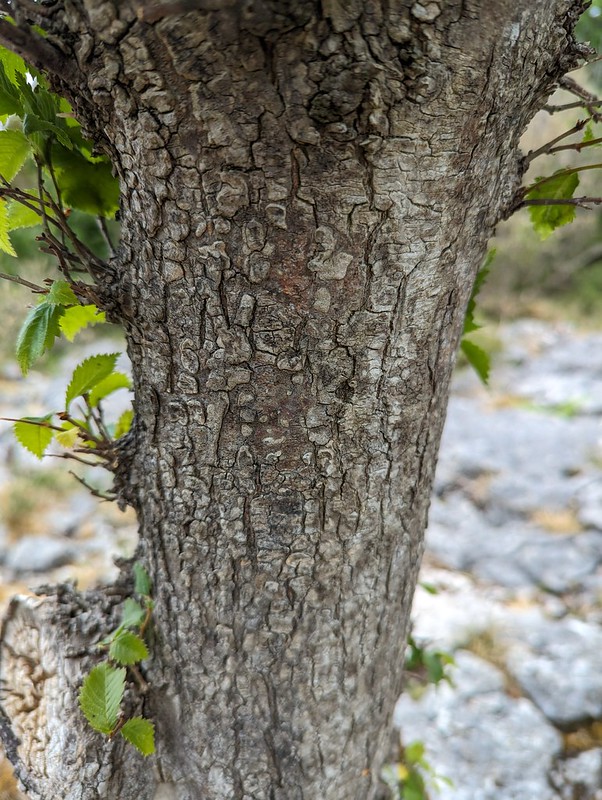
I didn’t manage to identify the galls, but if I’m right about this being Wych Elm then I suspect that the most likely occupant of the gall is an aphid.
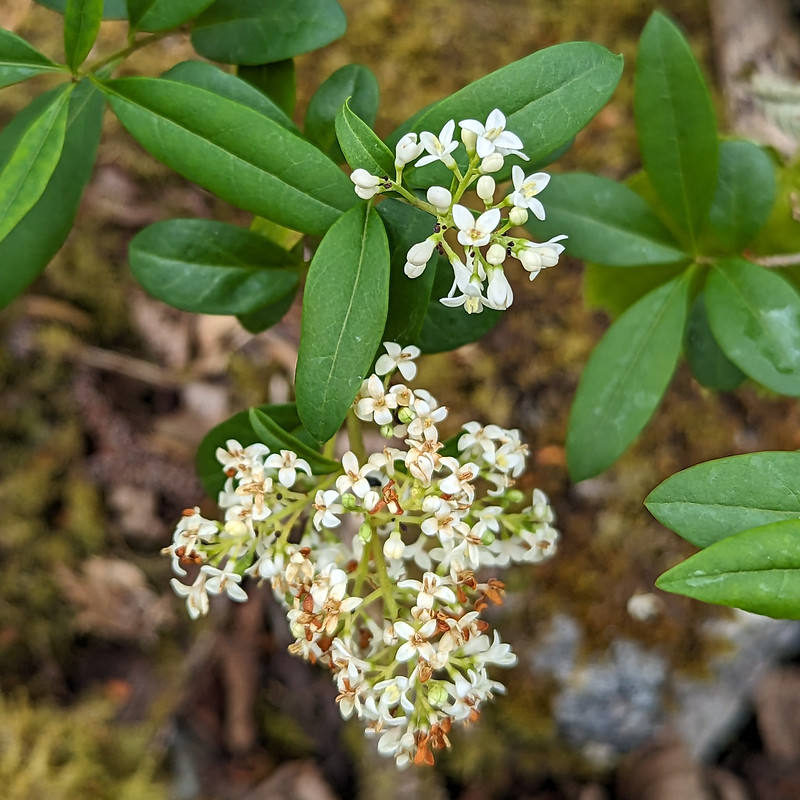
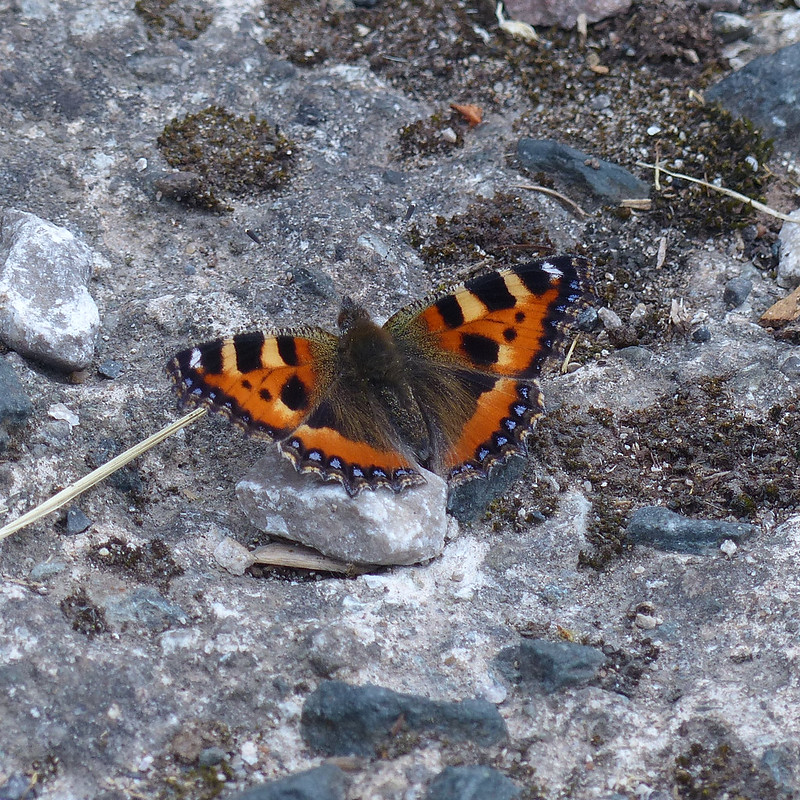
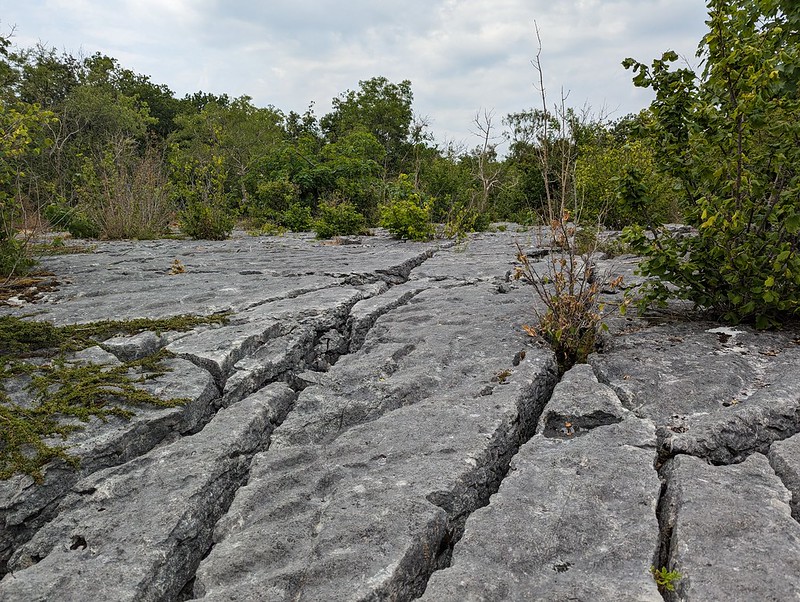

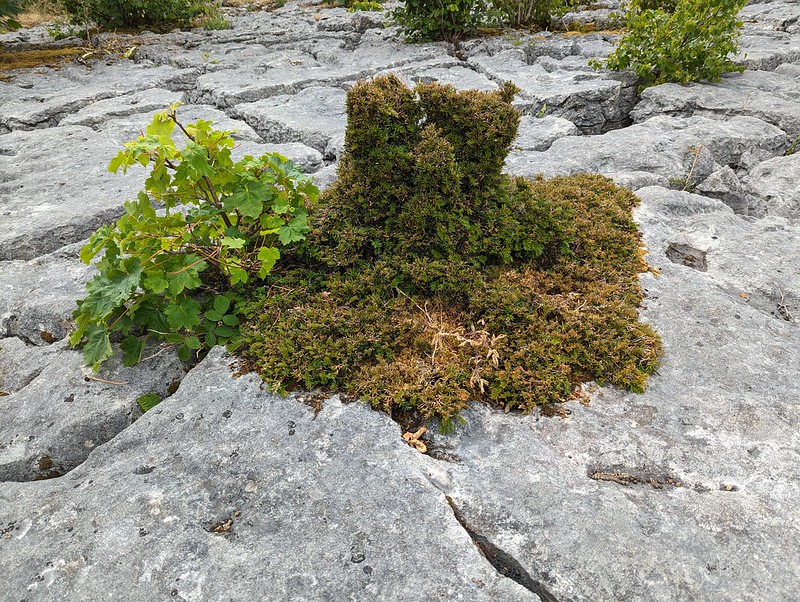
Roe Deer seem to be very fond of Yew and will keep small saplings neatly trimmed like this one.
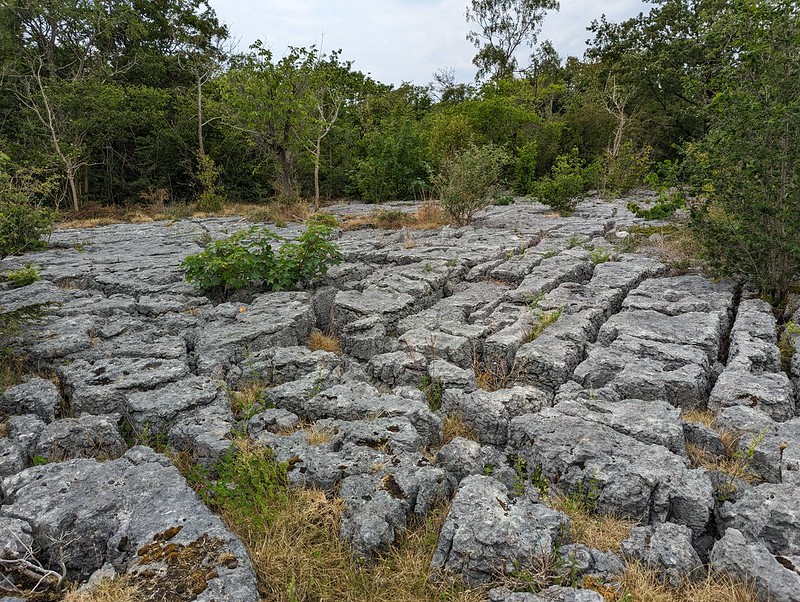

Apparently, the flesh of Tinder Fungus burns slowly, making it good for lighting fires.
“This is one of the bracket fungi found among the possessions of Otzi the Iceman, a 5000 year old man whose body was preserved in a glacier in the Ötztal Alps on the border between Austria and Italy, where it was discovered by hikers in 1991. It seems likely that Otzi was carrying this material in order to light a fire at the close of a day whose end he did not live to see.”

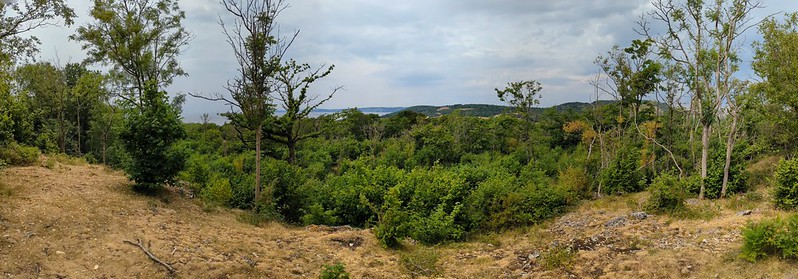

I’m obviously not the only person to admire the partial view from this spot in Middlebarrow Wood.


On the Row, I was admiring roses again, but this time it was garden varieties.
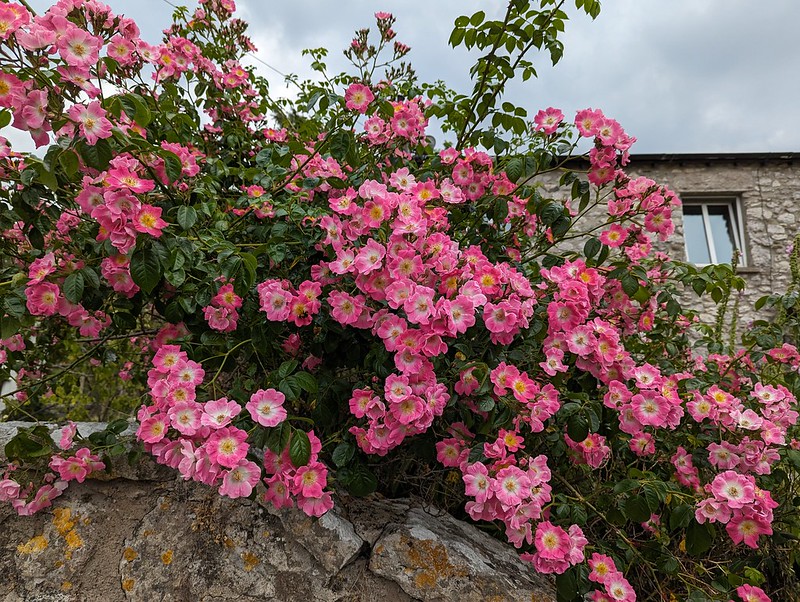
This pink species is very popular in gardens on The Row and seemed to be flourishing everywhere.

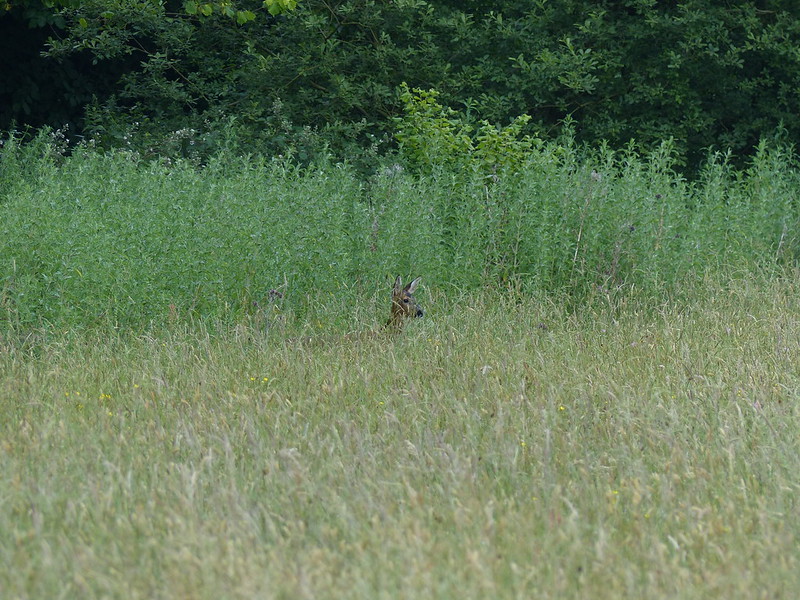
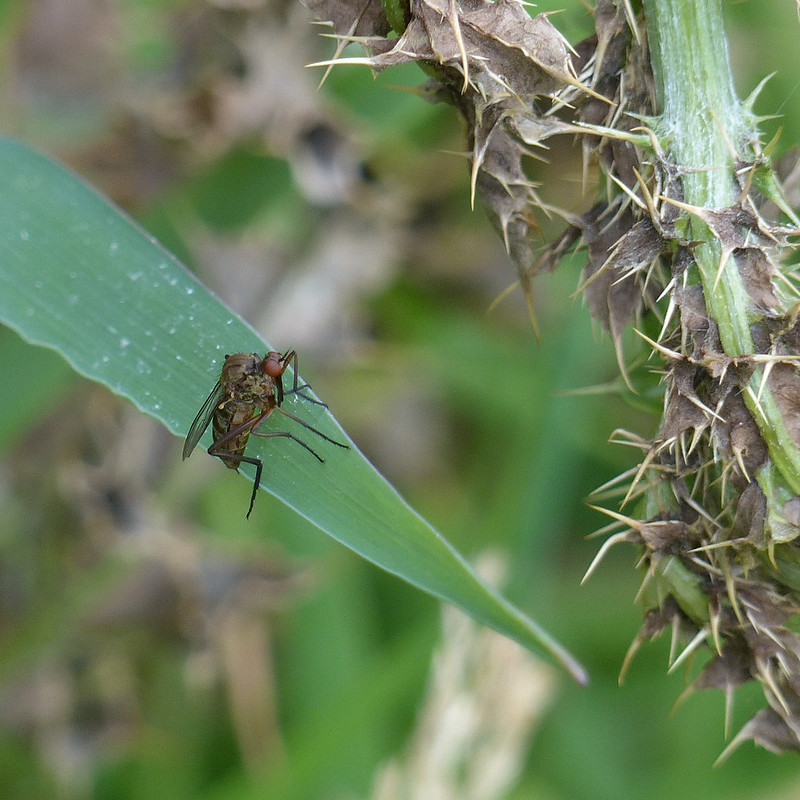

Hagg Wood – Bottom’s Lane – Burtonwell Wood – Lambert’s Meadow – Bank Well – The Row – Gait Barrows – Hawes Water – Limestone Pavement – Hawes Water Summer House – Sixteen Buoys Field – Waterslack – Eaves Wood – Elmslack.

Mid-June and a rambling route which criss-crossed itself several times, and which, despite being a mere seven miles, took me over five hours to walk, probably because of the constant distractions – I took almost five hundred photos, almost all of insects of one sort or another.
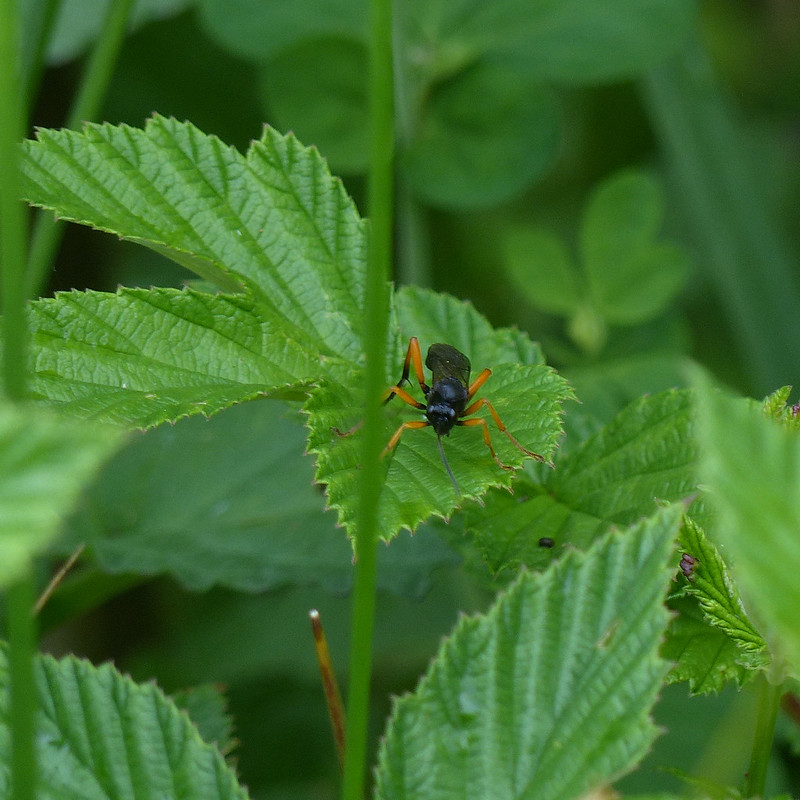
It felt at times as if the creepy-crawlies were putting on a show for my benefit. Having said that, I’m not sure that I’ve become more observant, but I’ve certainly become more aware that insects can have a close relationship with particular plants and that it’s often worth pausing to take a closer look.
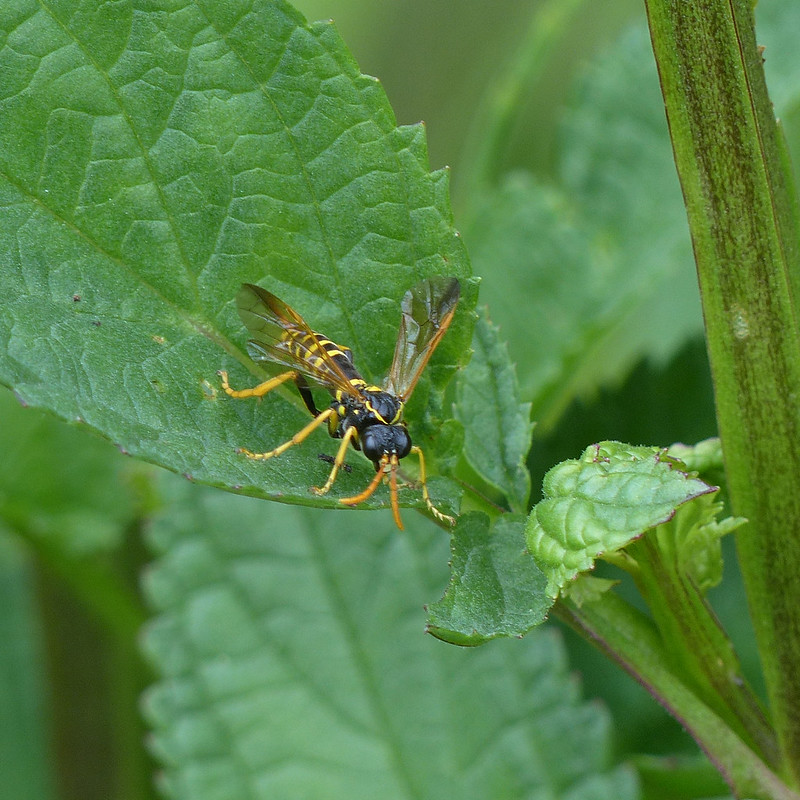
These Figwort Sawflies are a case in point. There were quite a few about at Lambert’s Meadow, always on or near to the Figworts which grow there and which is the food plant of the larvae of this species.
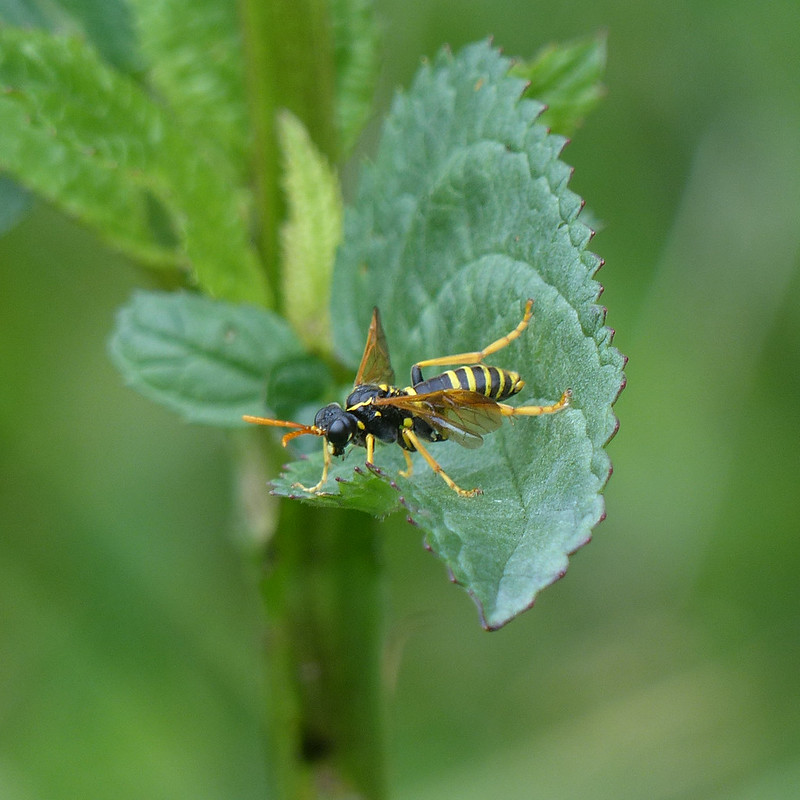
I thought they were pretty striking and their bold colours seem to have lent themselves to photography on what was quite a dull day when some of my photographs, particularly of damselflies and hoverflies, for example, didn’t come out too well.
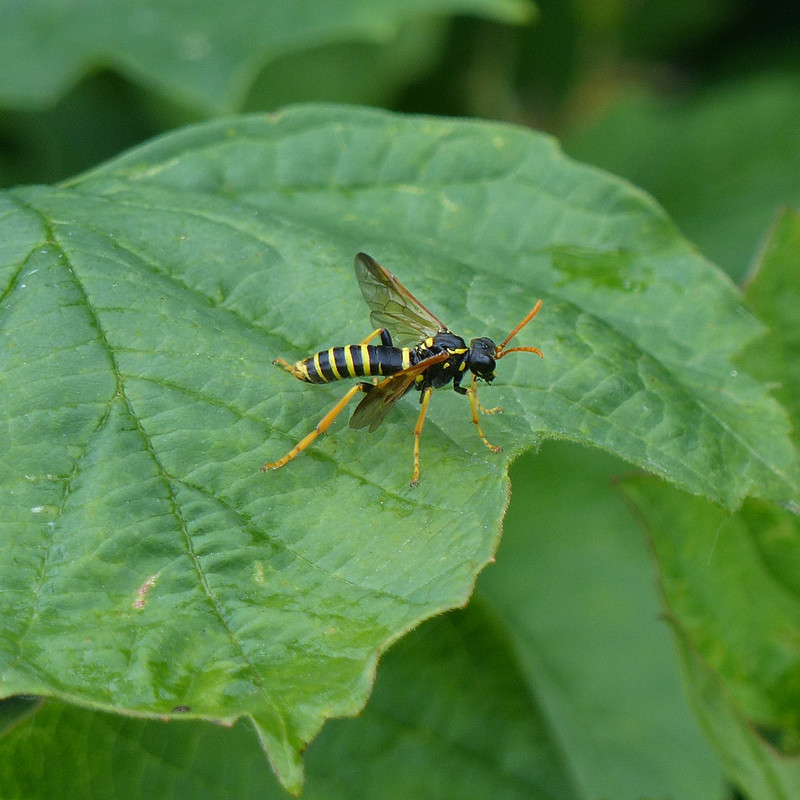

There were a few mating pairs about.
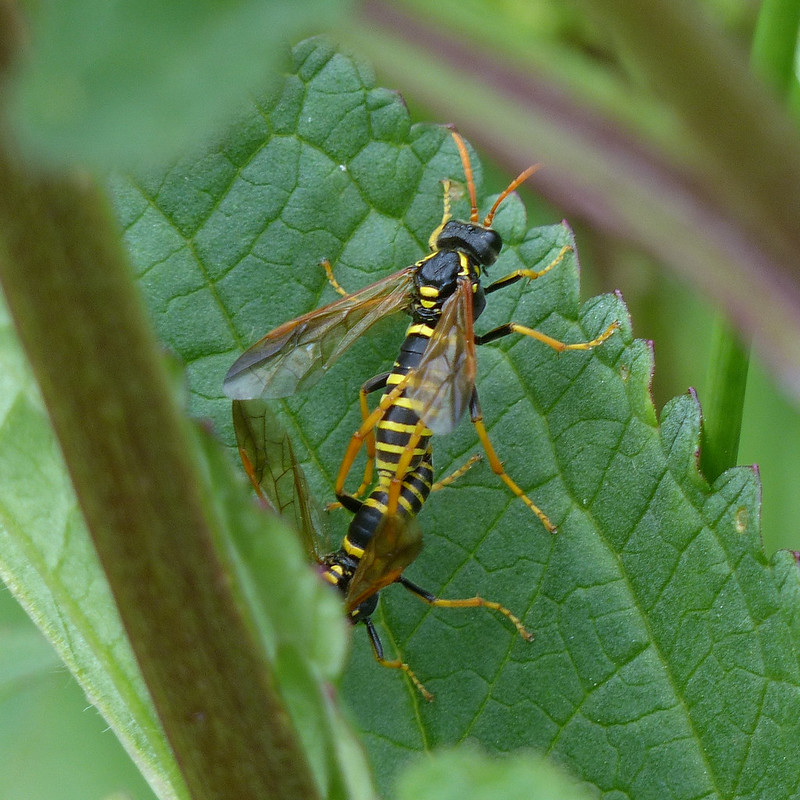
What struck me about the mating pairs was the extent to which they were constantly on the move, twisting and turning, occasionally flying short distances, all whilst still coupled together.
This pair…
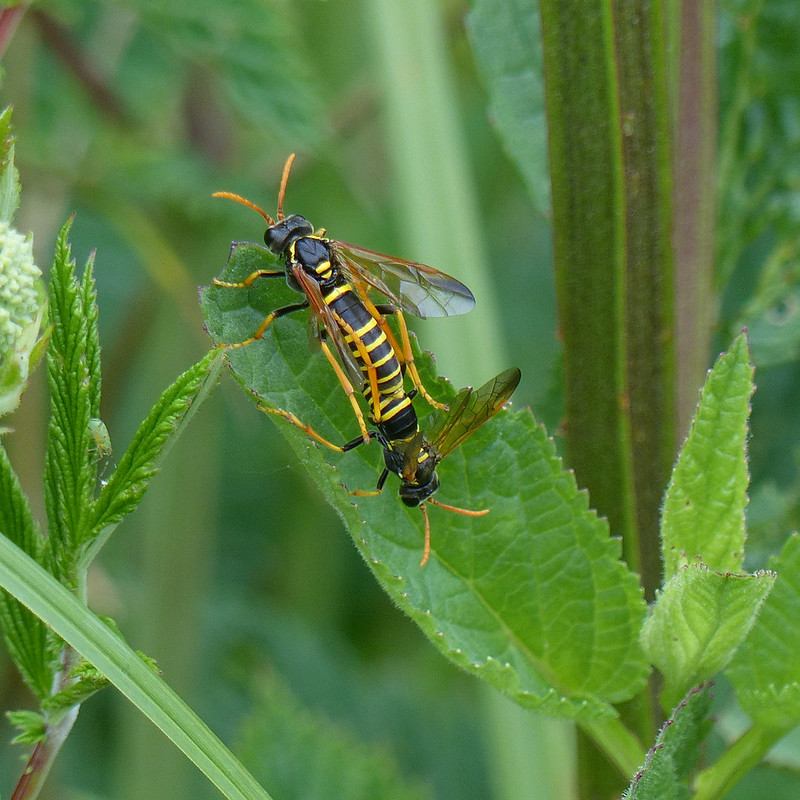
…circled around this Figwort leaf before briefly taking to the wing and hopping over to an adjacent Meadowsweet flower…

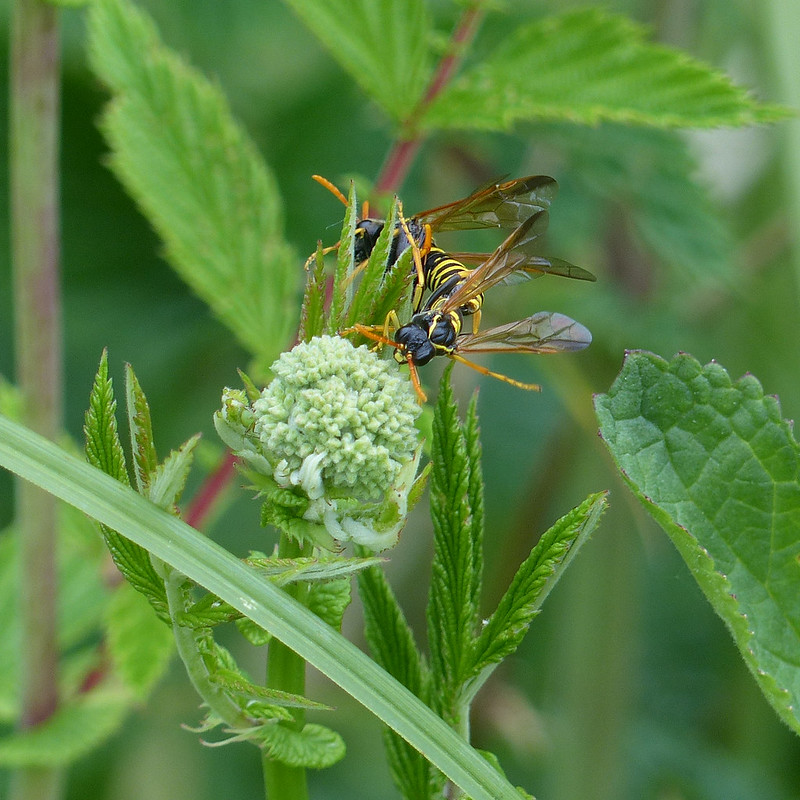
Then briefly touring that before heading back to the Figwort.
I’d been seeing photographs online of Figwort Weevils, tiny creatures (3mm long) which have a very striking grey pattern on them. Now that I was on the lookout, I realised that there were loads of them on our local Figworts. They’re a bit tiny for my camera…

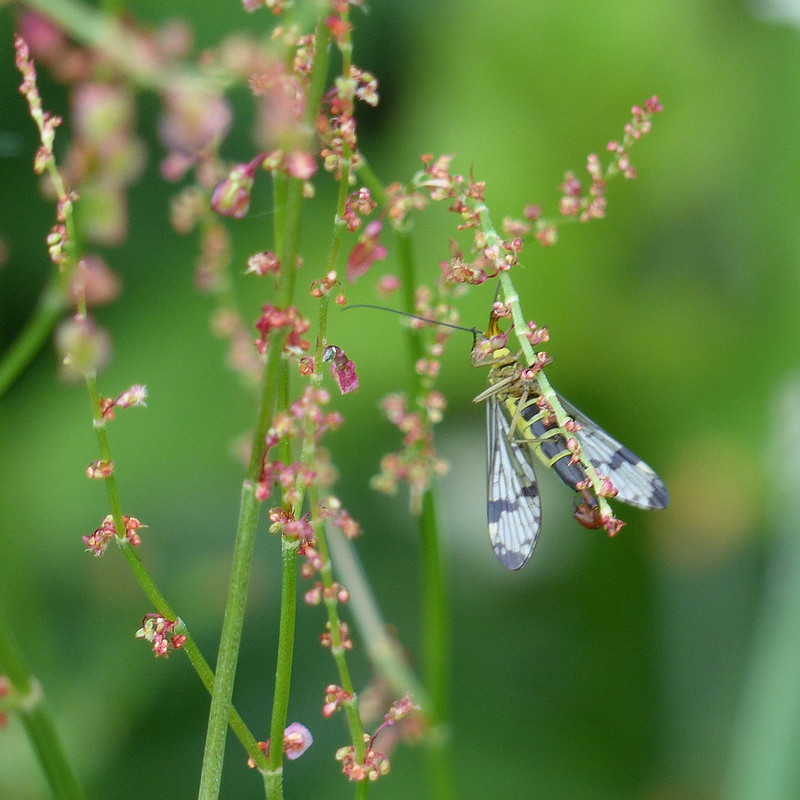
I first encountered Scorpion Flies a few years ago, and I’m still always pleased to see them. There seemed to be plenty about on this day.
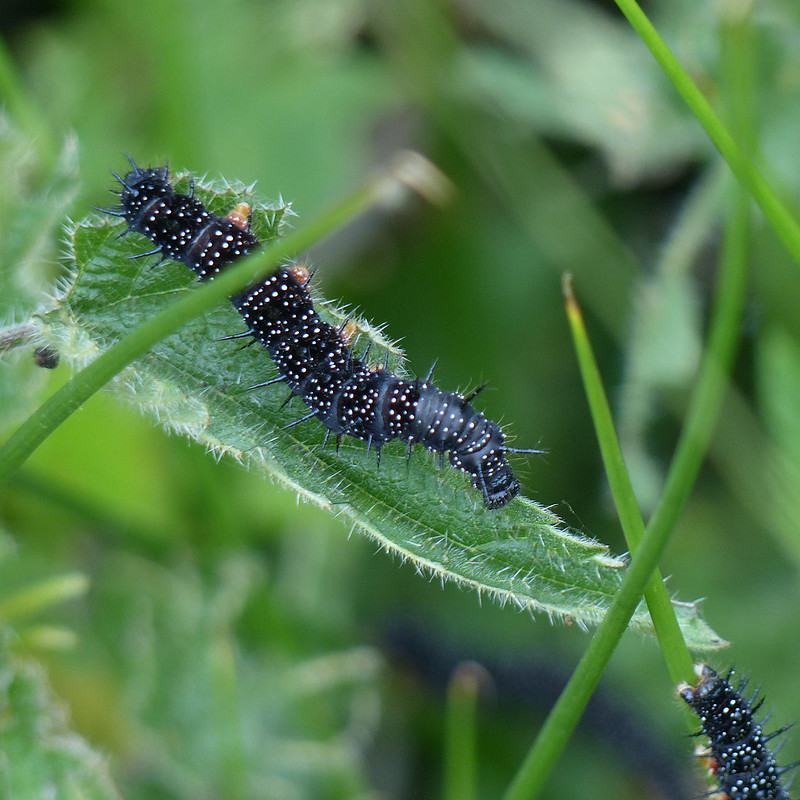
There were far fewer Peacock caterpillars on the nettles by the Guelder Rose thicket. Whether they’d been eaten or had dispersed to pupate I don’t know. Perhaps a bit of both – I think this was the last time I saw them.

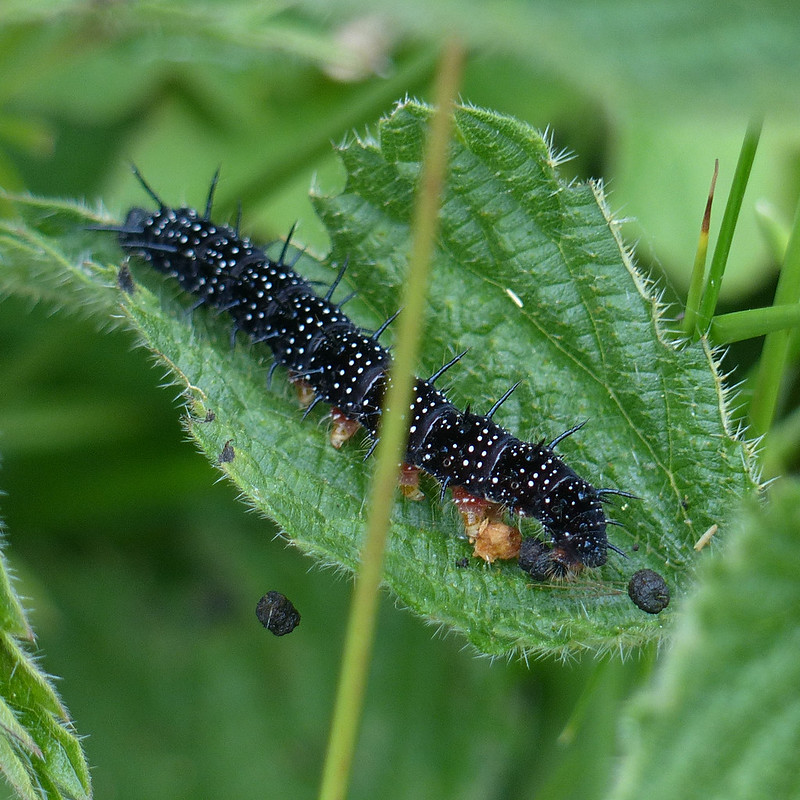
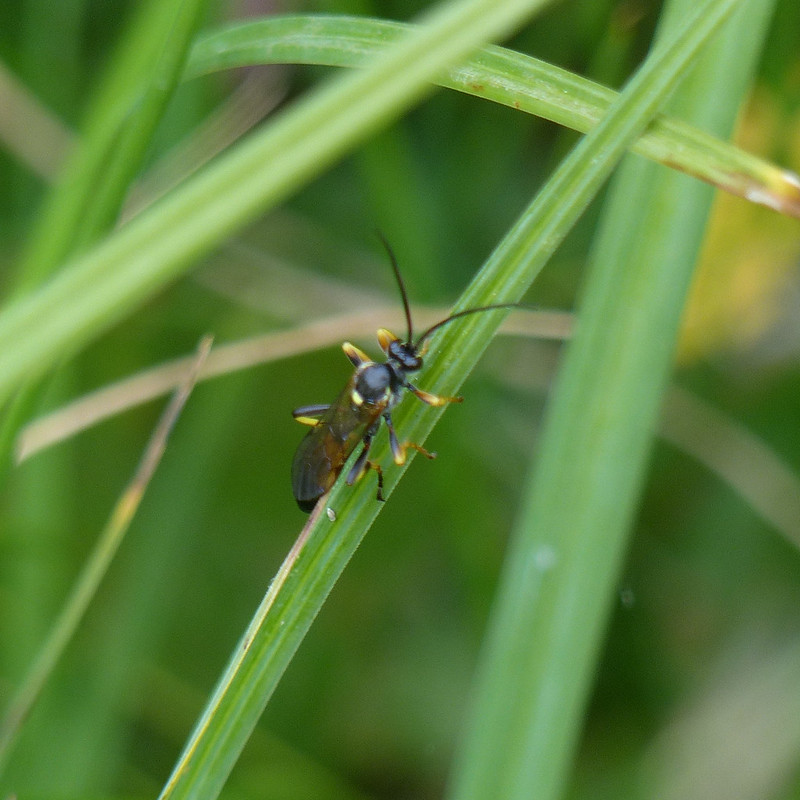
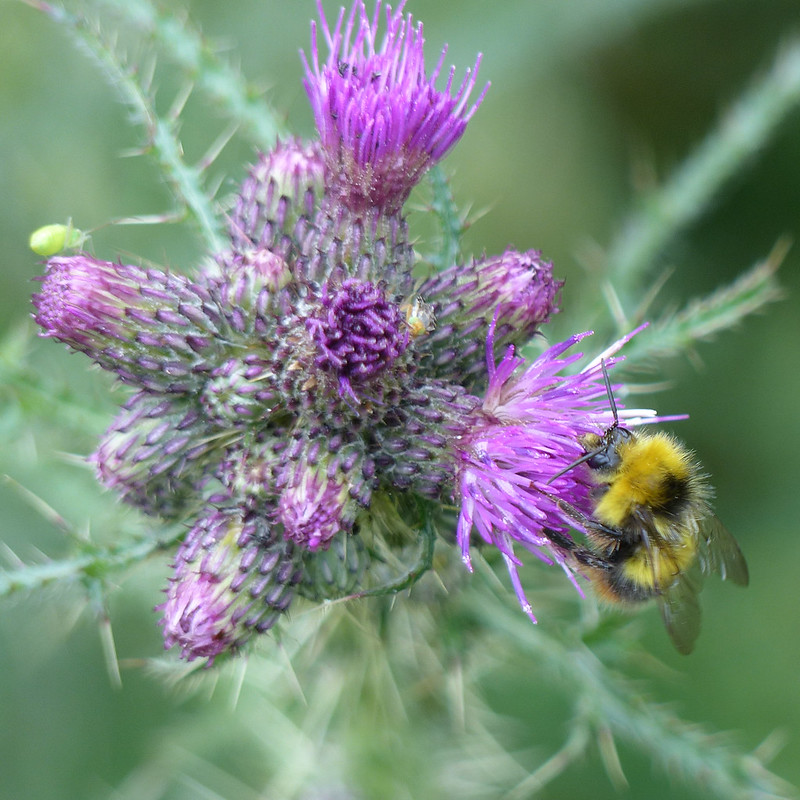


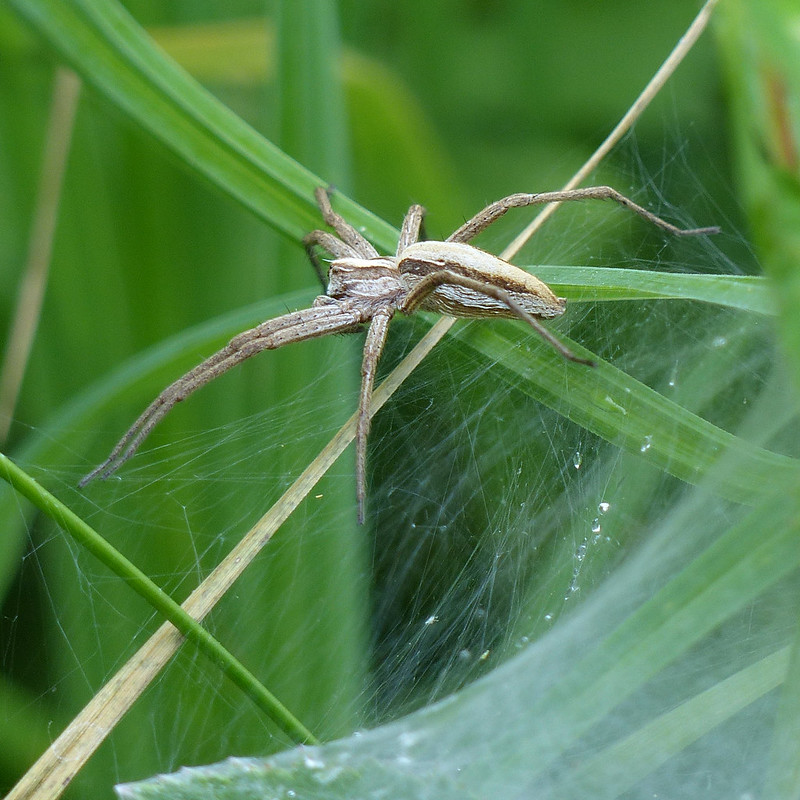
The Nursery Web Spider carries her eggs around in a silken sac before weaving a nest for her babies. Hopeful males woo females by presenting them with a wrapped body of captured prey.
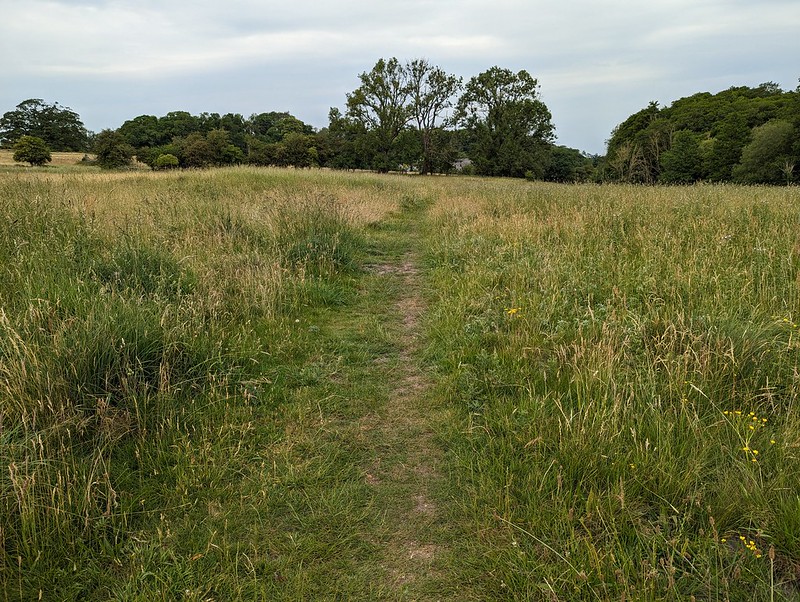

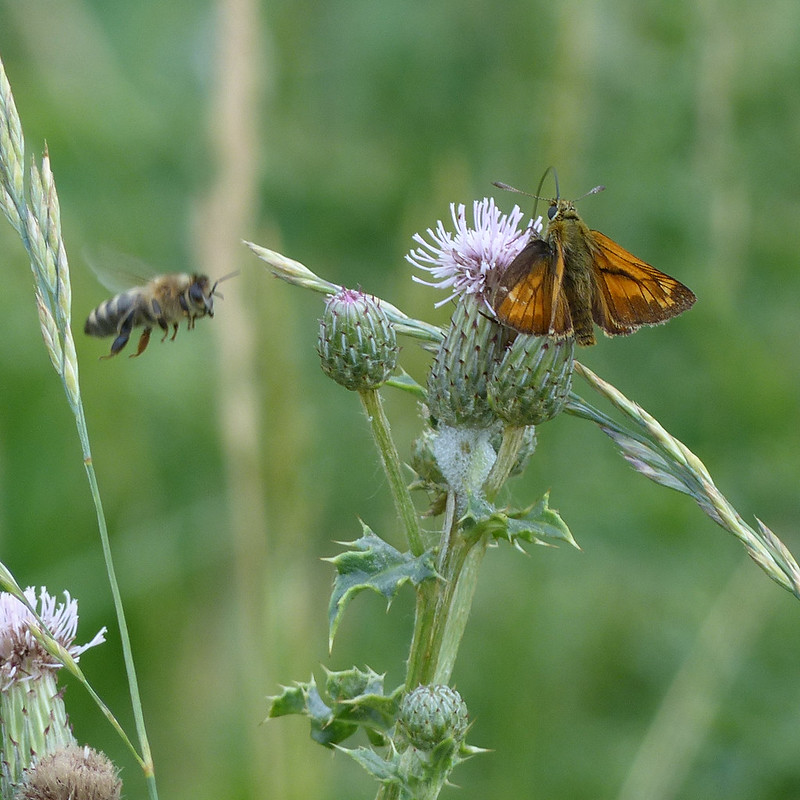
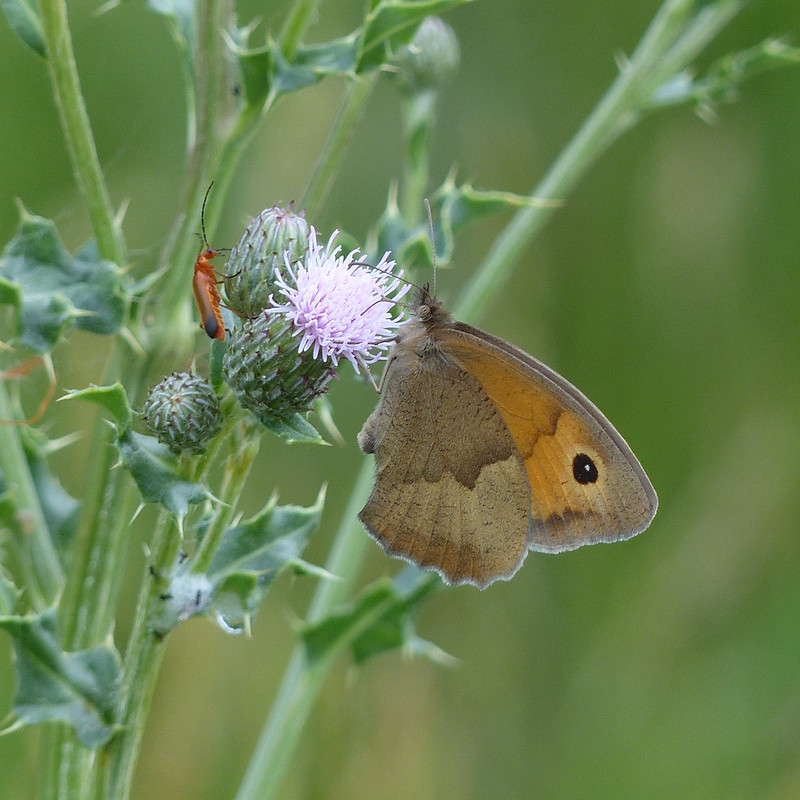

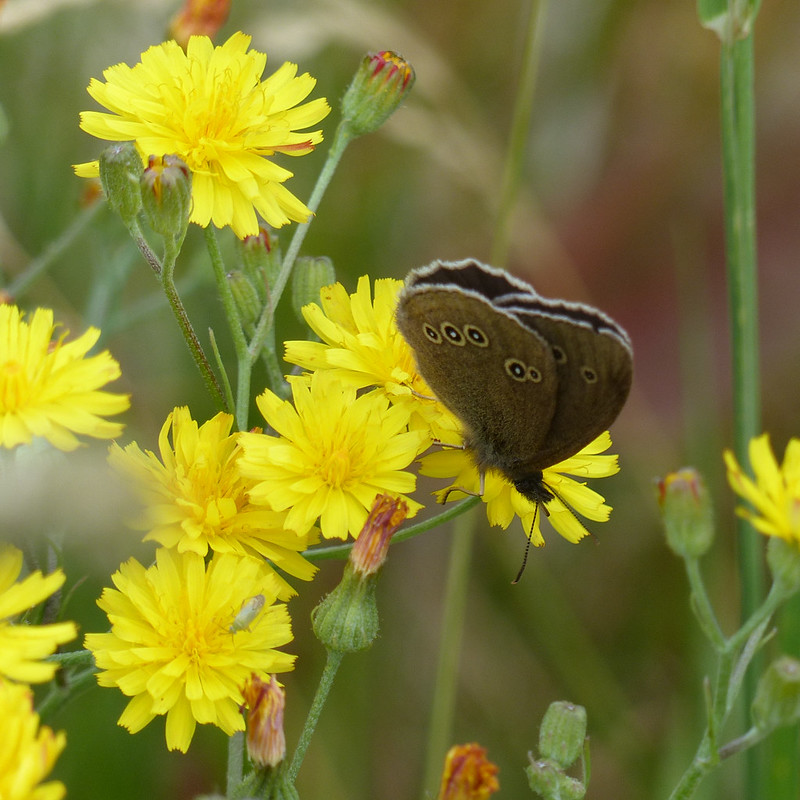

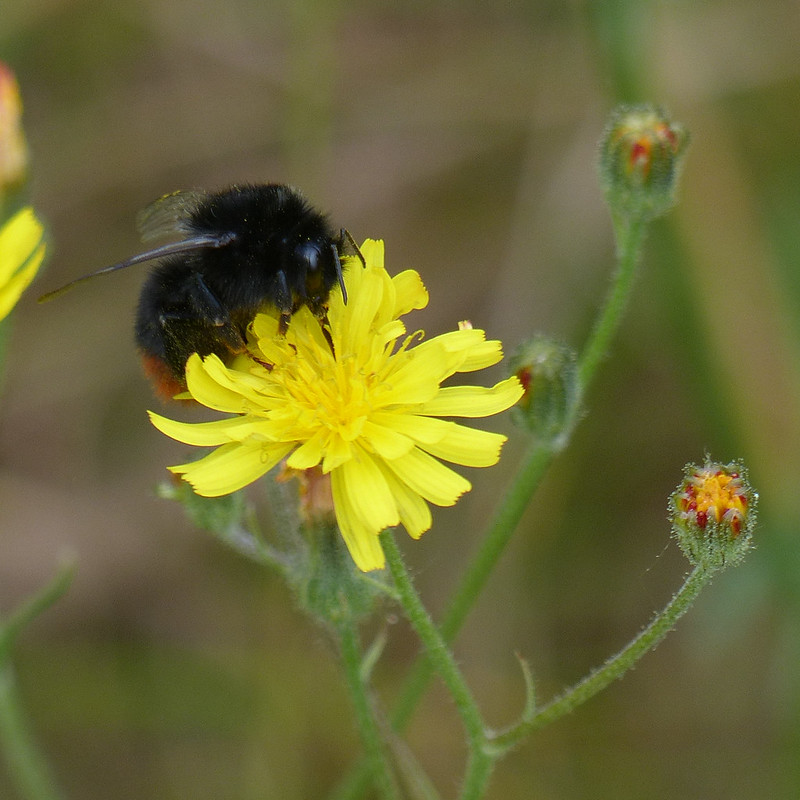
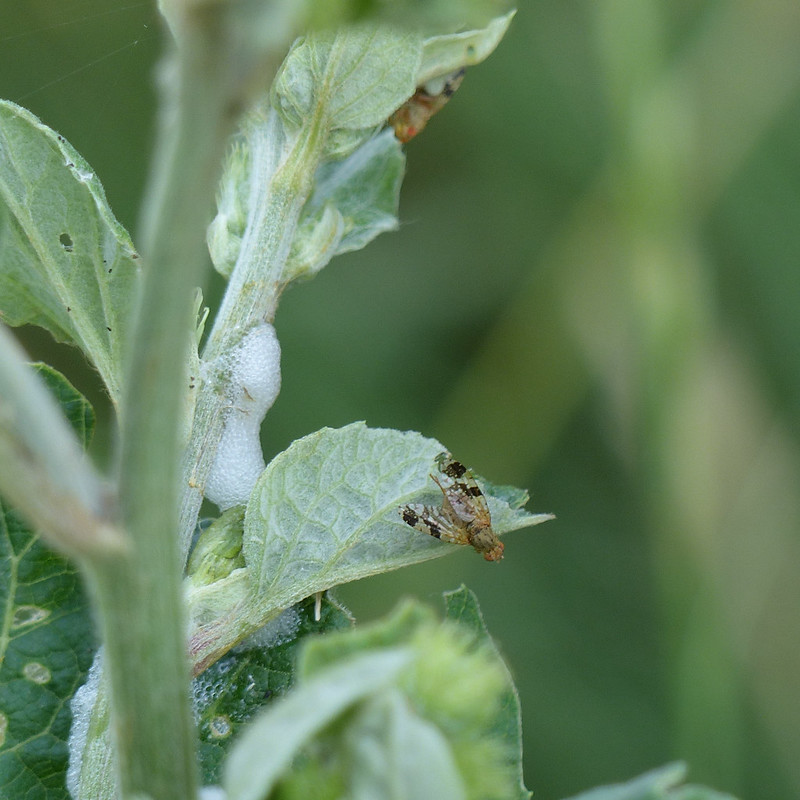
I passed several large Burdock plants which were generally very busy with Aphids and attendant Ants, and also with these tiny flies. Trying to identify these lead me down an interesting wormhole: there are numerous species of small fruit flies which have elaborate and often very pretty patterns on their wings. Fascinating.




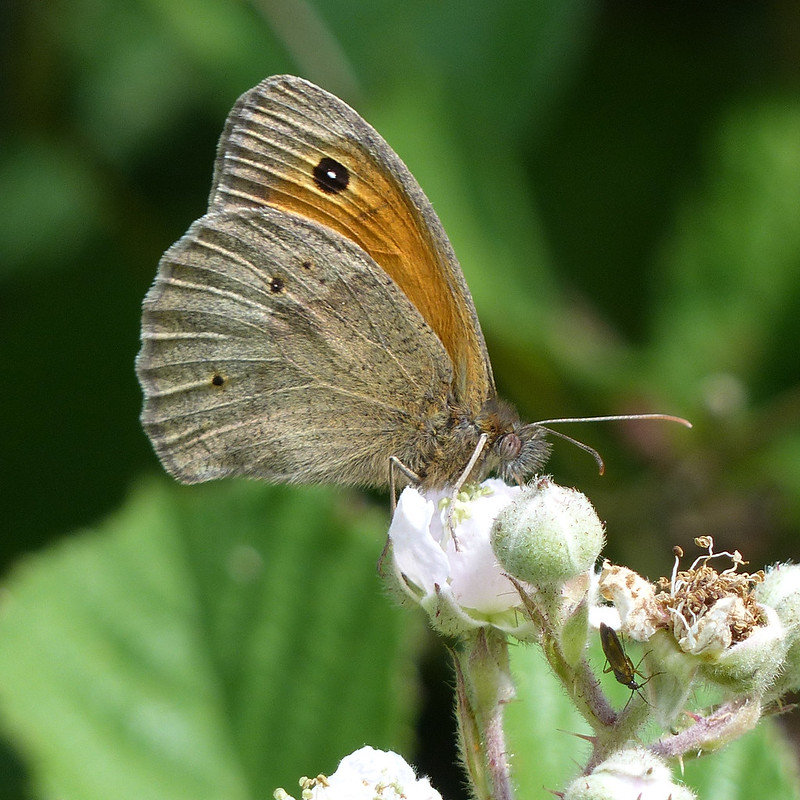
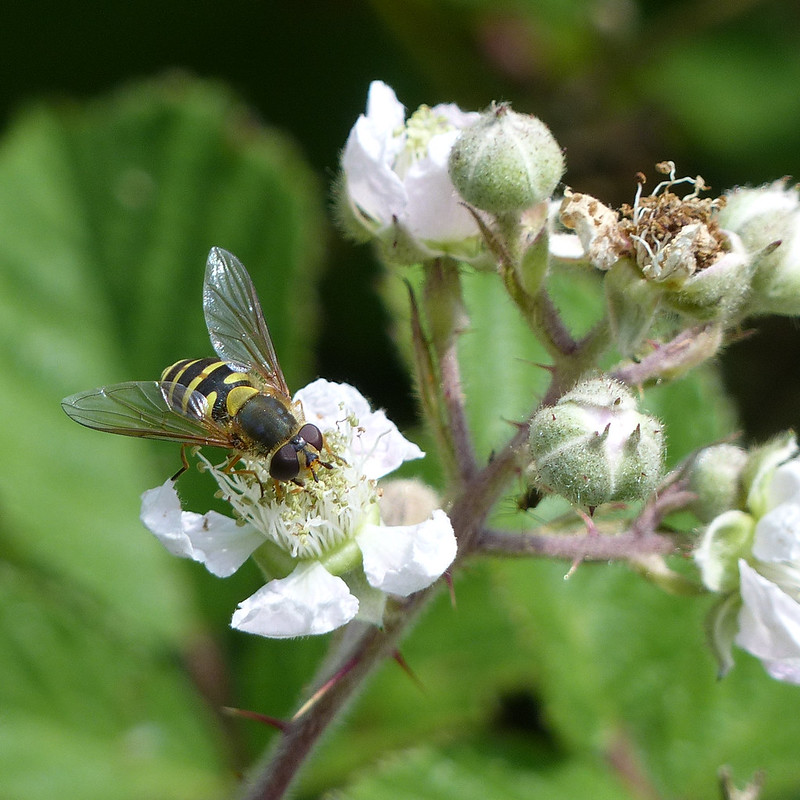

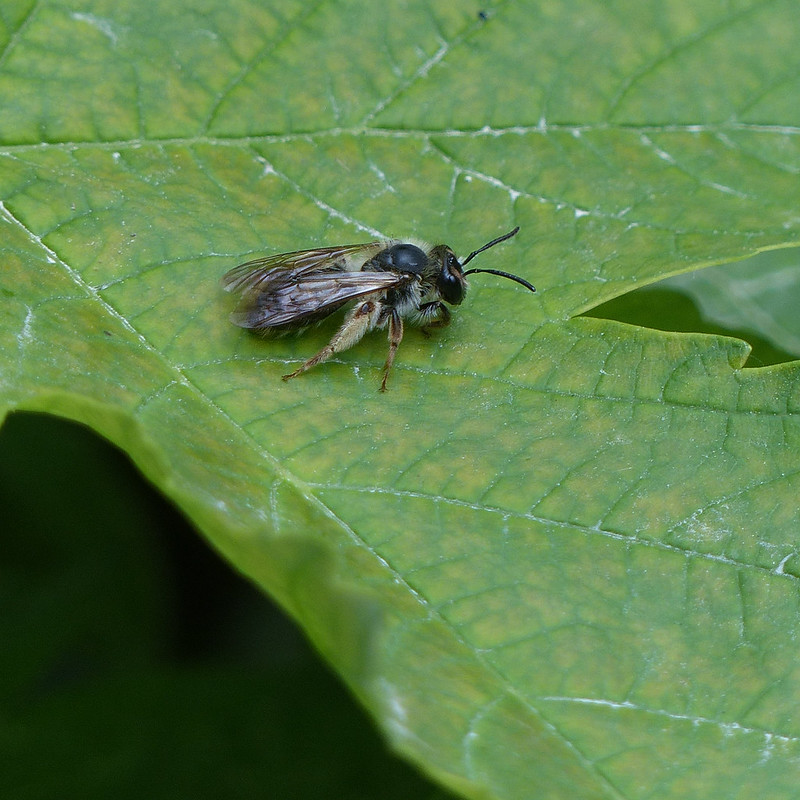

Close to Hawes Water there were two large Belladonna shrubs. They were up a bank behind lots of other vegetation and so, perhaps fortunately, rather inaccesable.
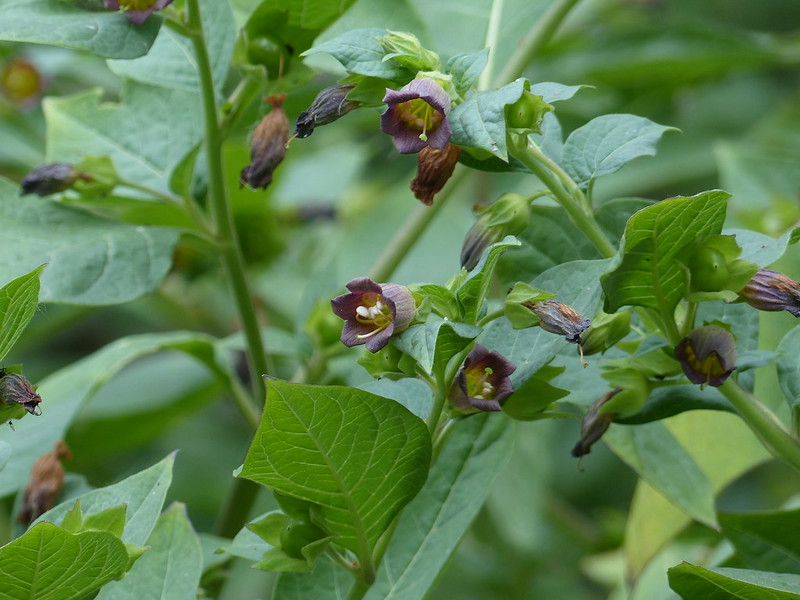
Needless to say, every part of the plant is extremely poisonous.

Years ago, bushes grew, for a couple of summers, by the River Kent between White Creek and New Barns, but I haven’t seen any since.
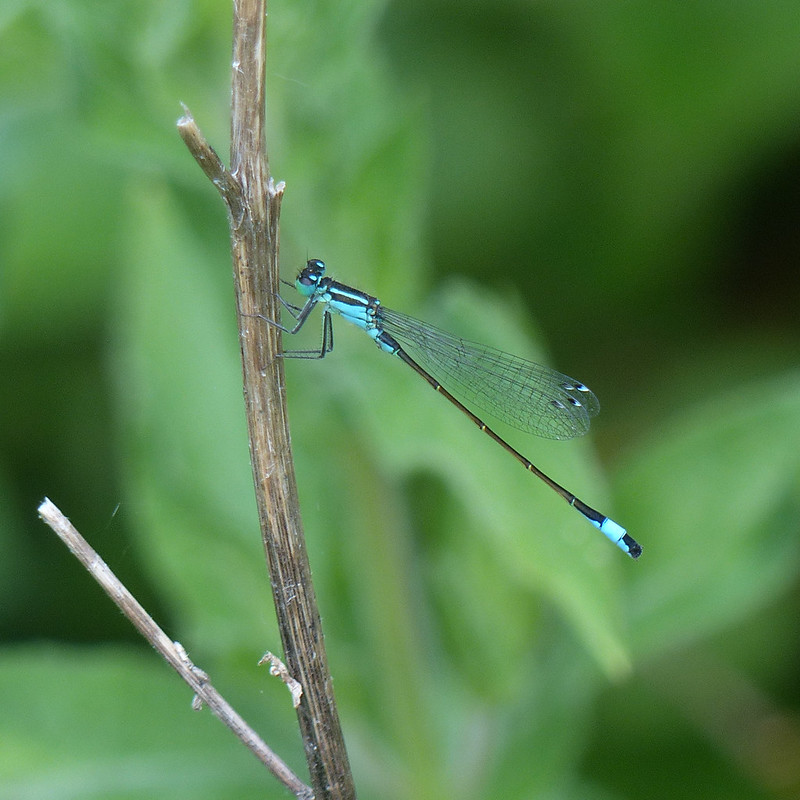
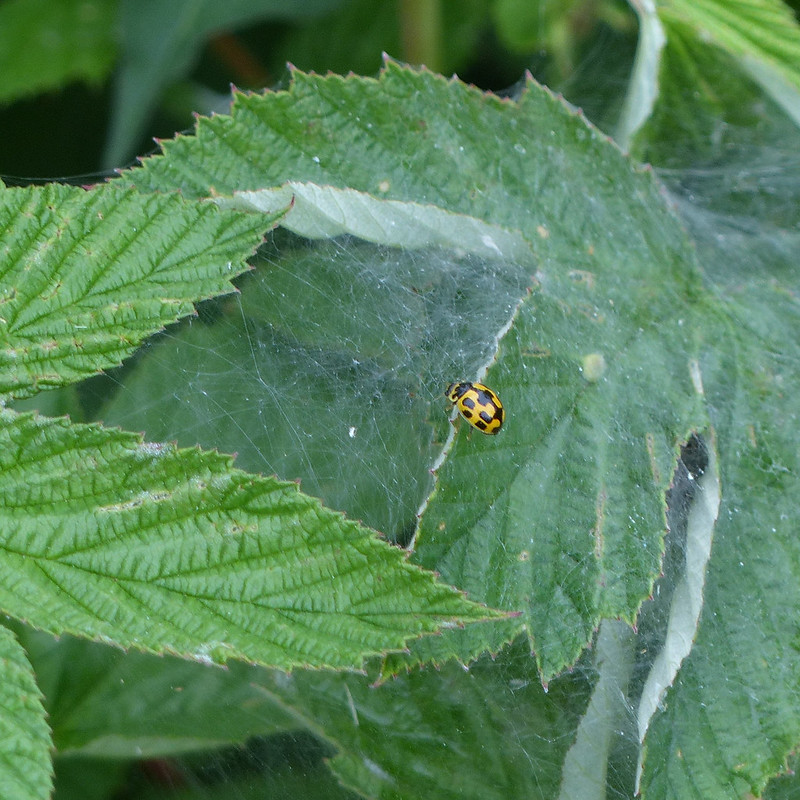
I liked ‘quattordecimpunctata‘ which seems like much more of a name to conjure with than ‘fourteen spot’.


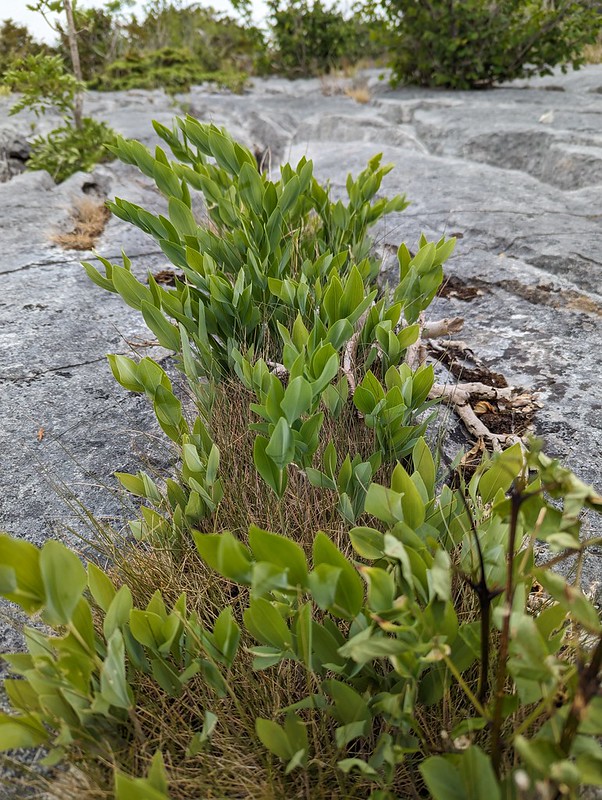
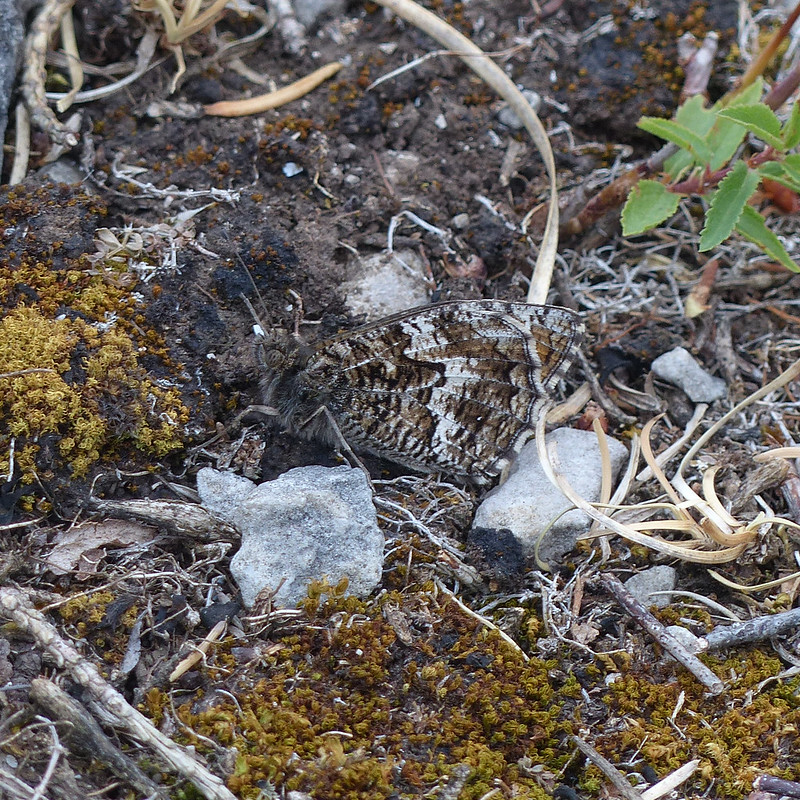
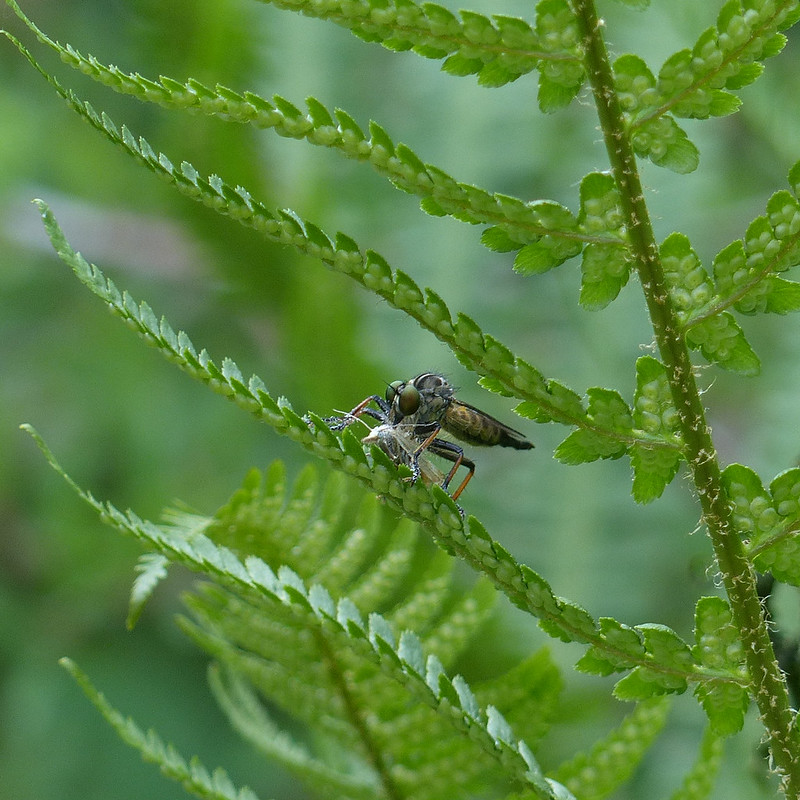
There always seem to be lots of tiny day-flying moths about. Usually, they’re briefly visible as they flit from one plant to another, then disappear as they land. This unfortunate moth was intercepted mid-flight however, but this small but ruthless predator.

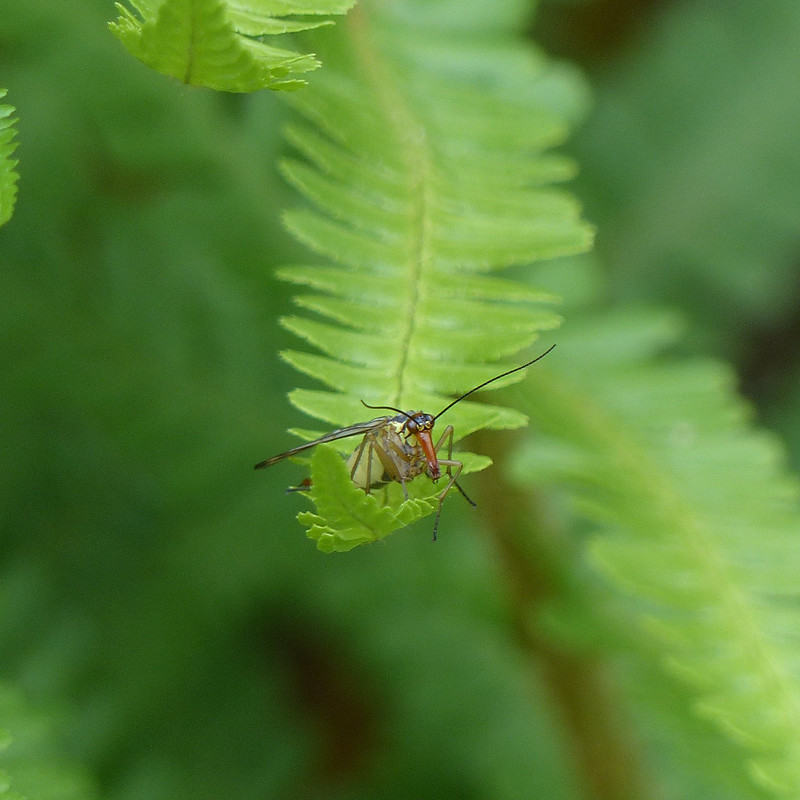



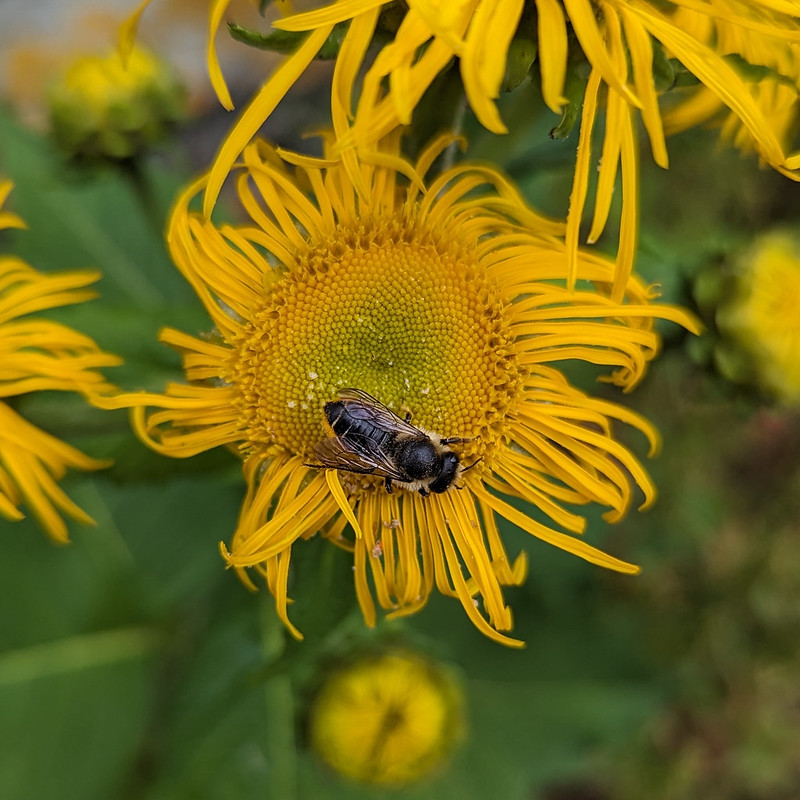
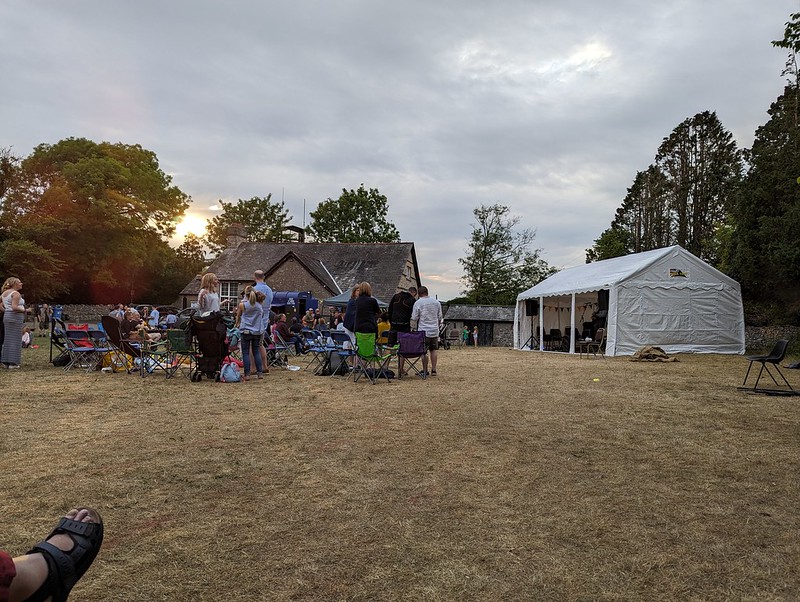
After a couple of years absence, the village Field Day was revived this summer. After years of helping to organise it, I’m no longer involved, but the new team seem to have done a superb job. In the evening, there was music on the field, with three singers, all of whom were very, very good – much better than you might expect at a village fete. All in all, a very enjoyable day.